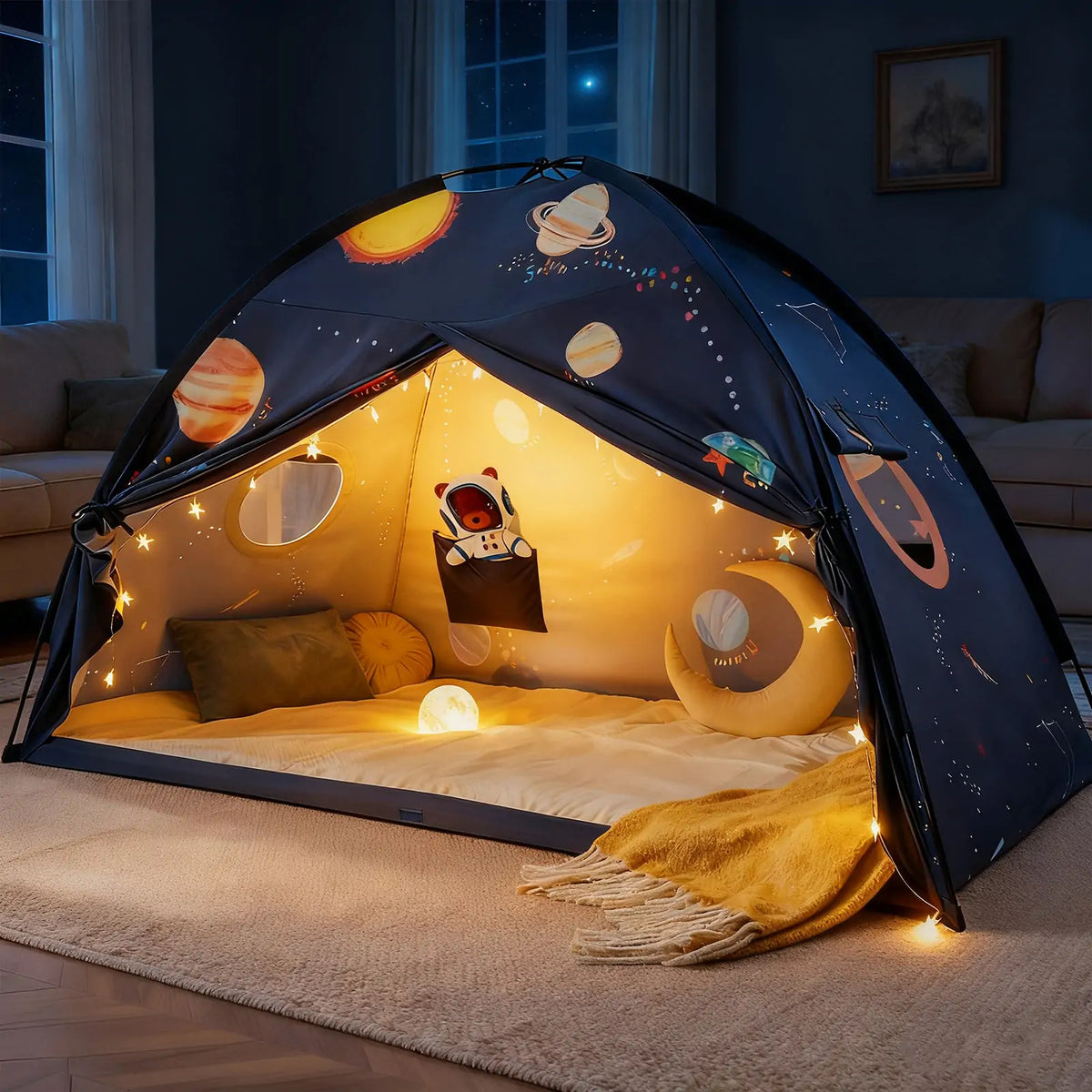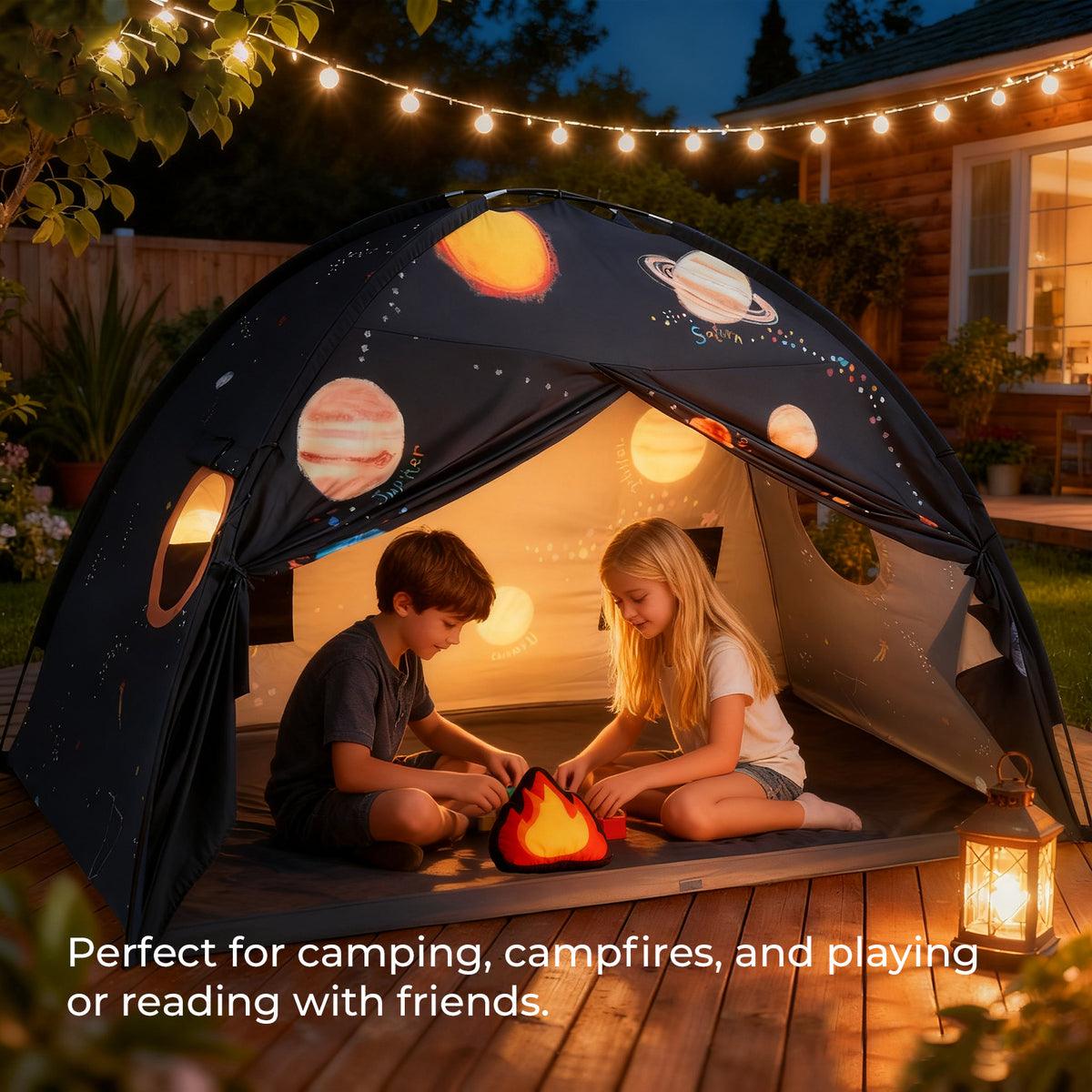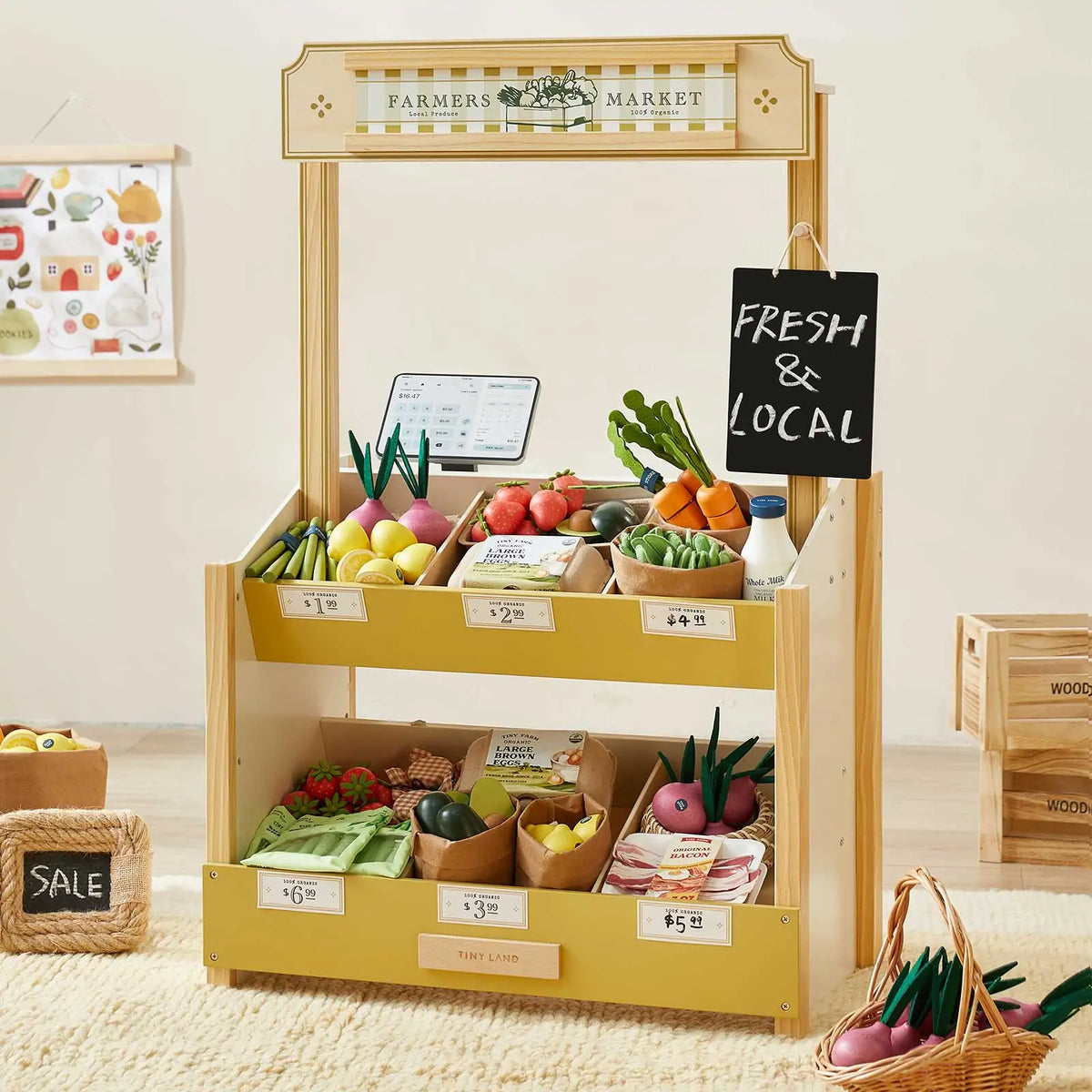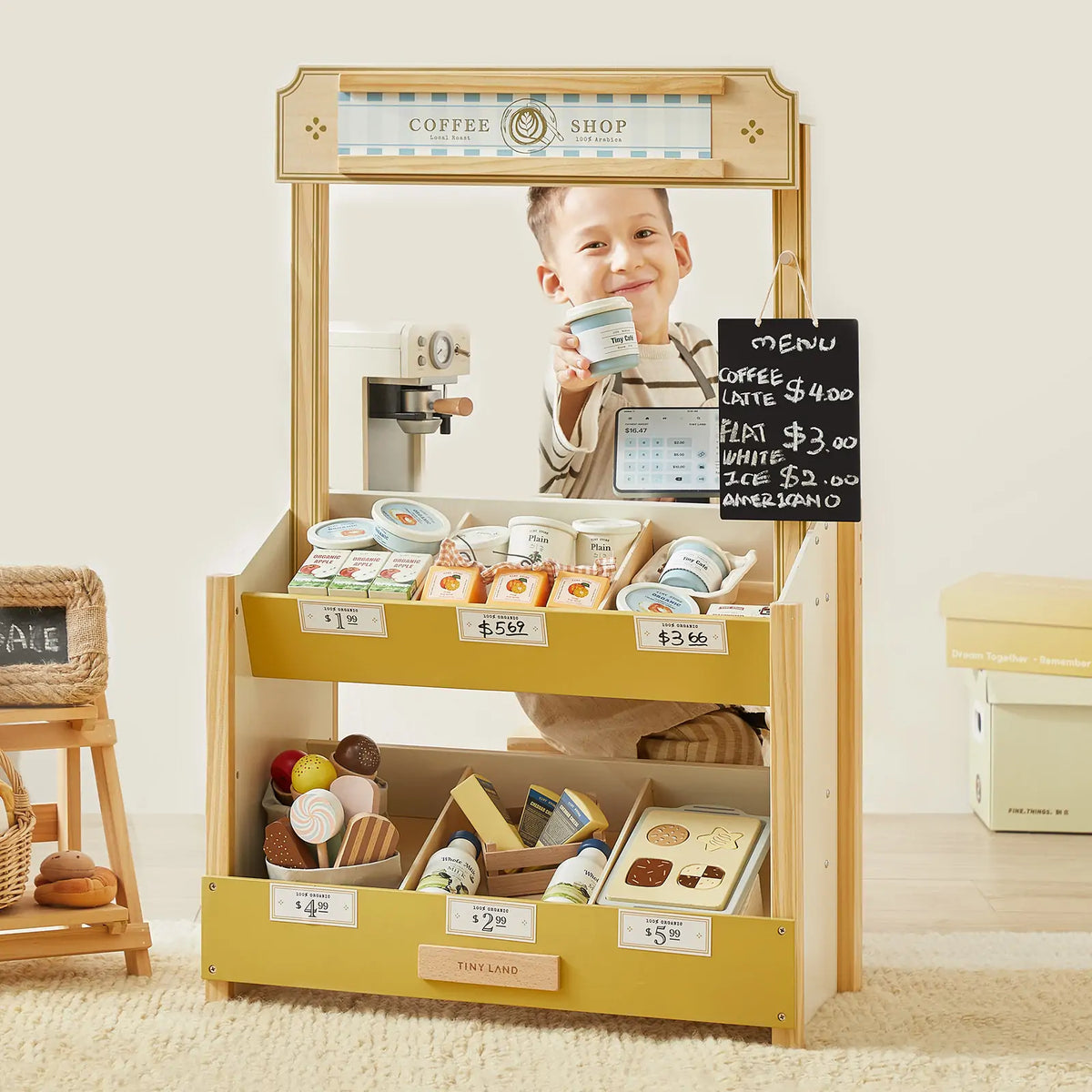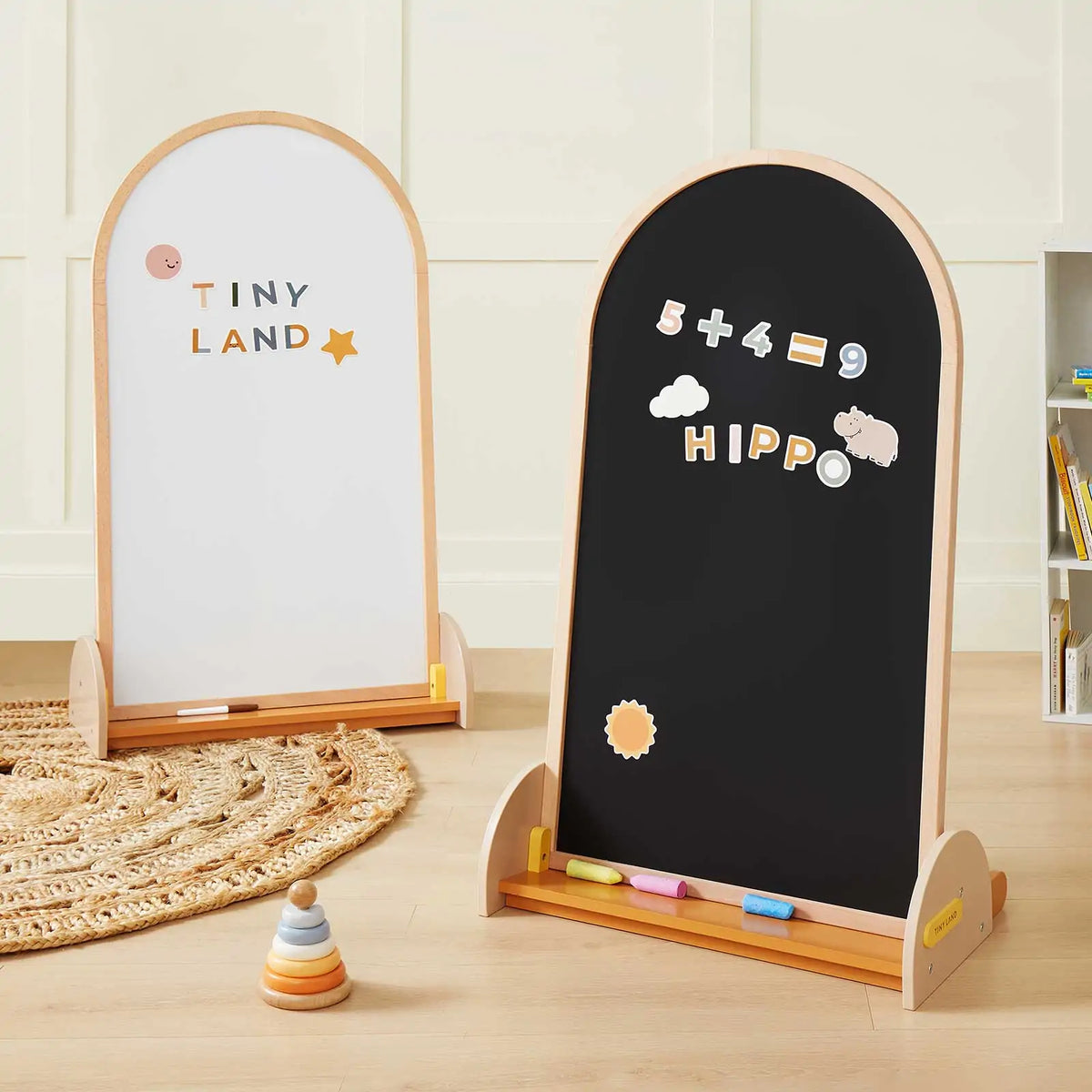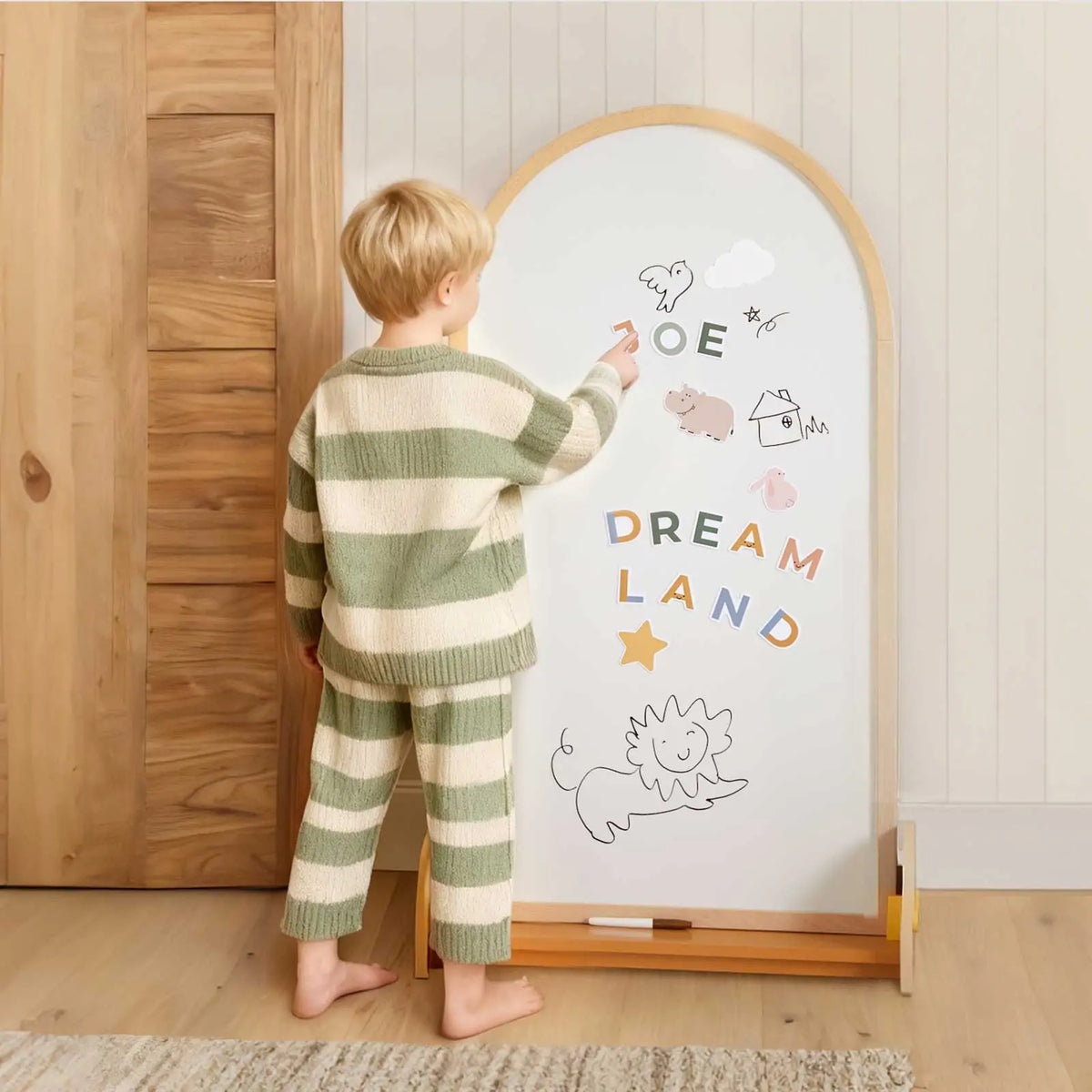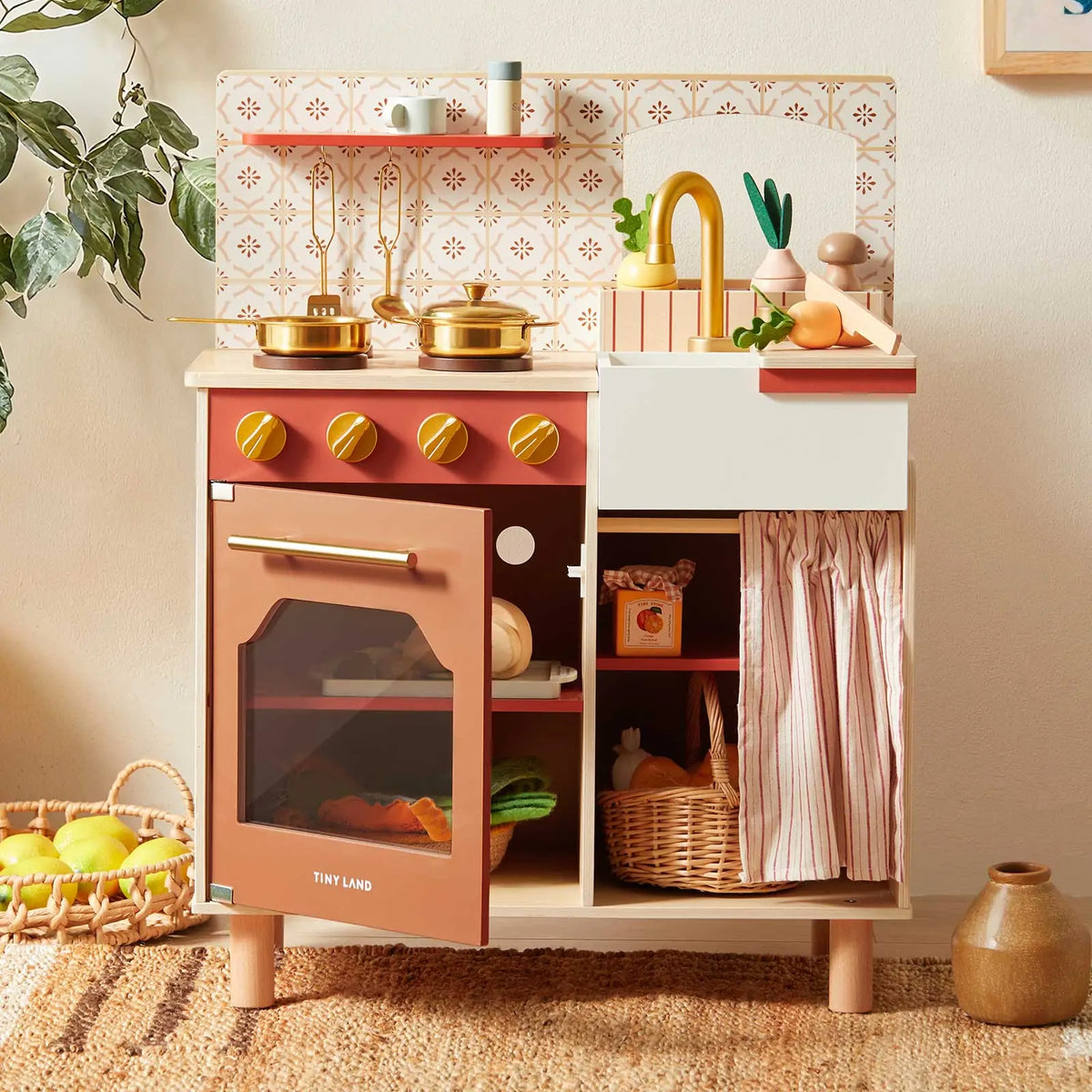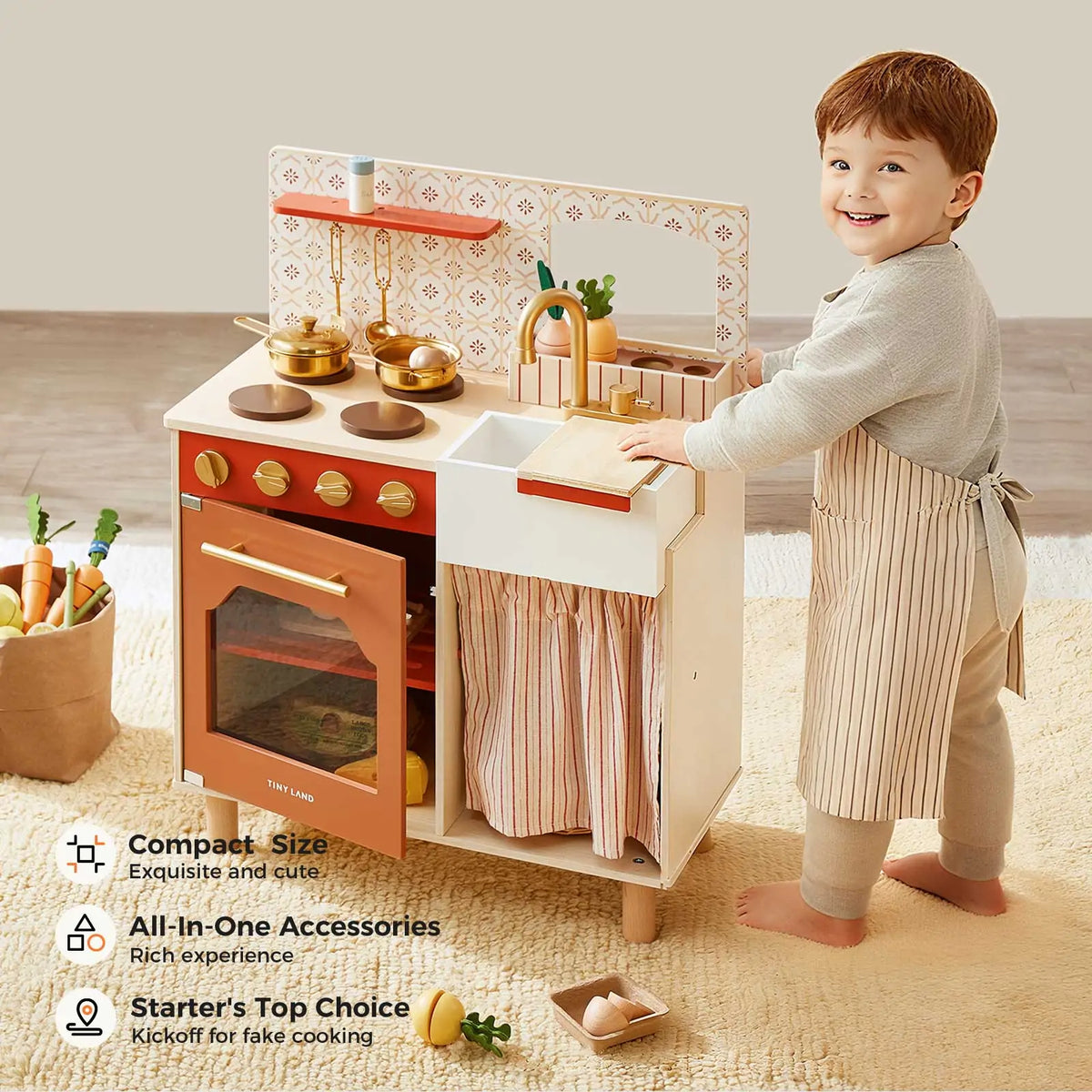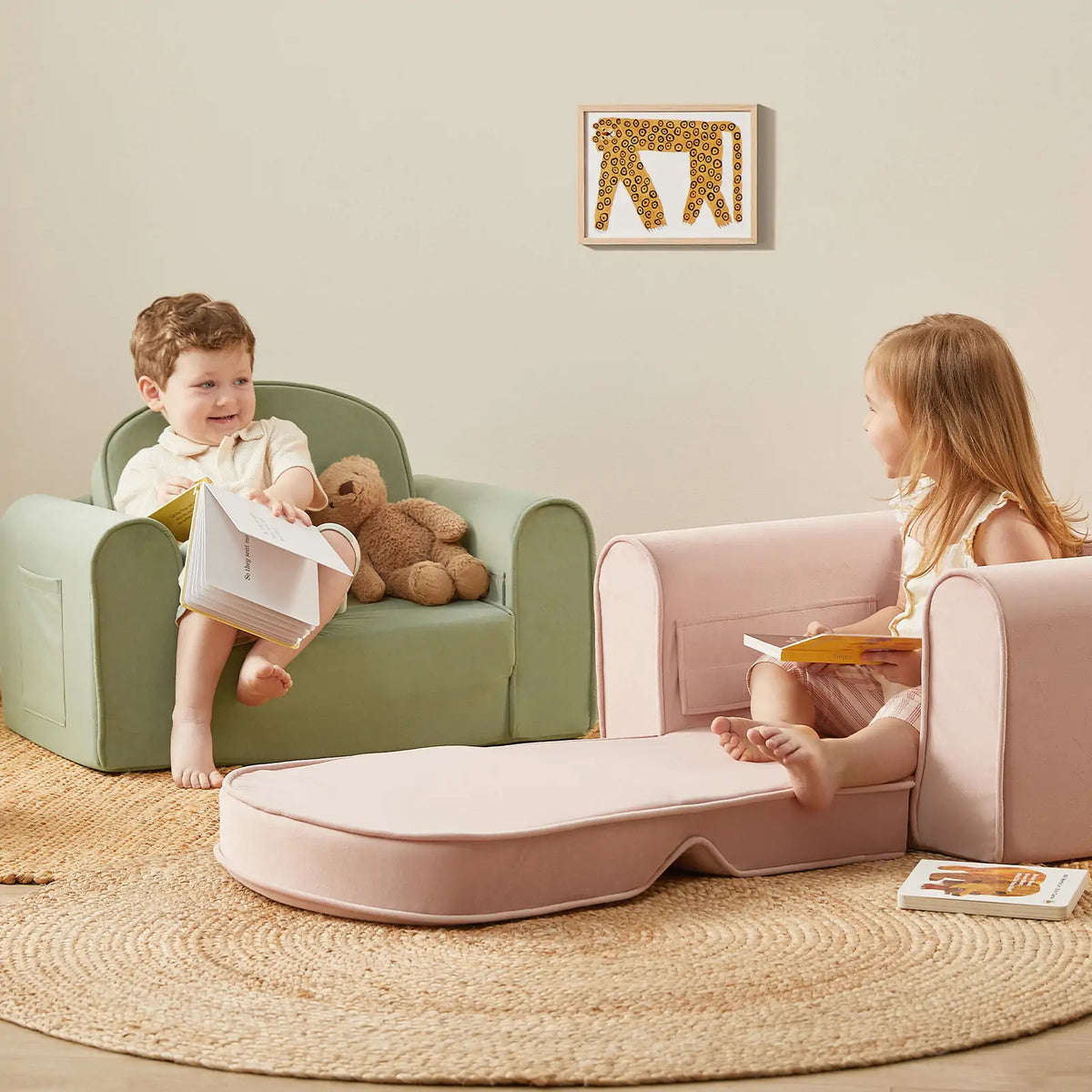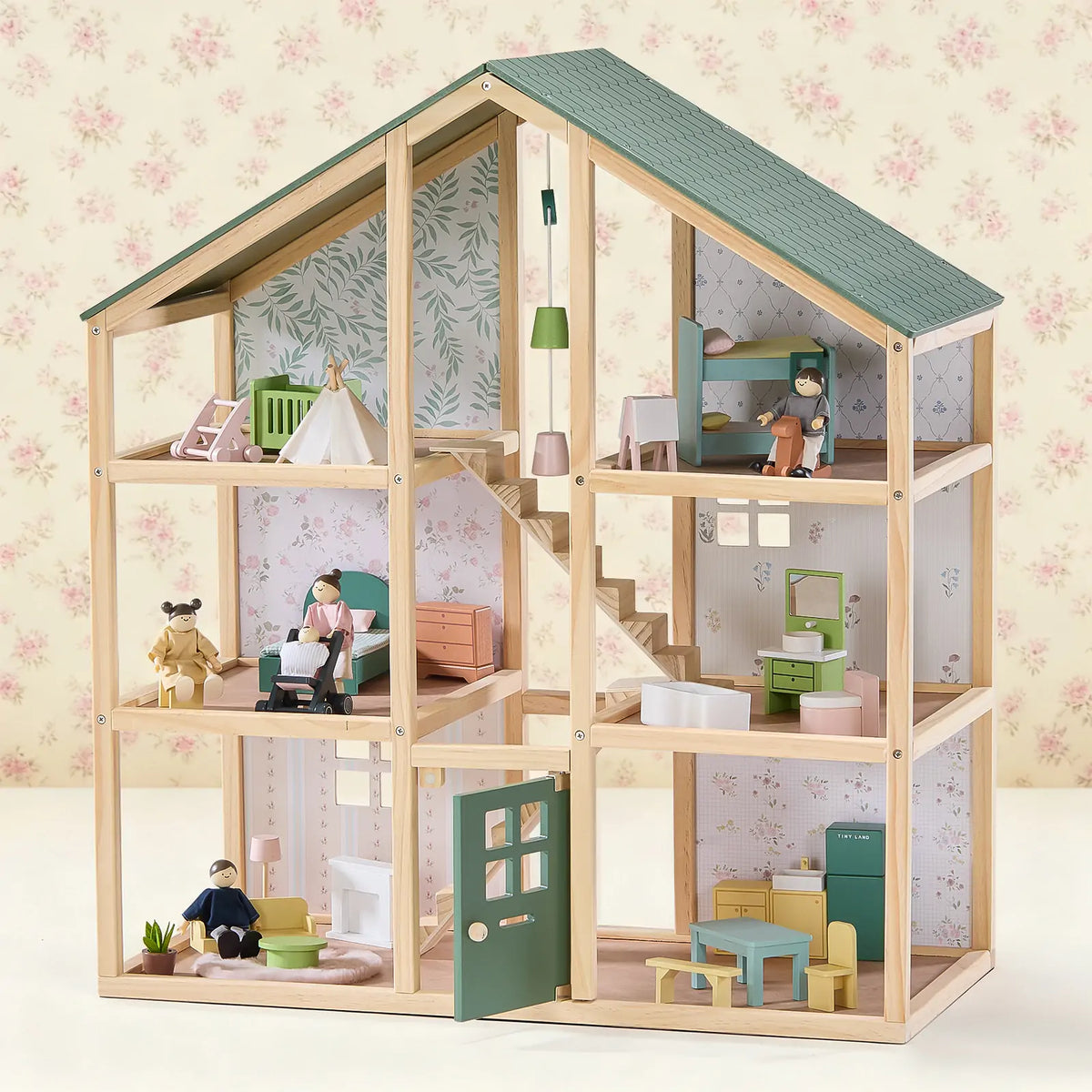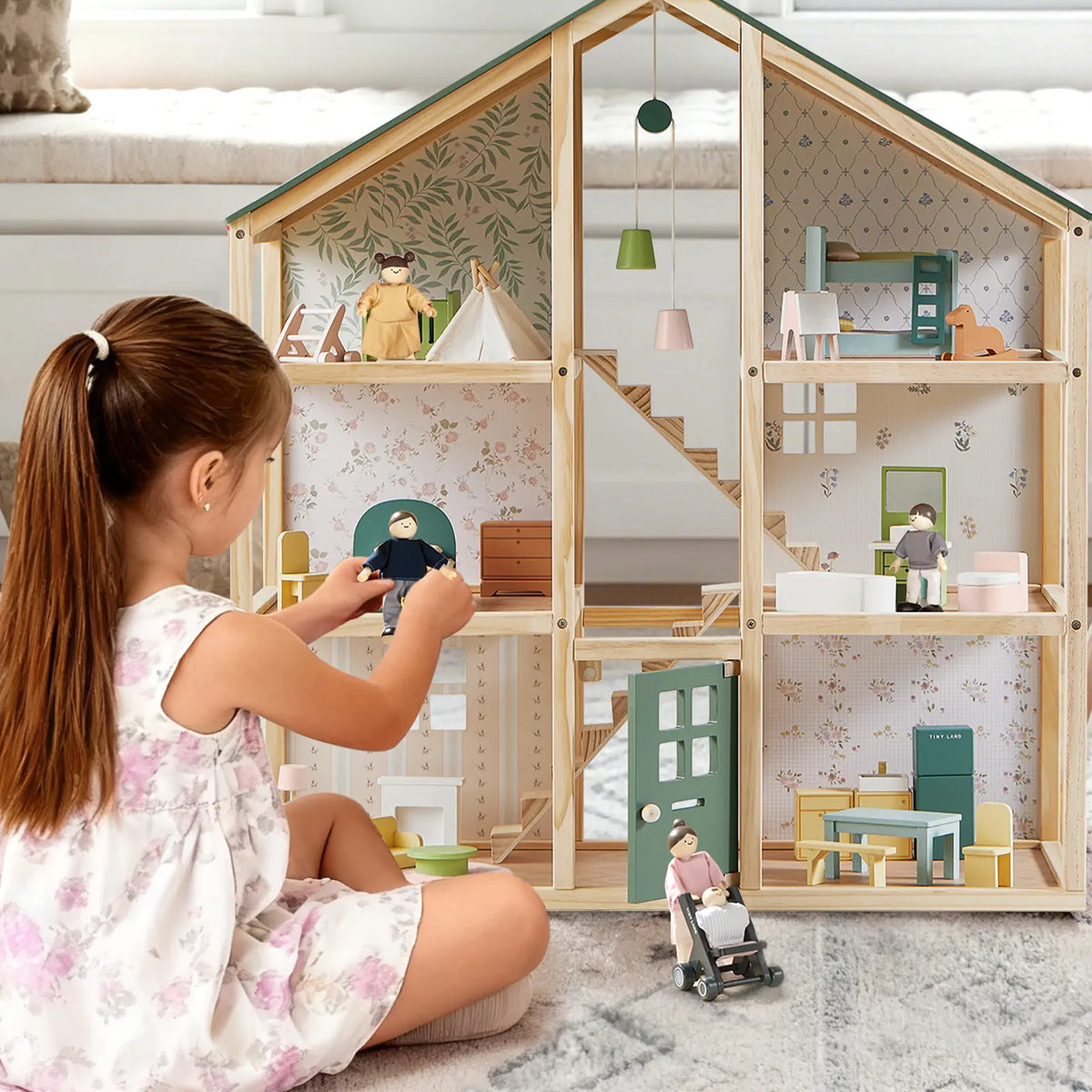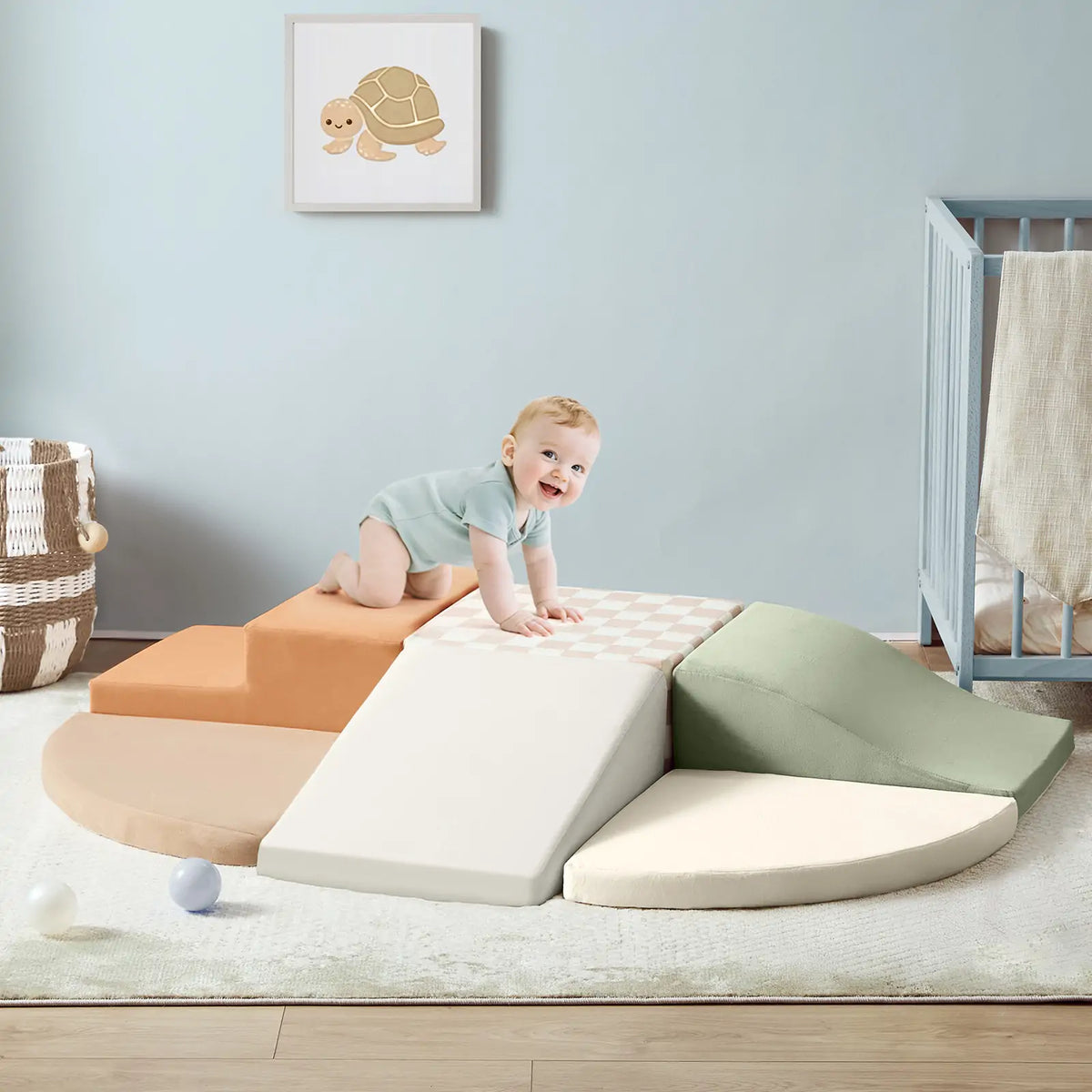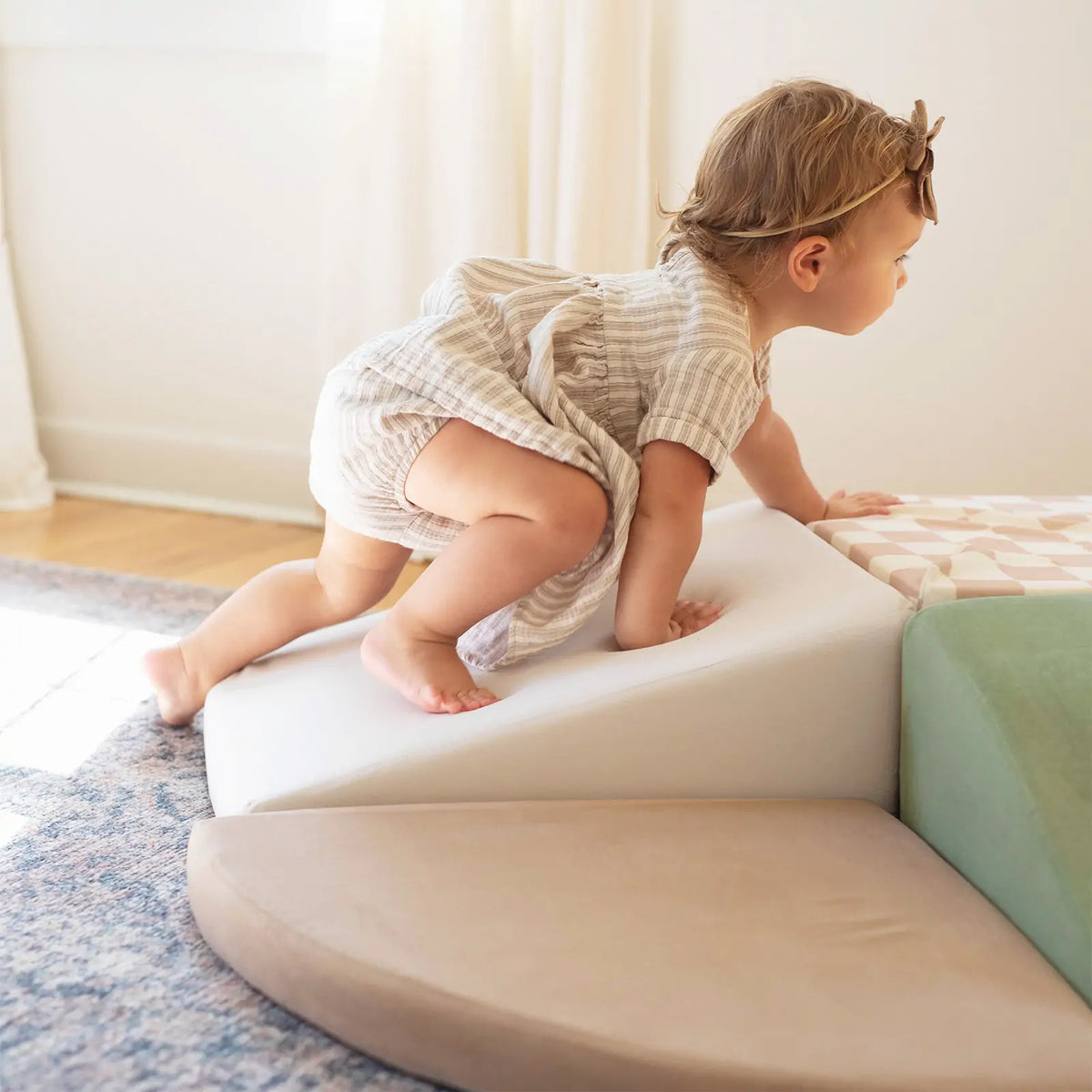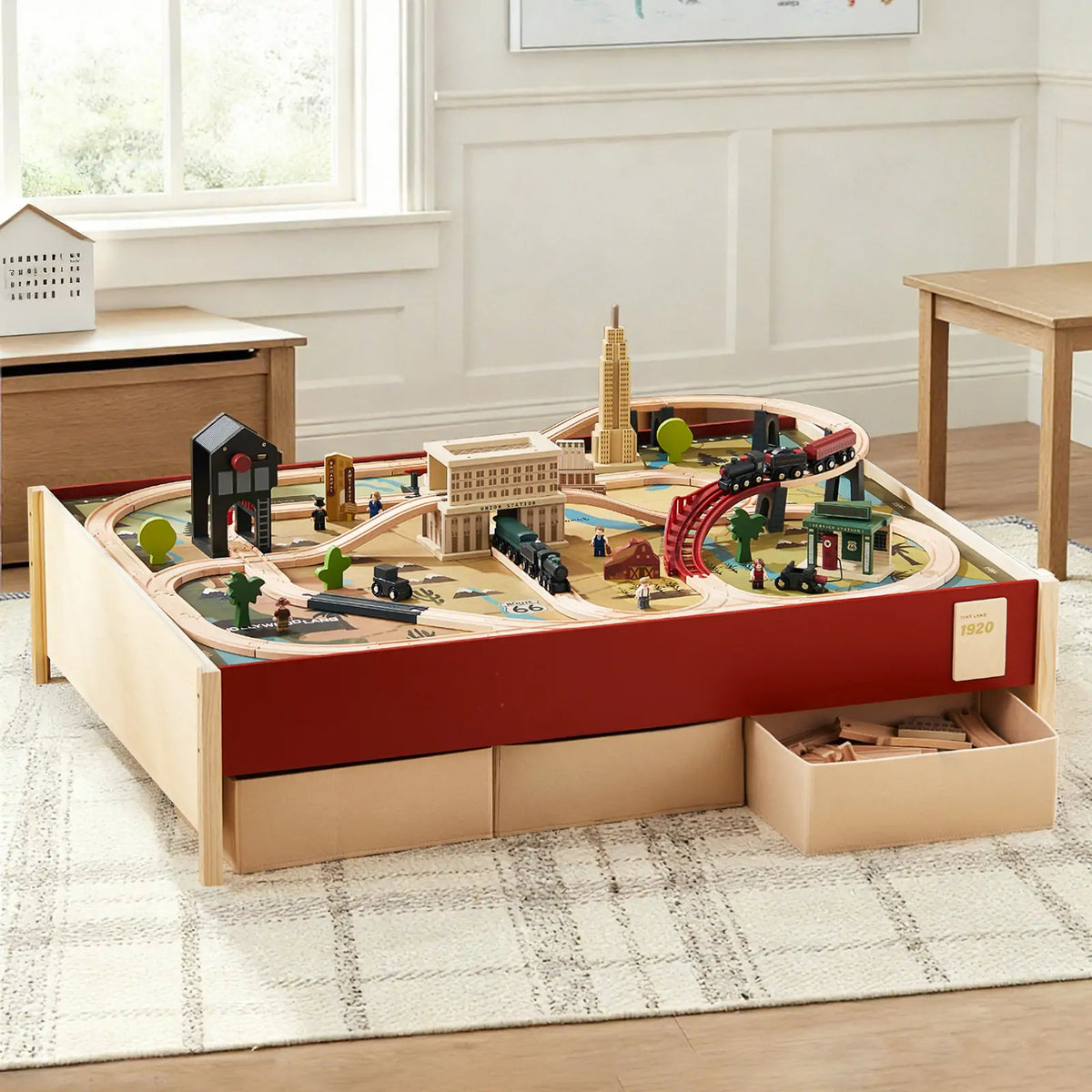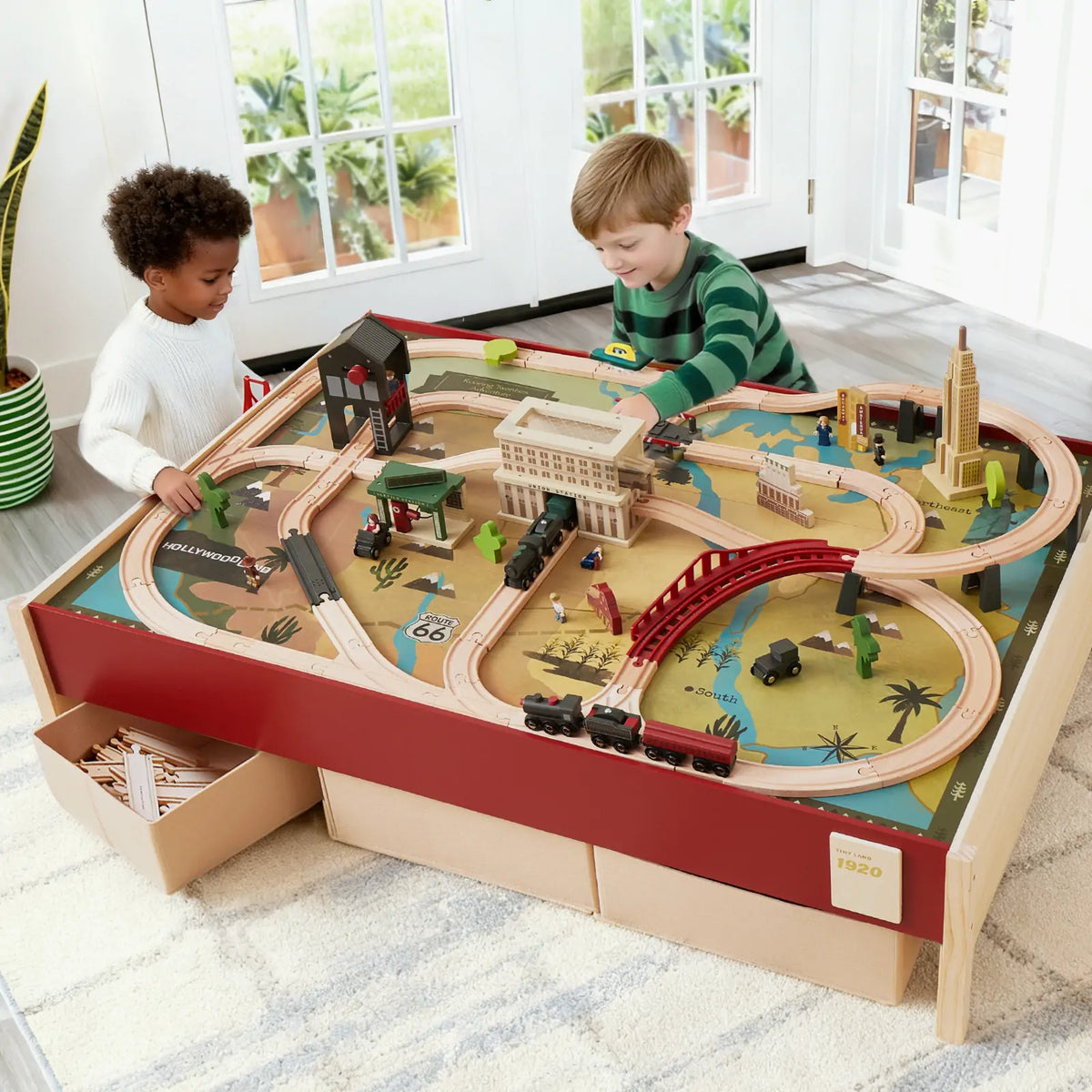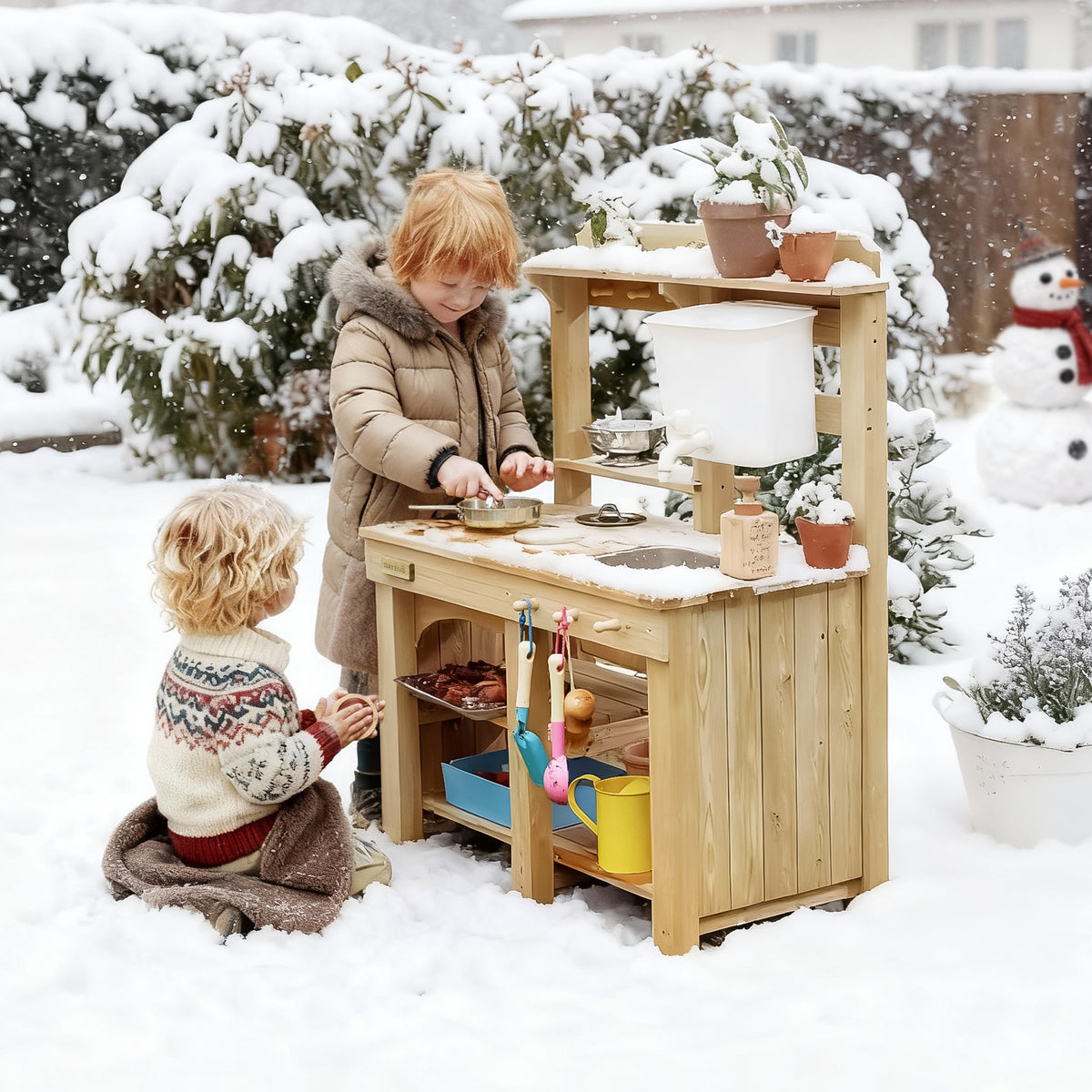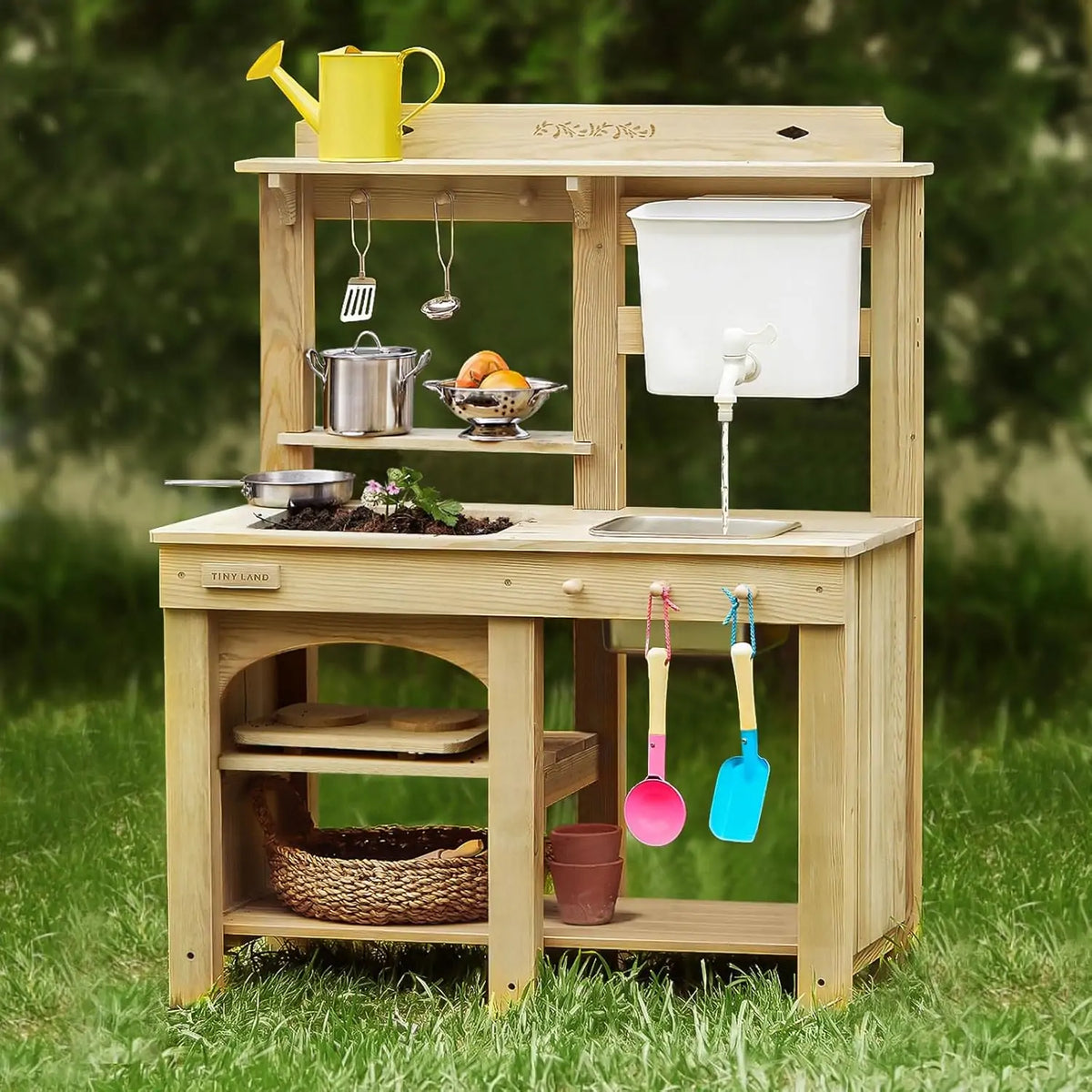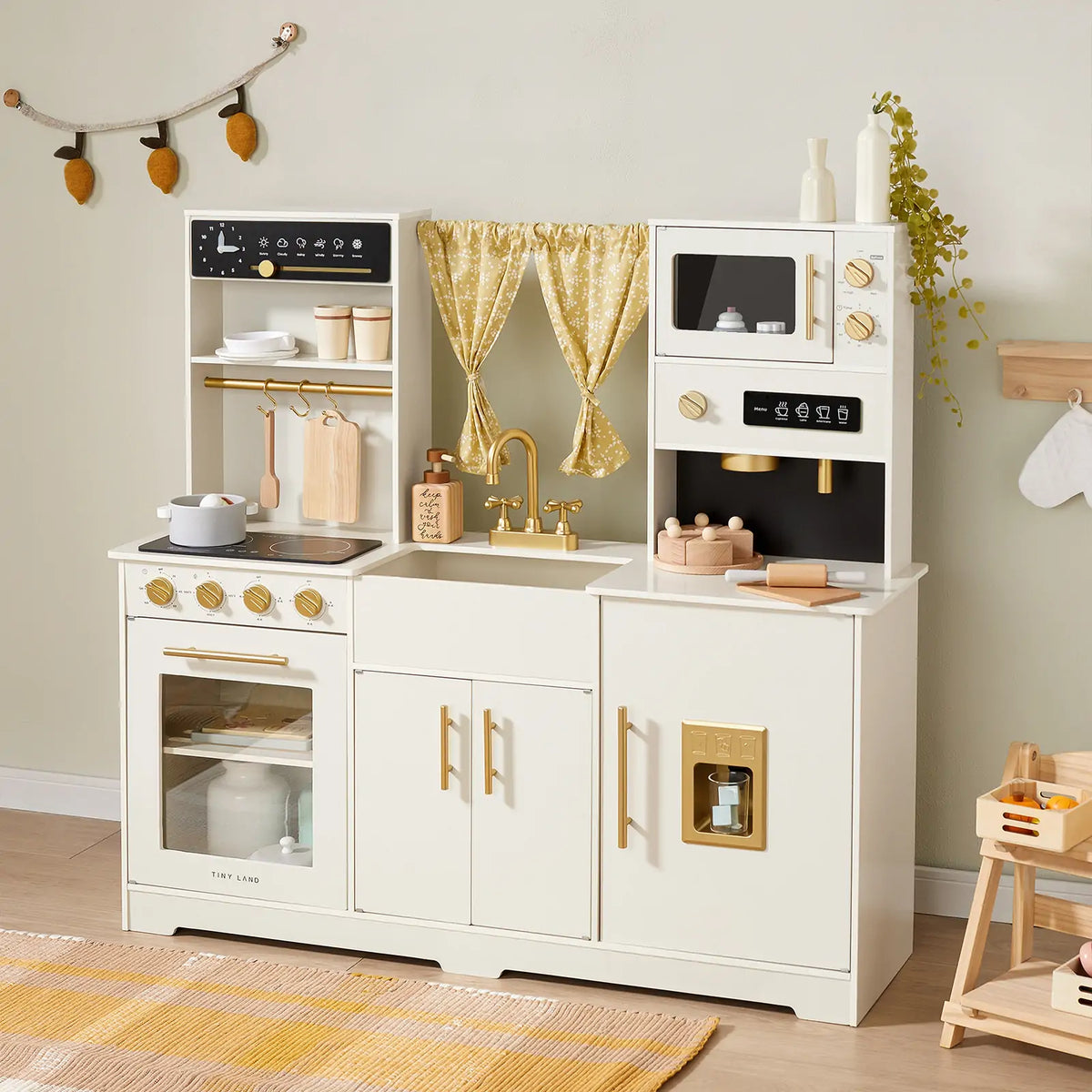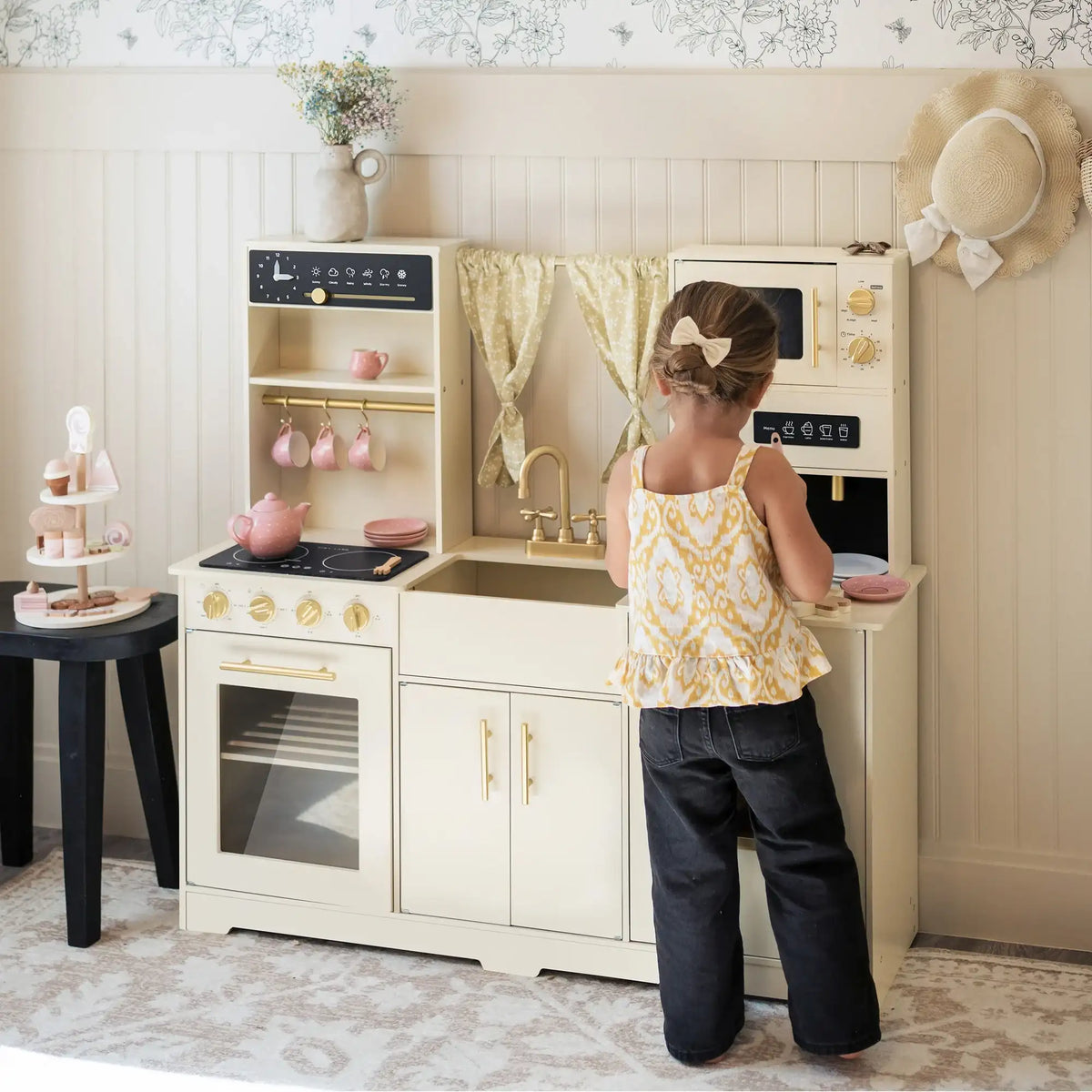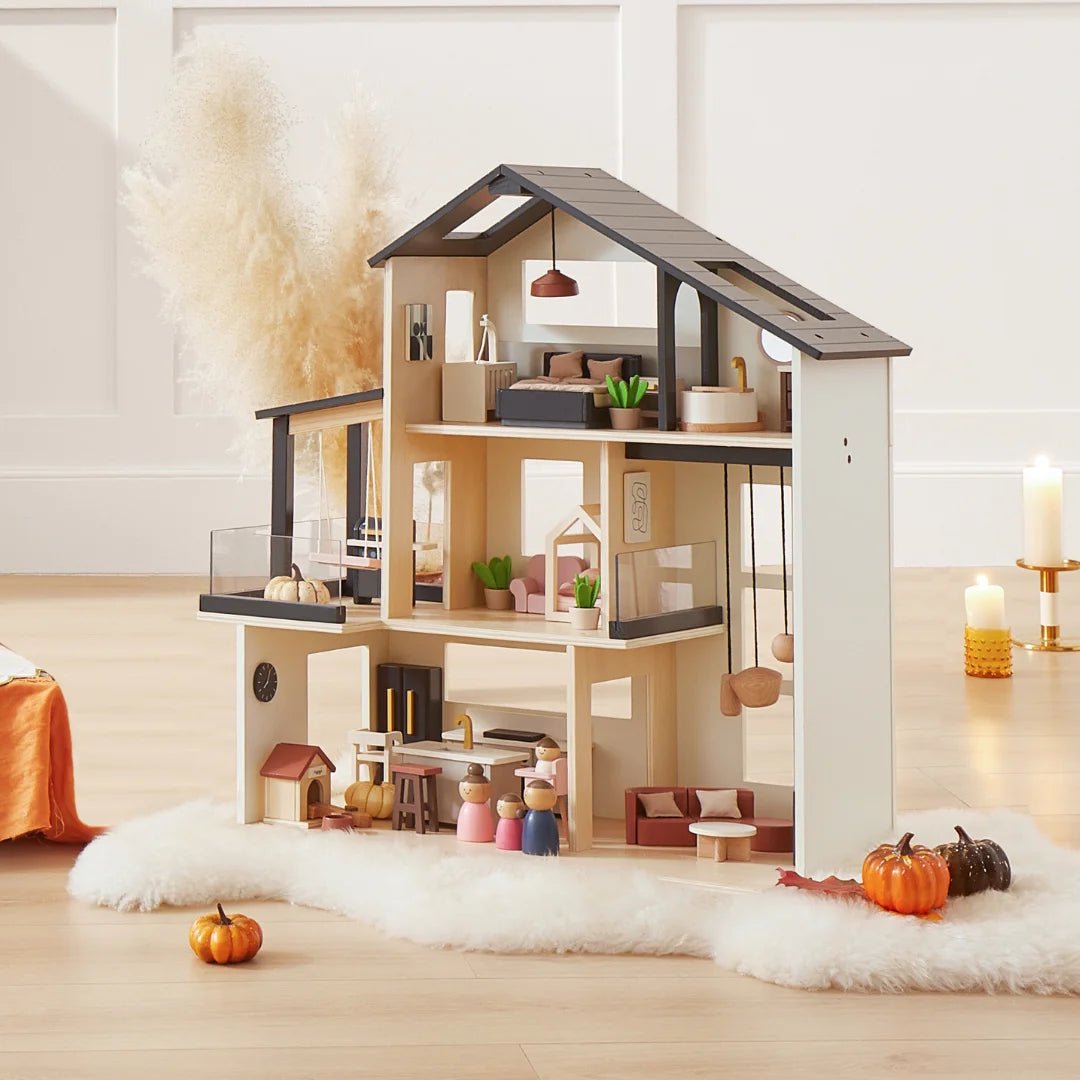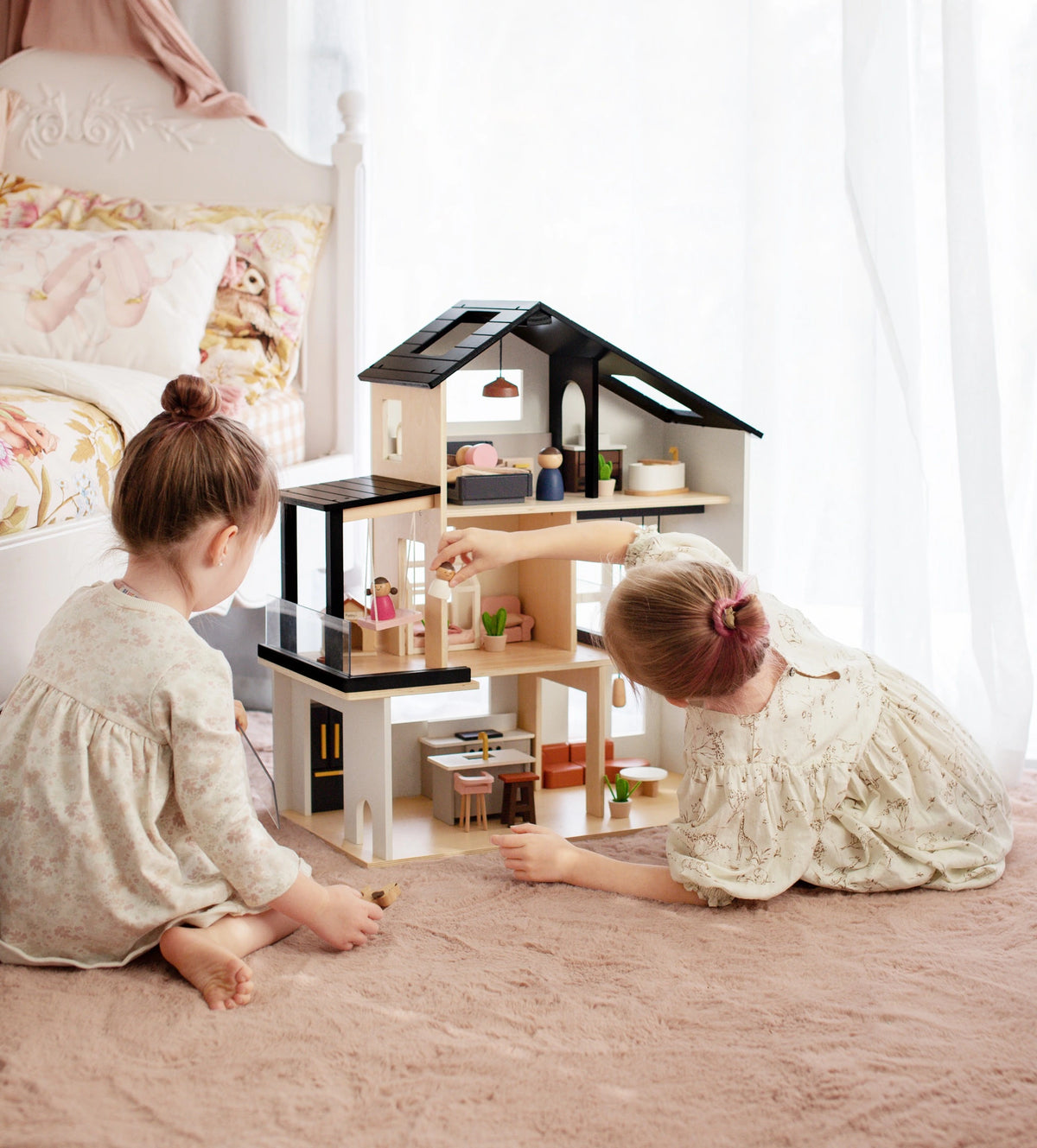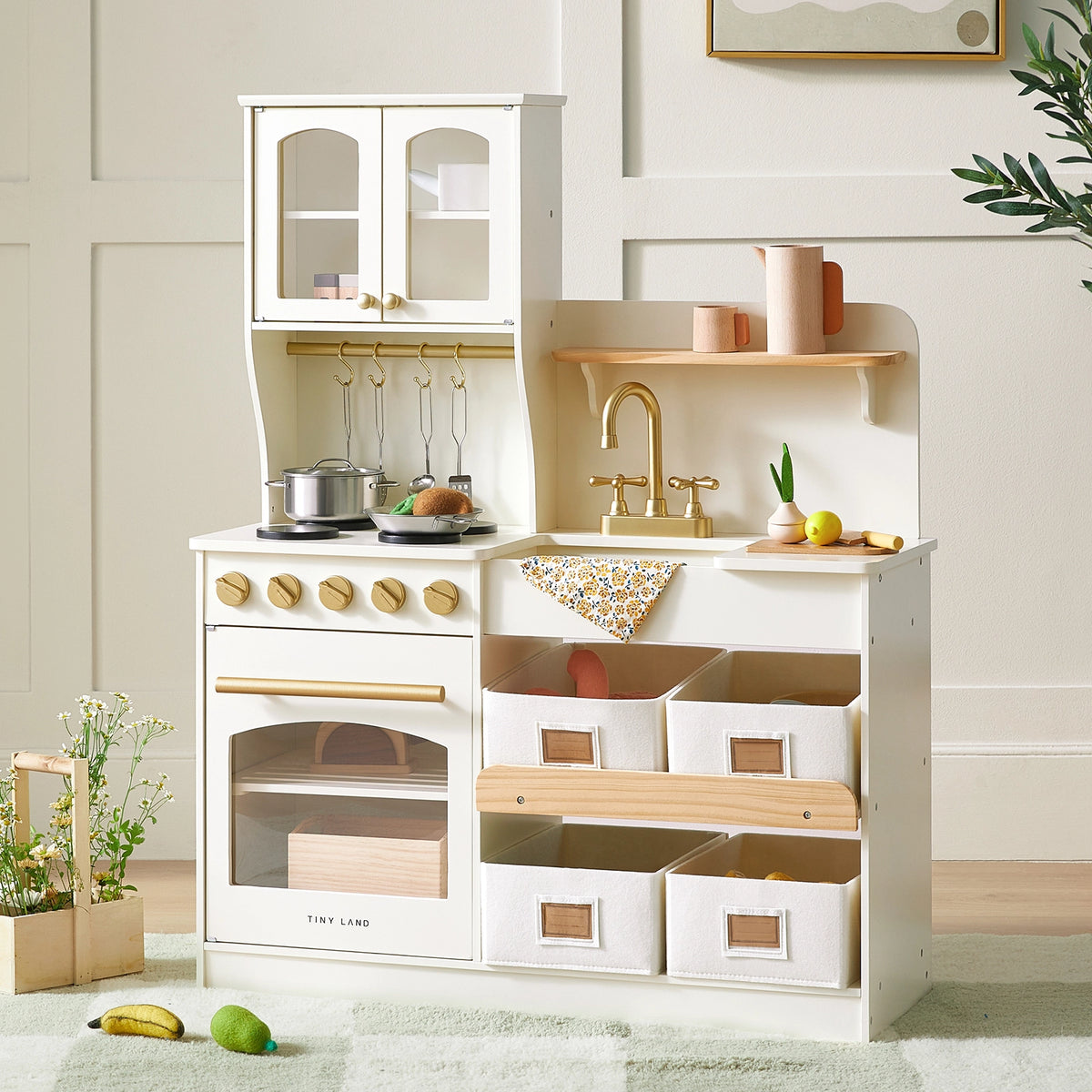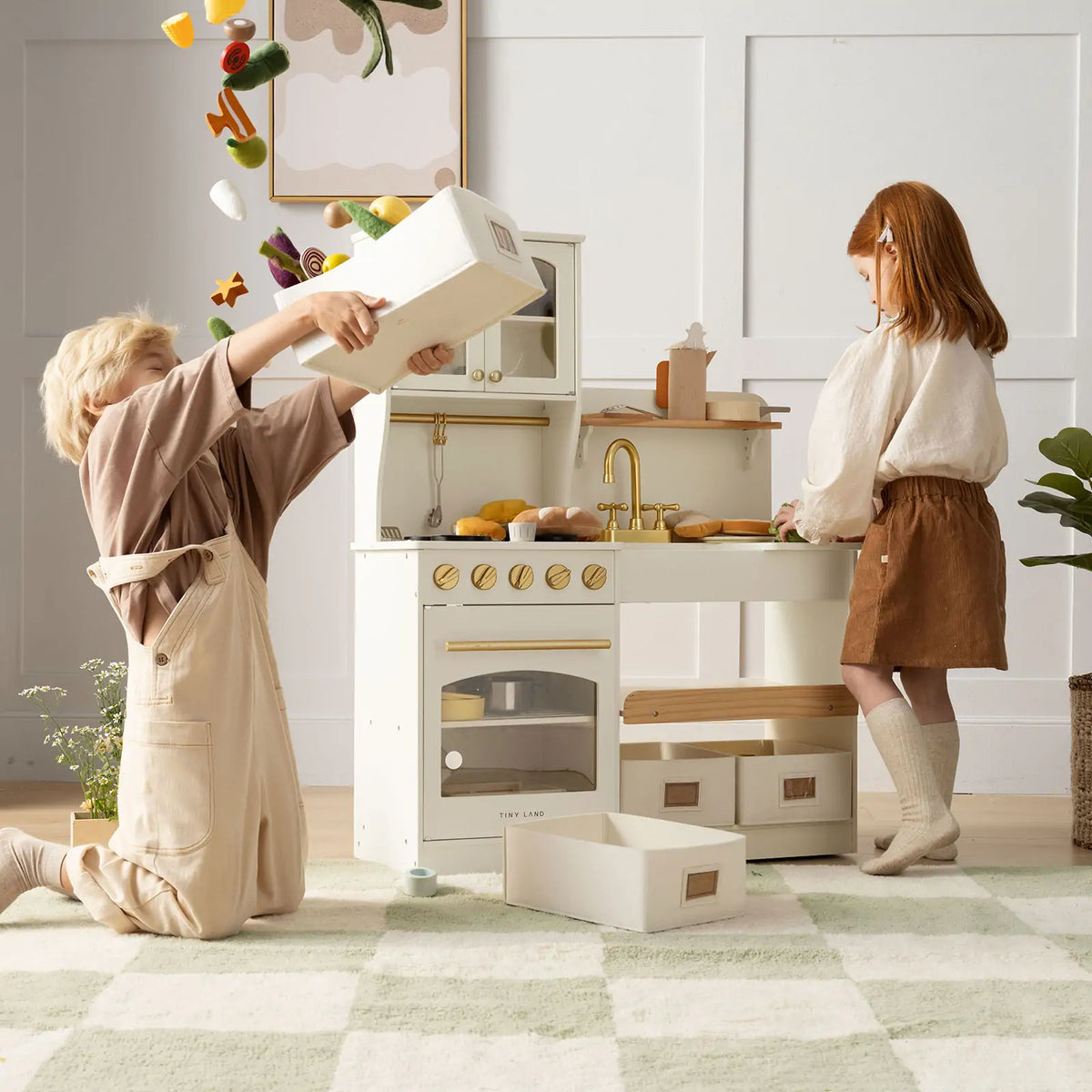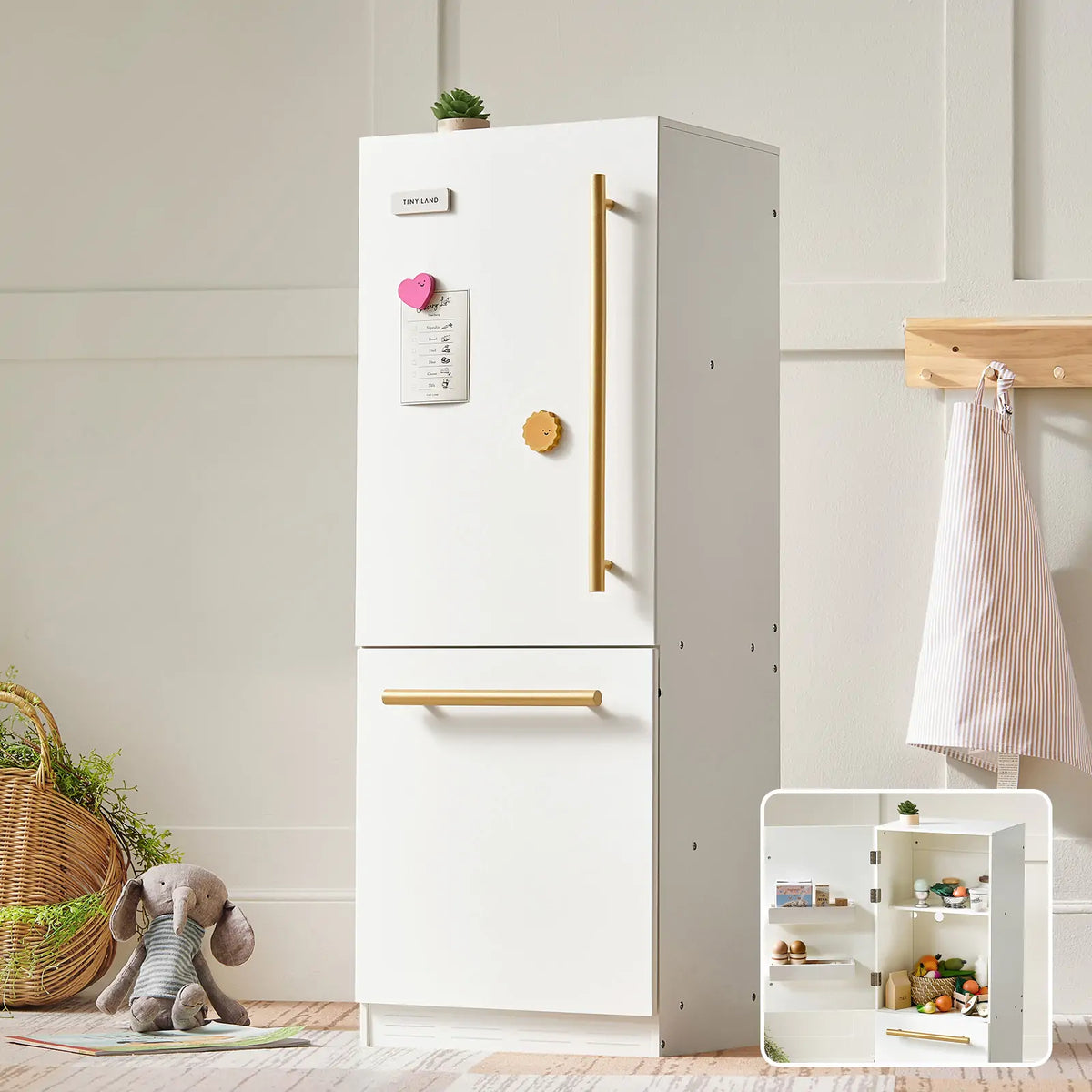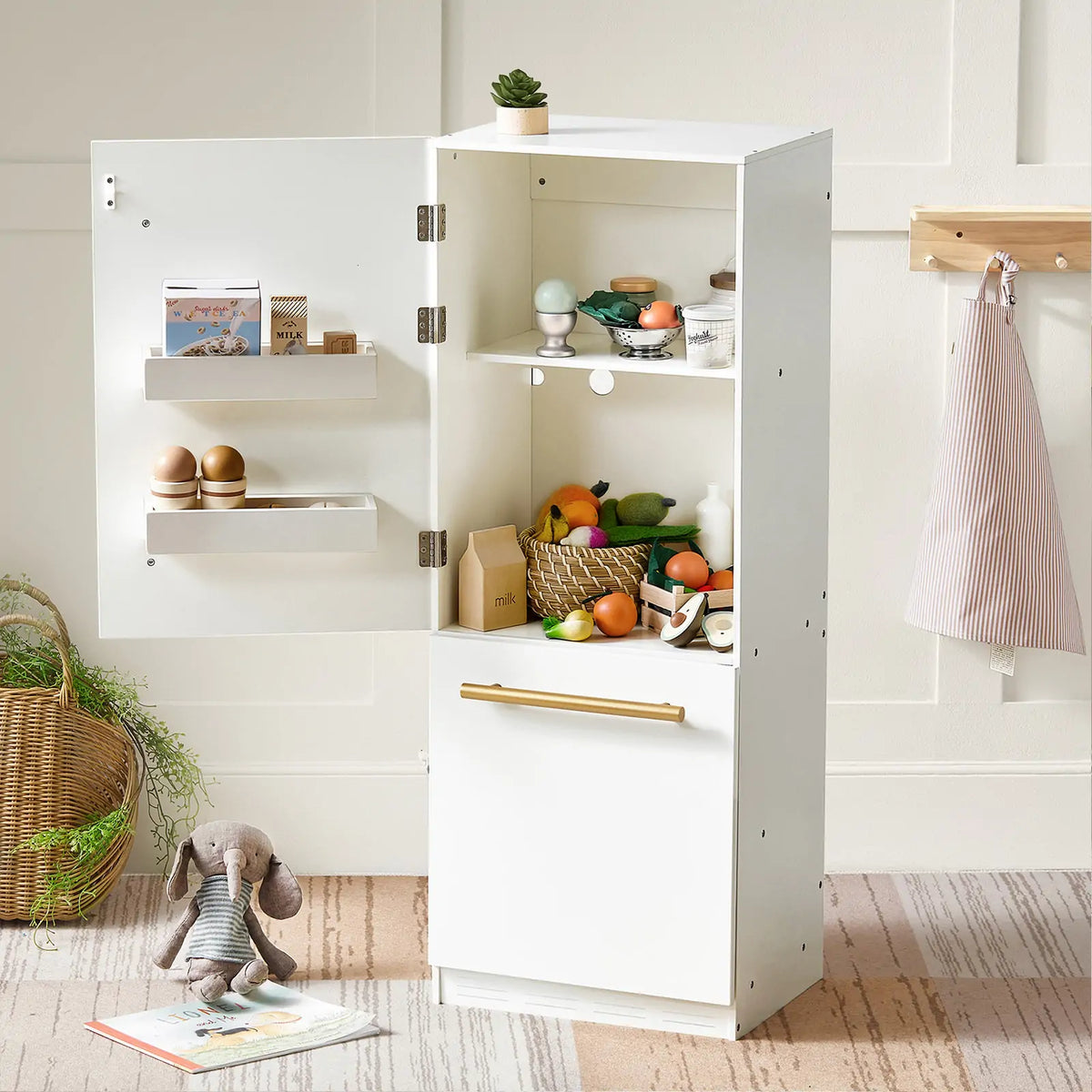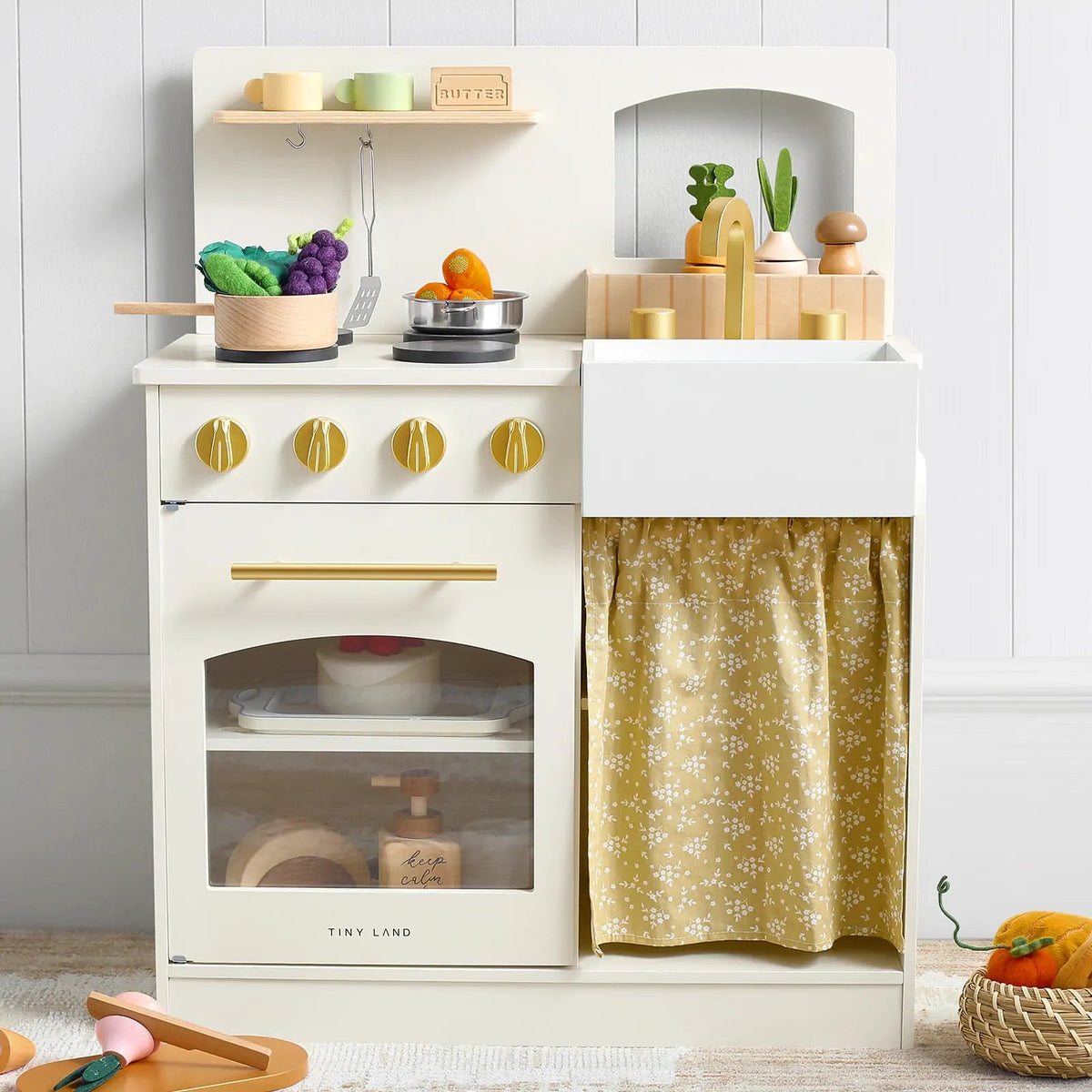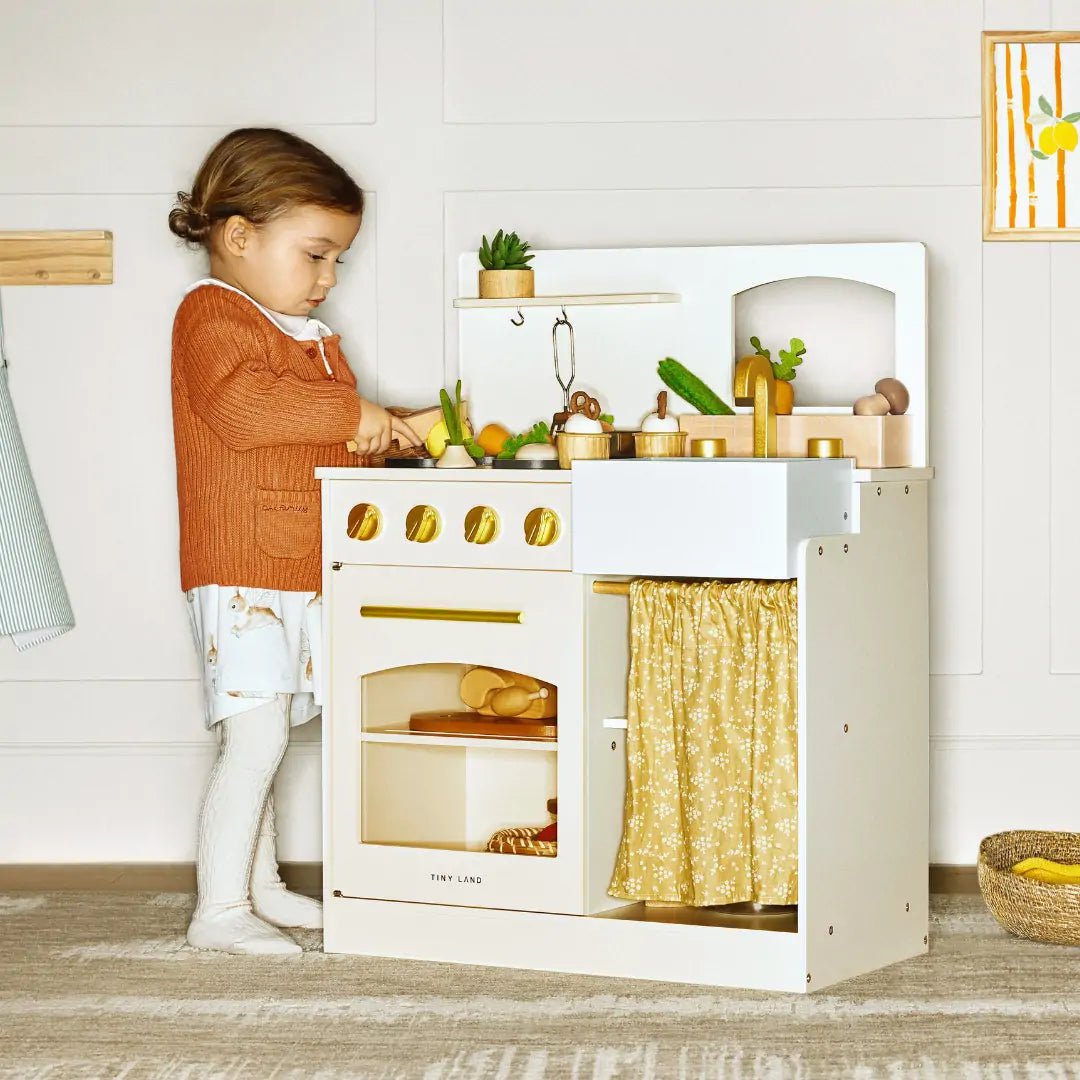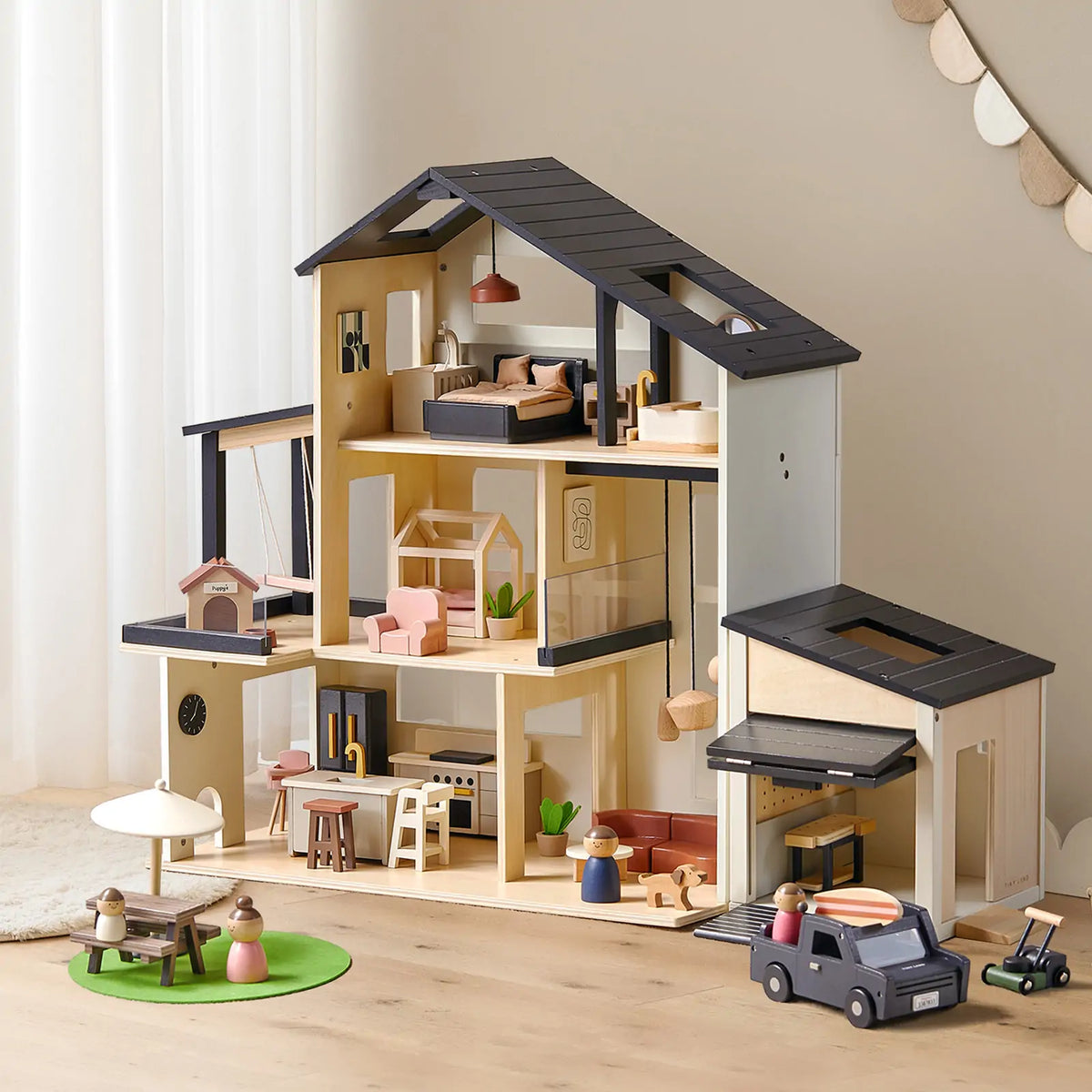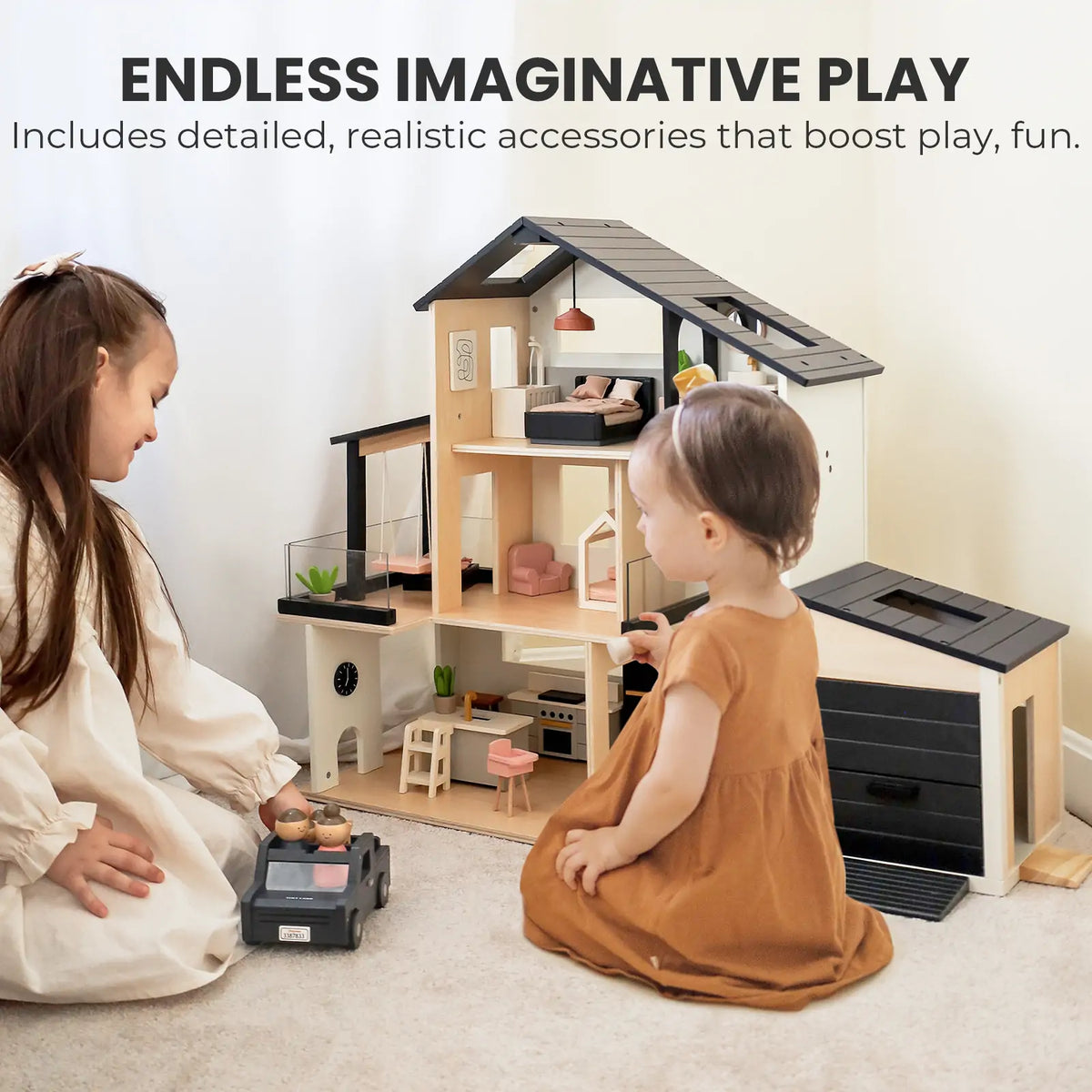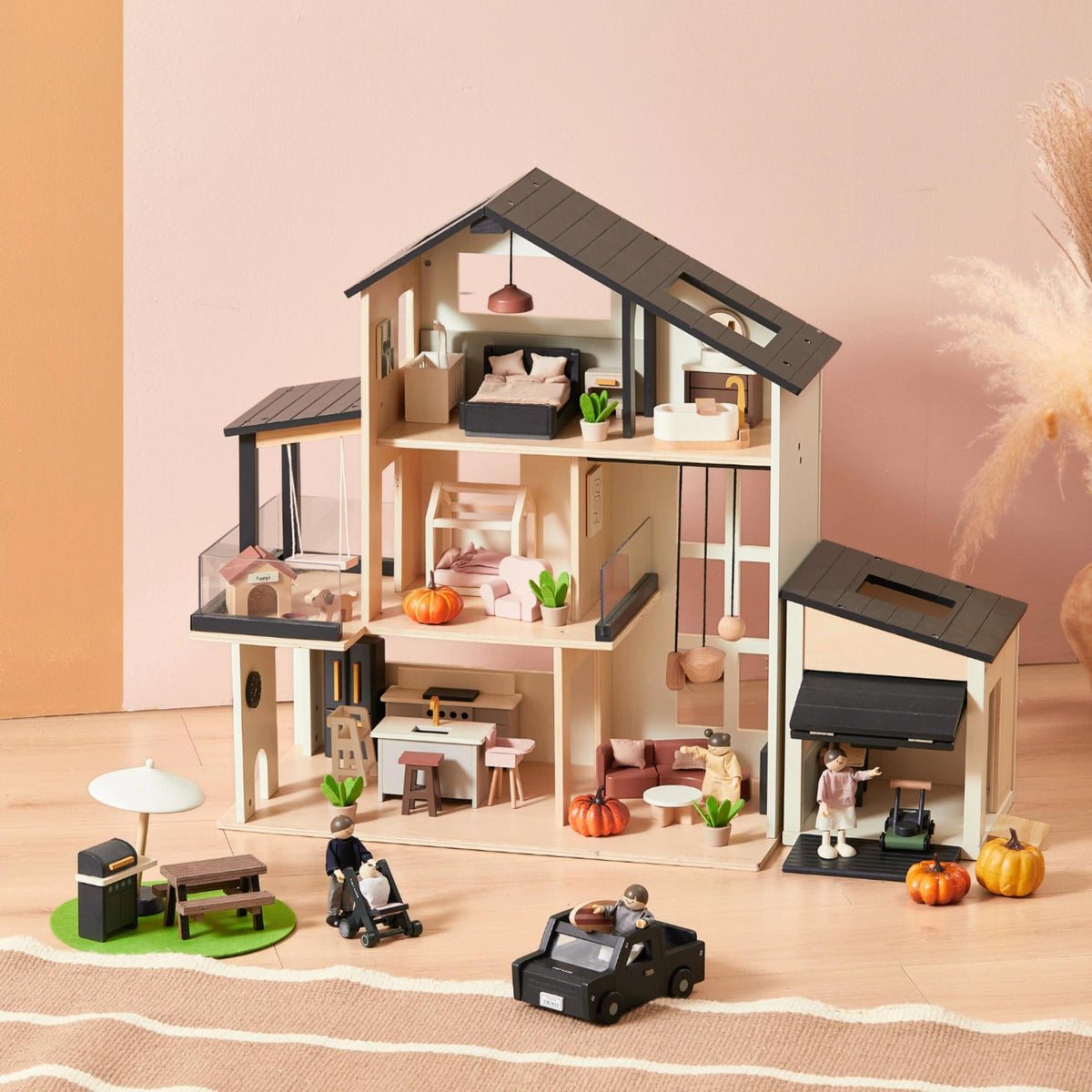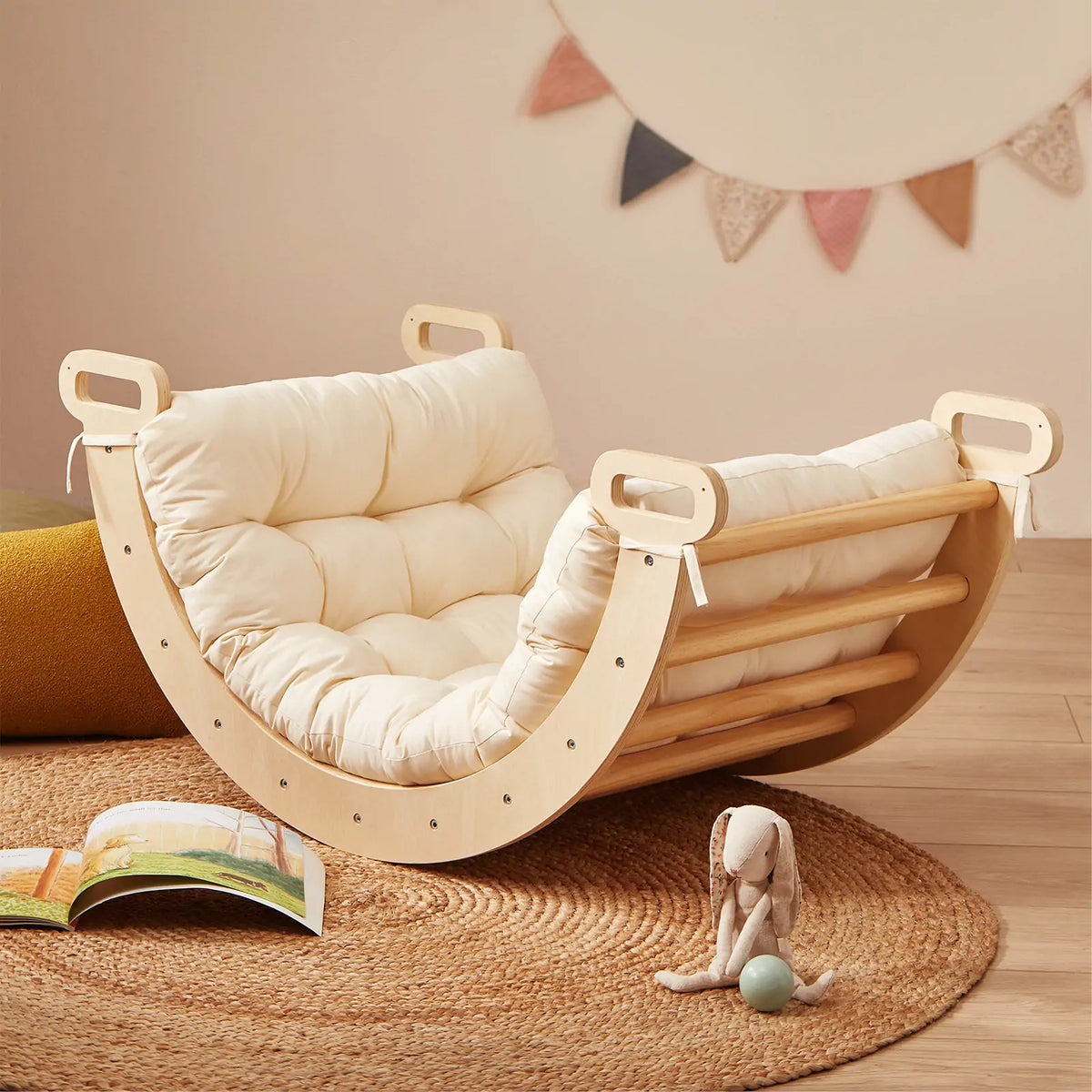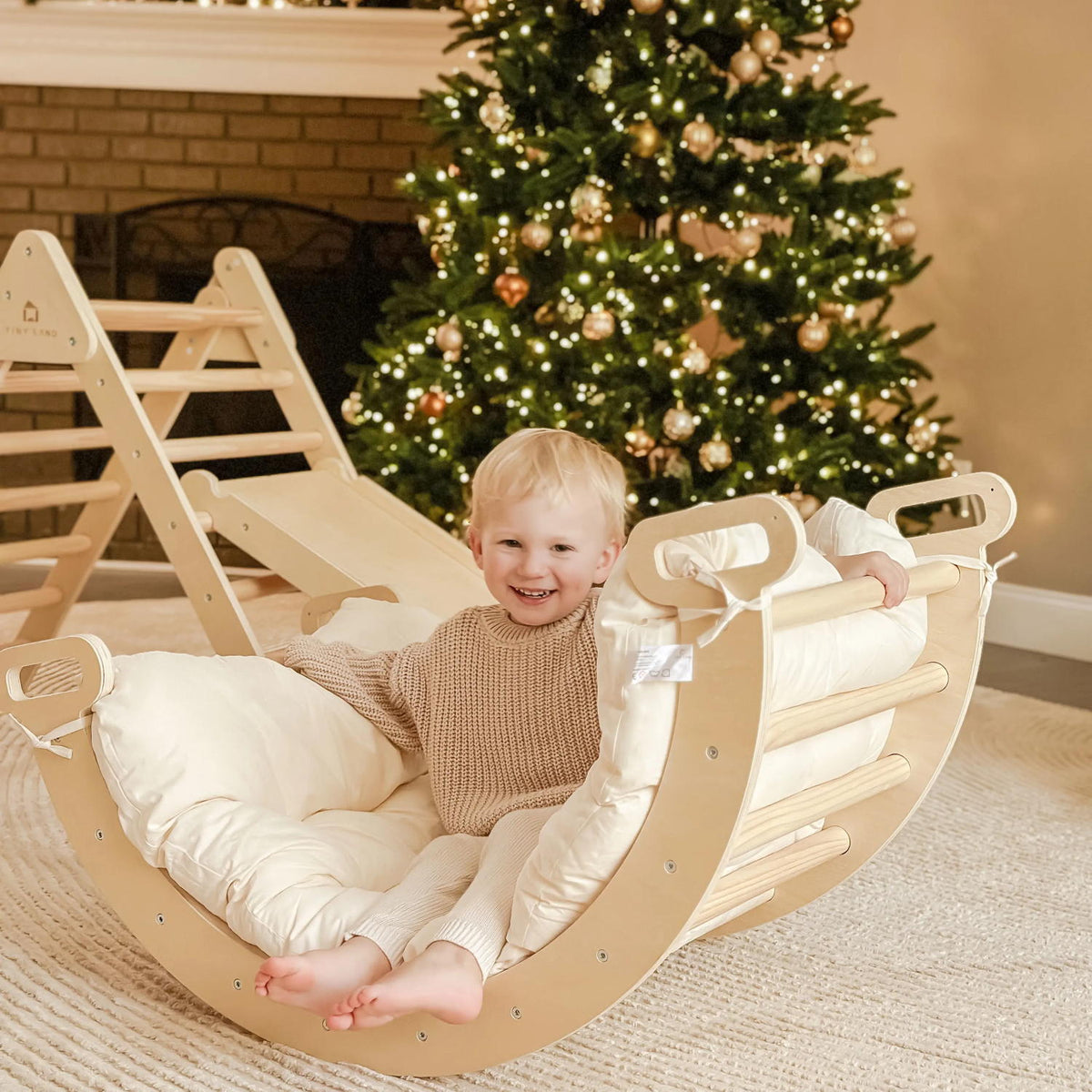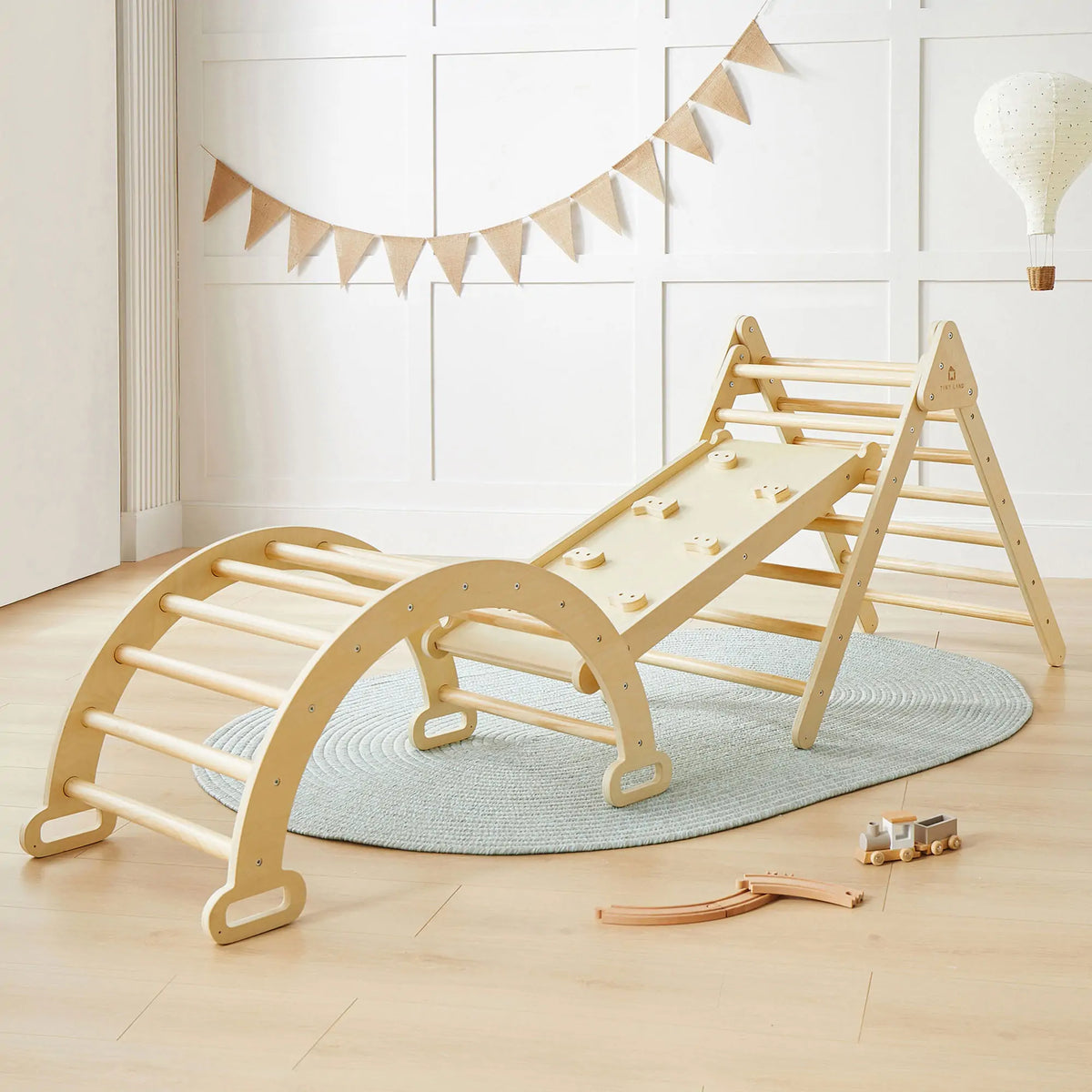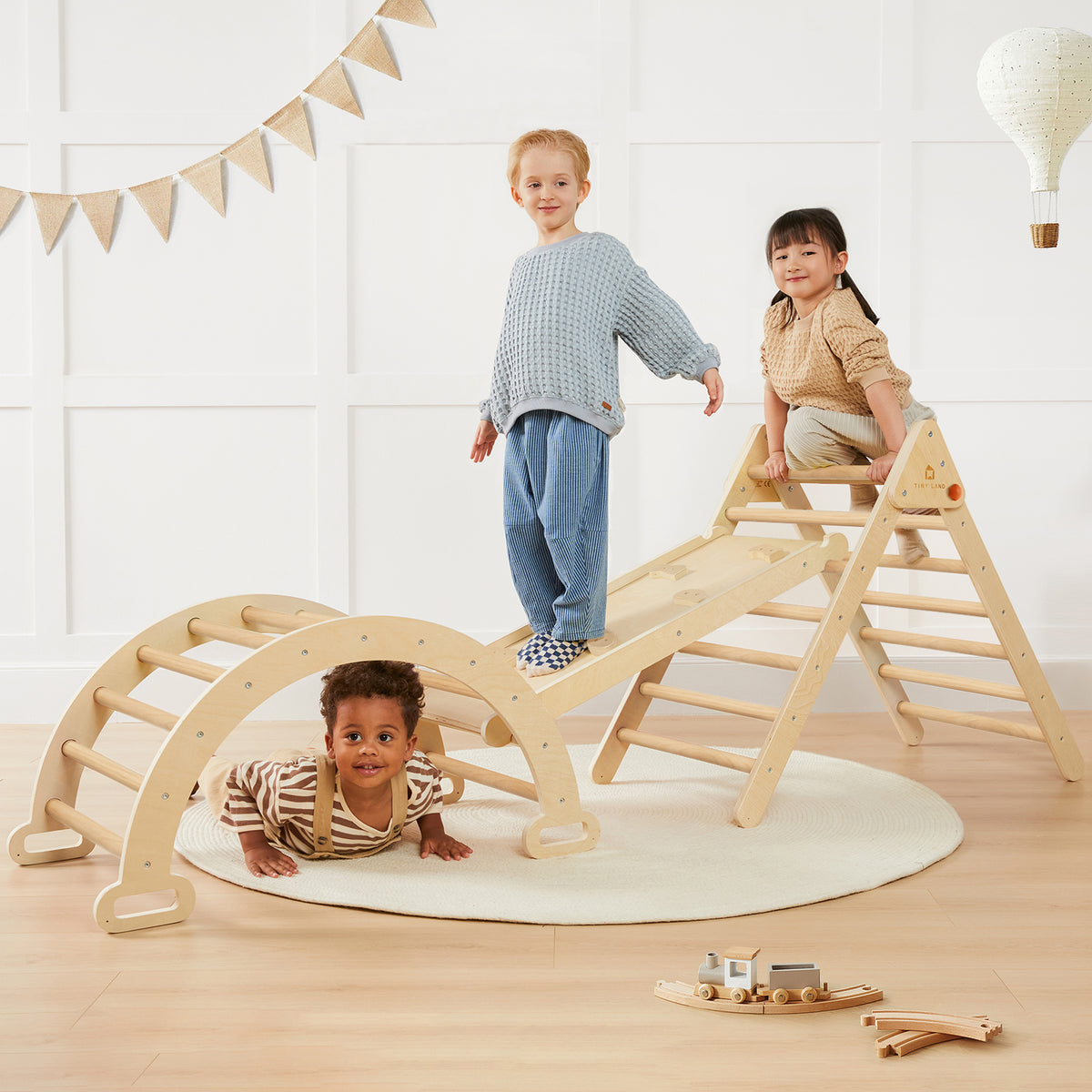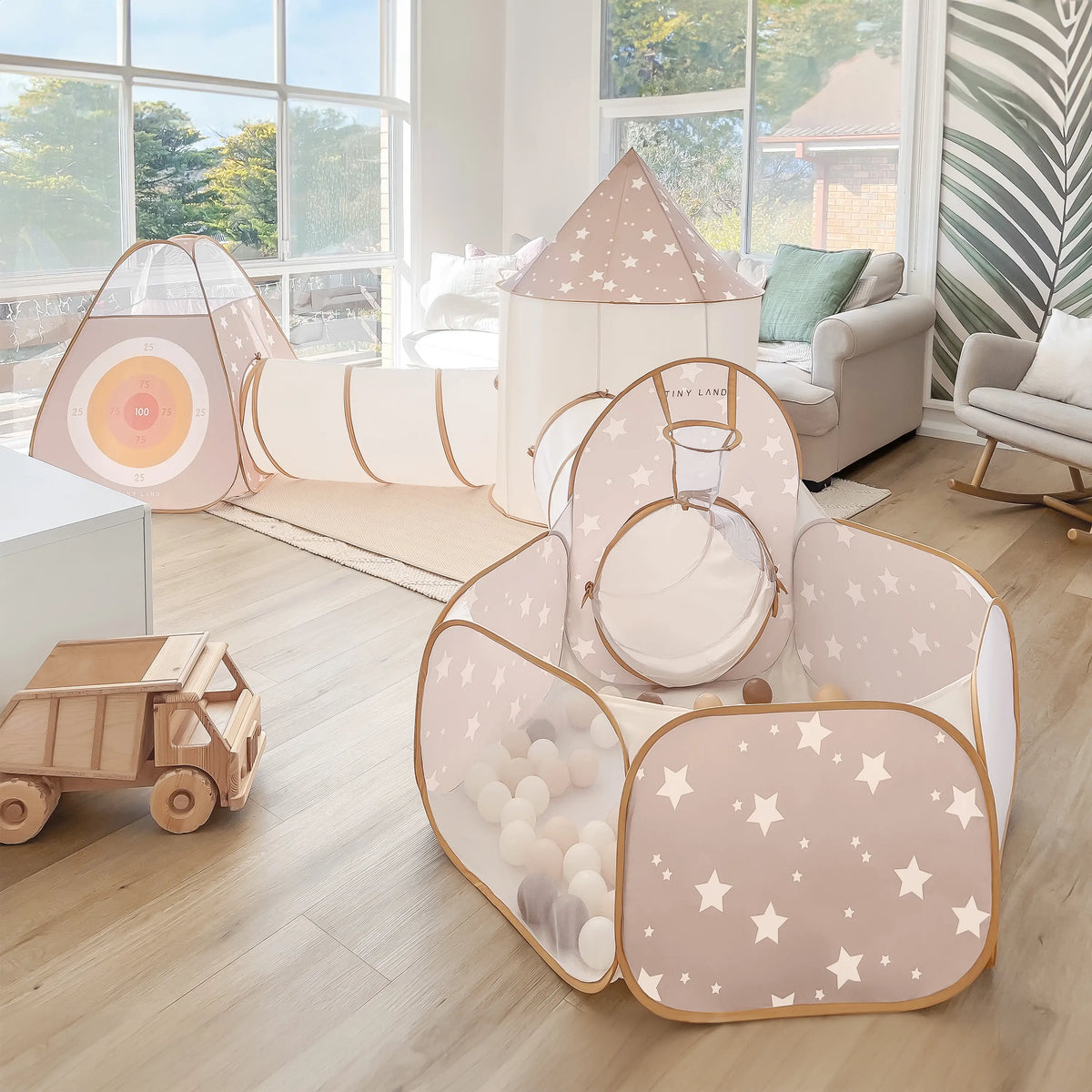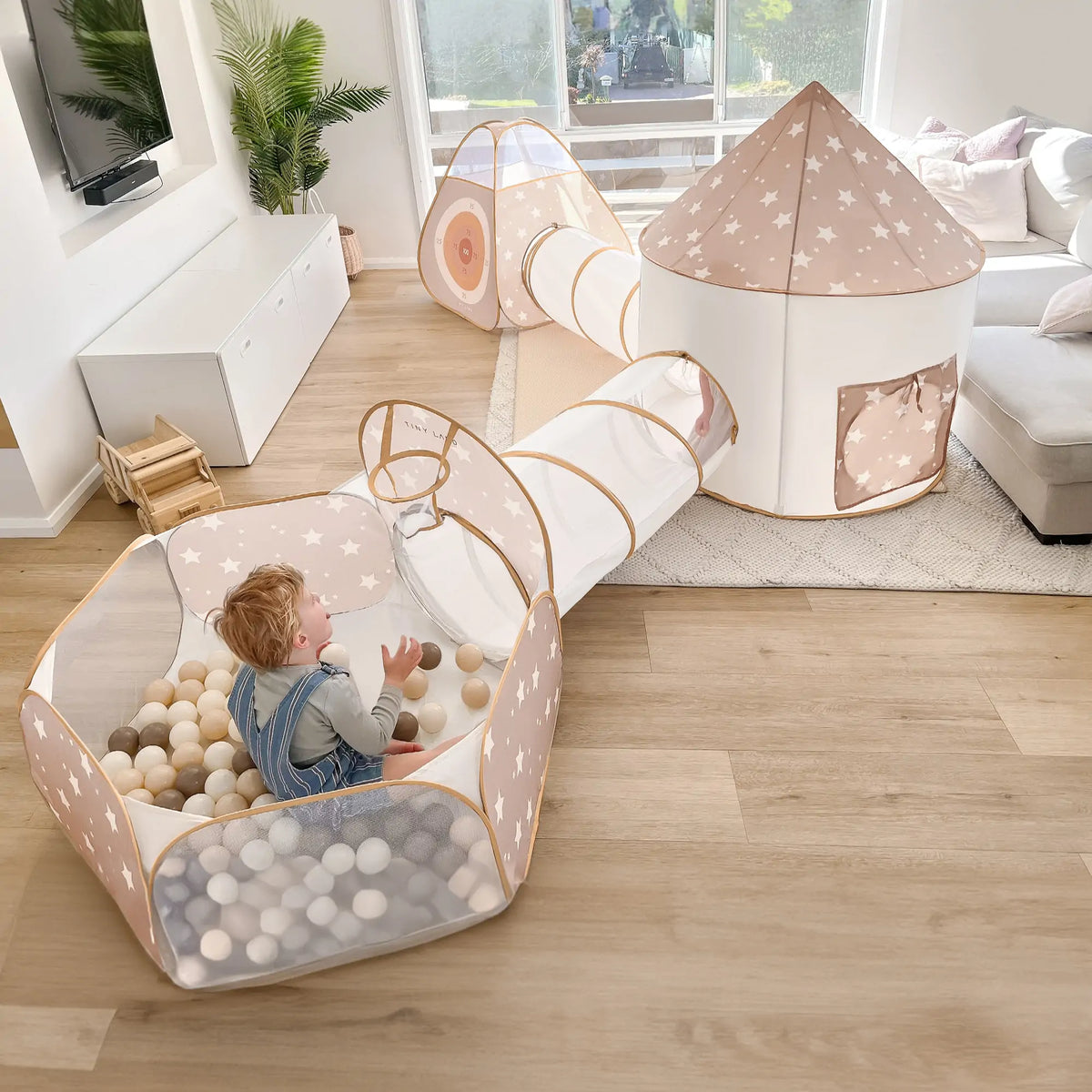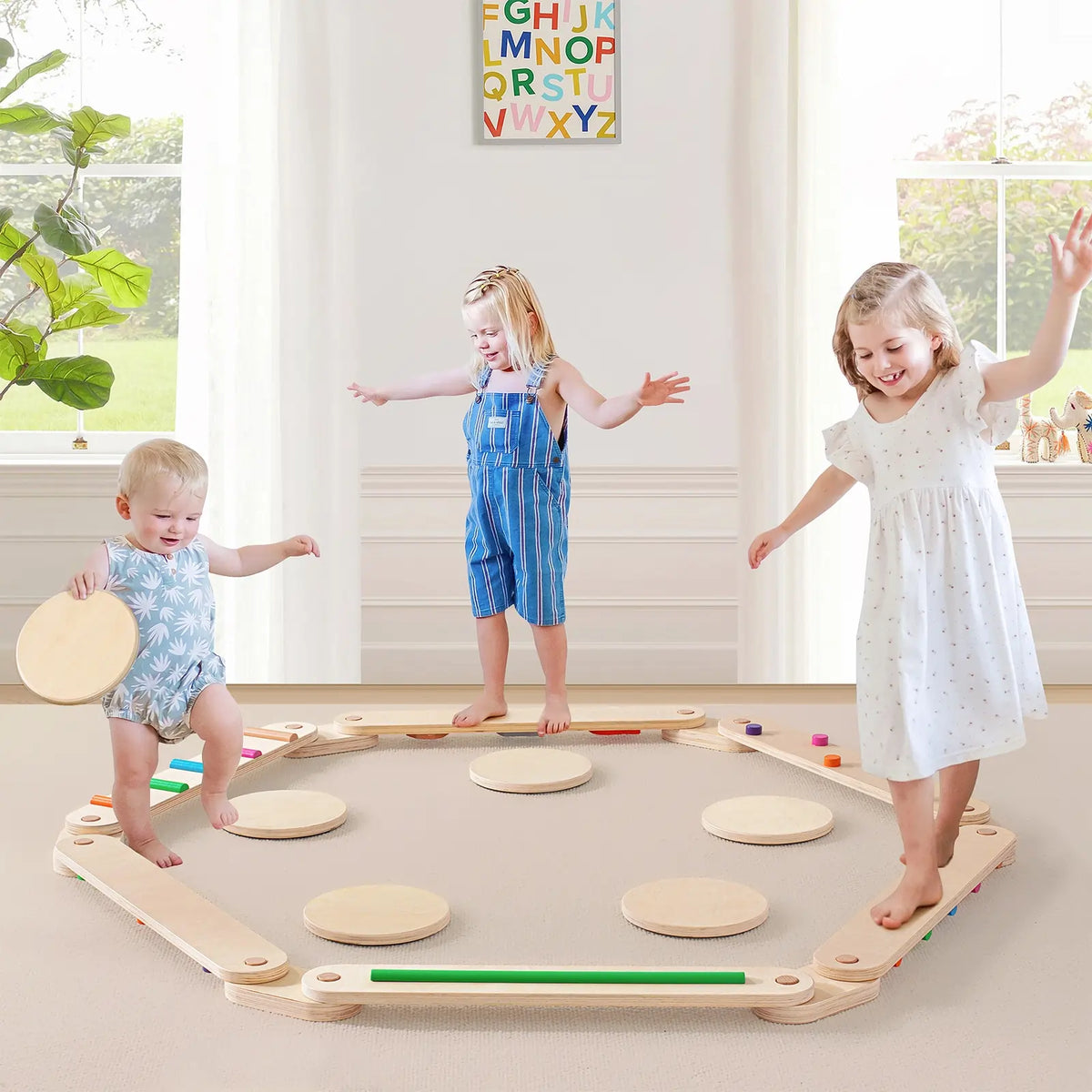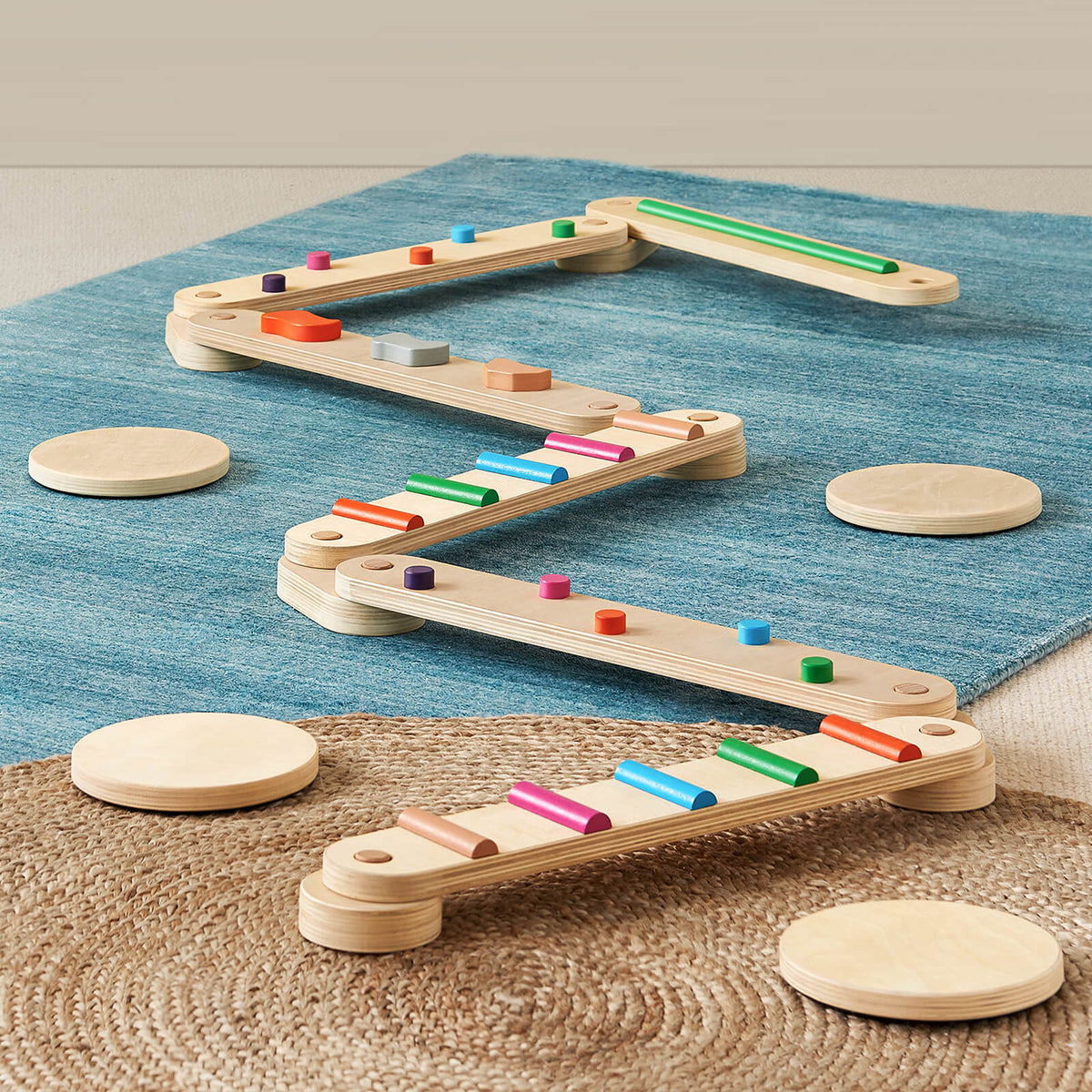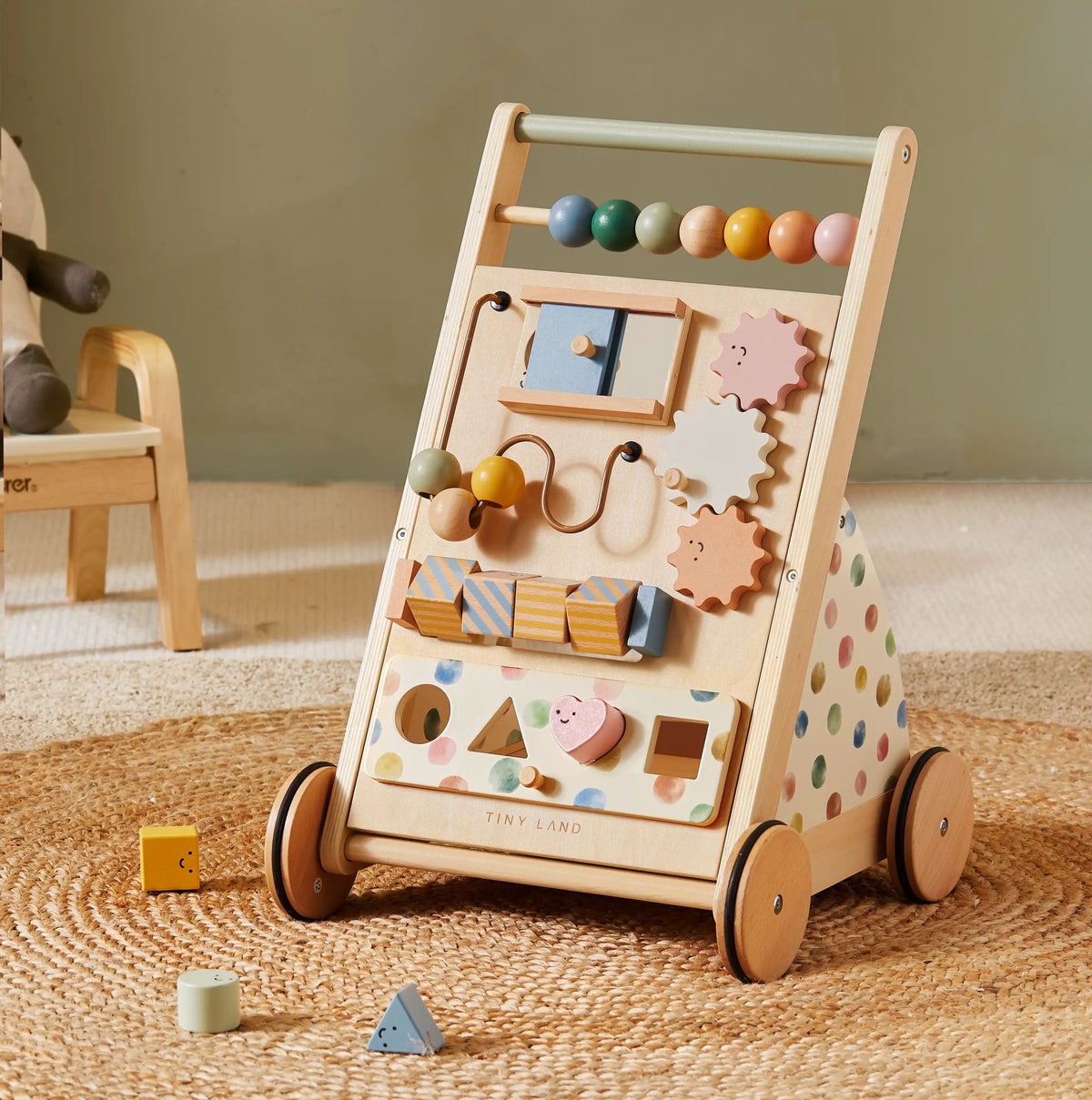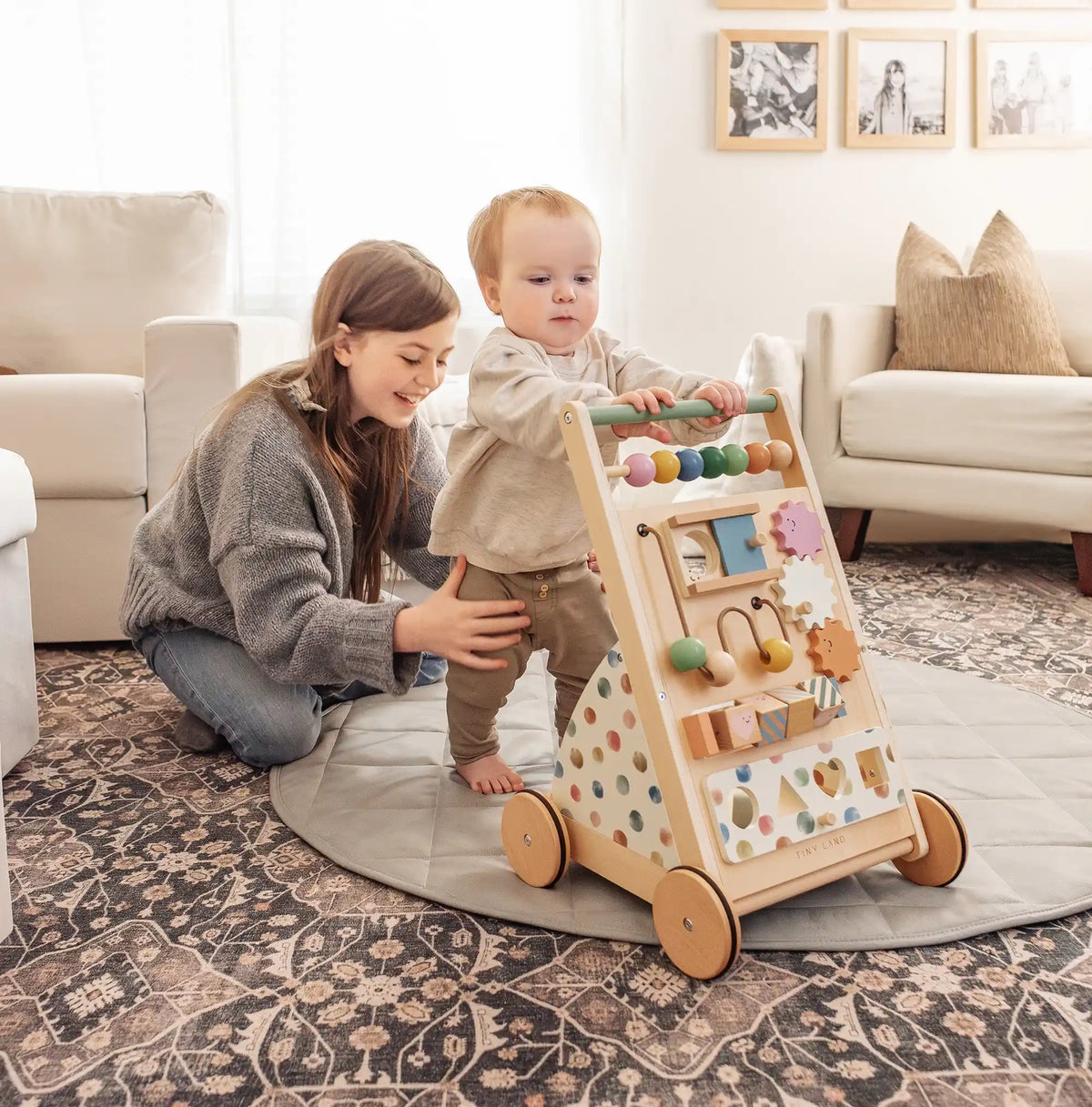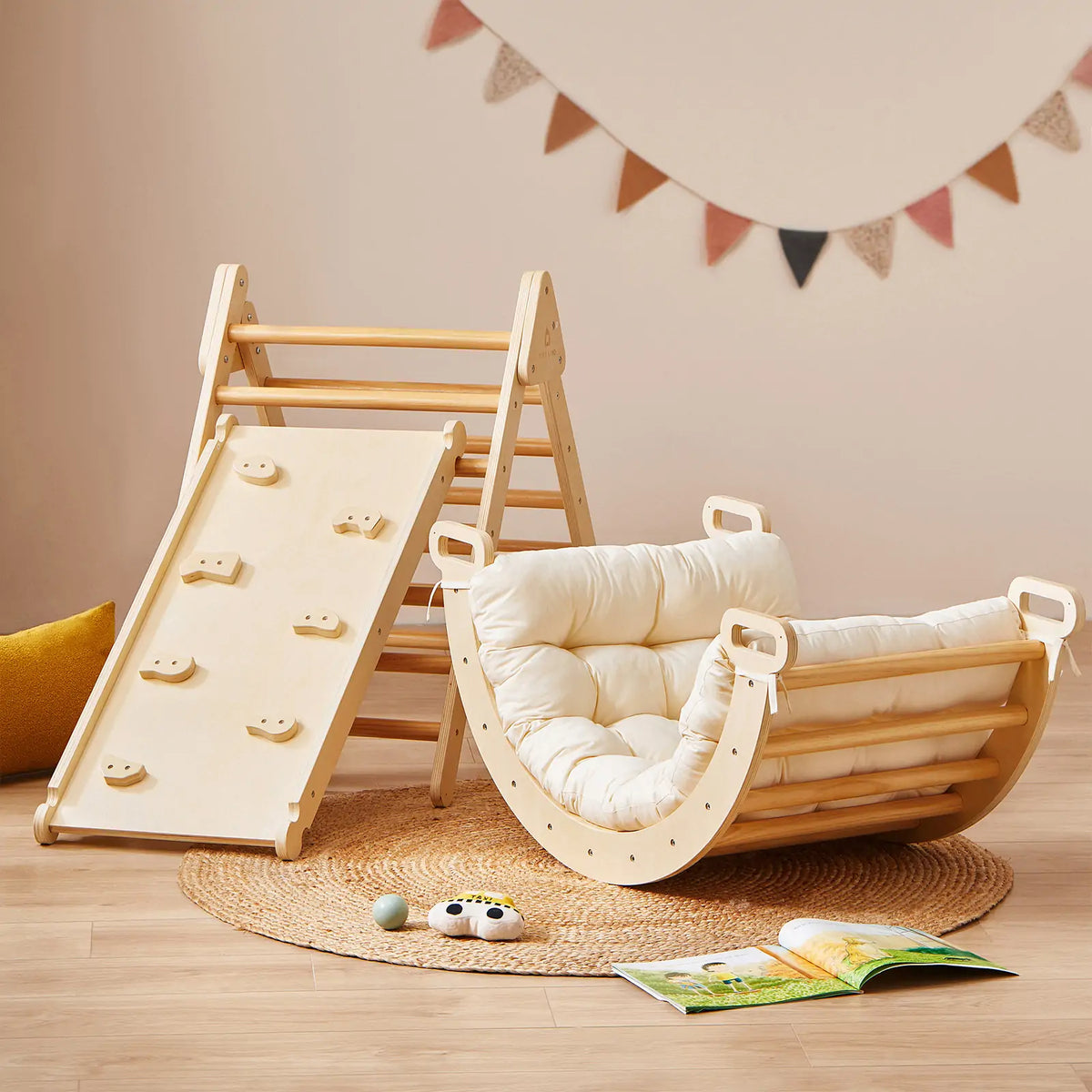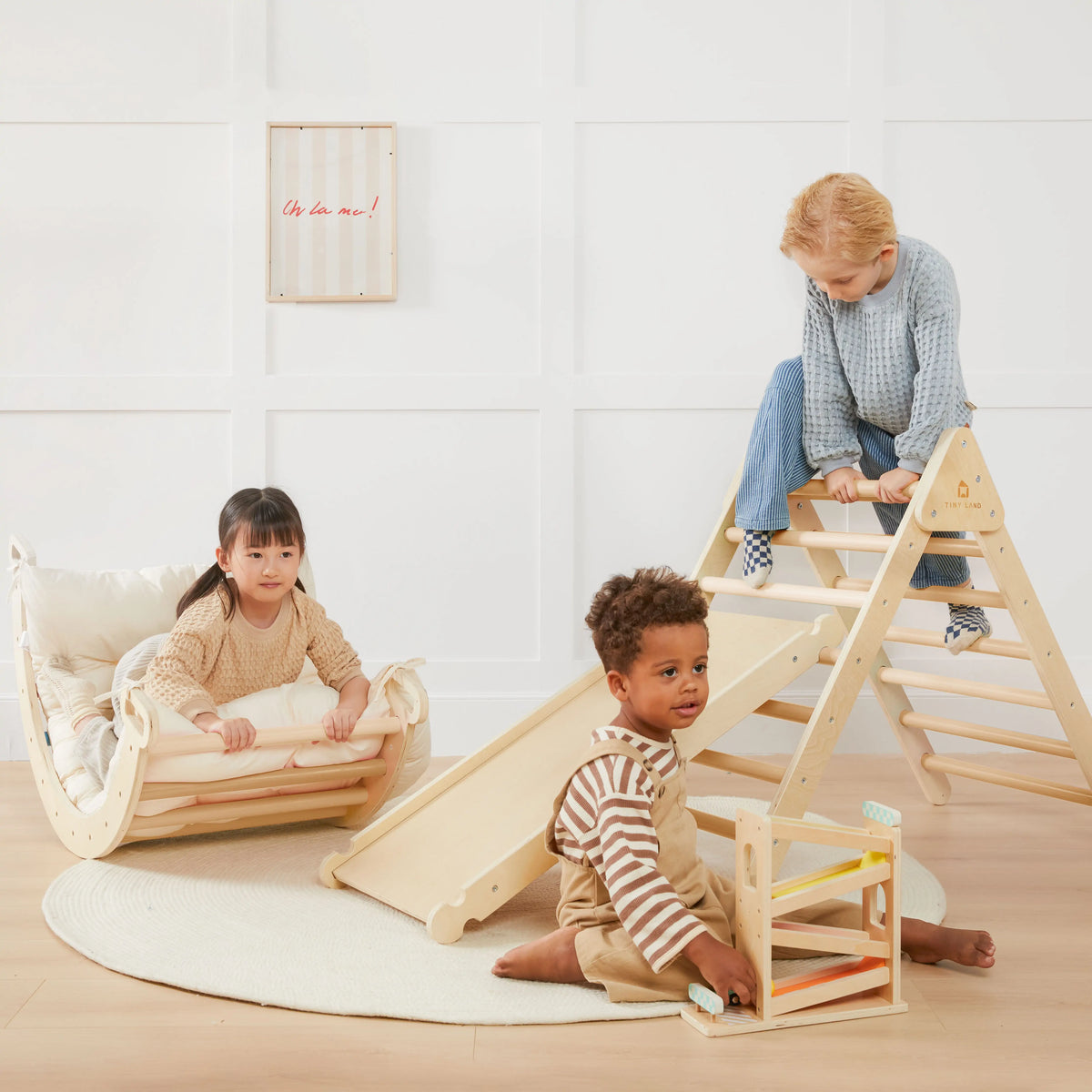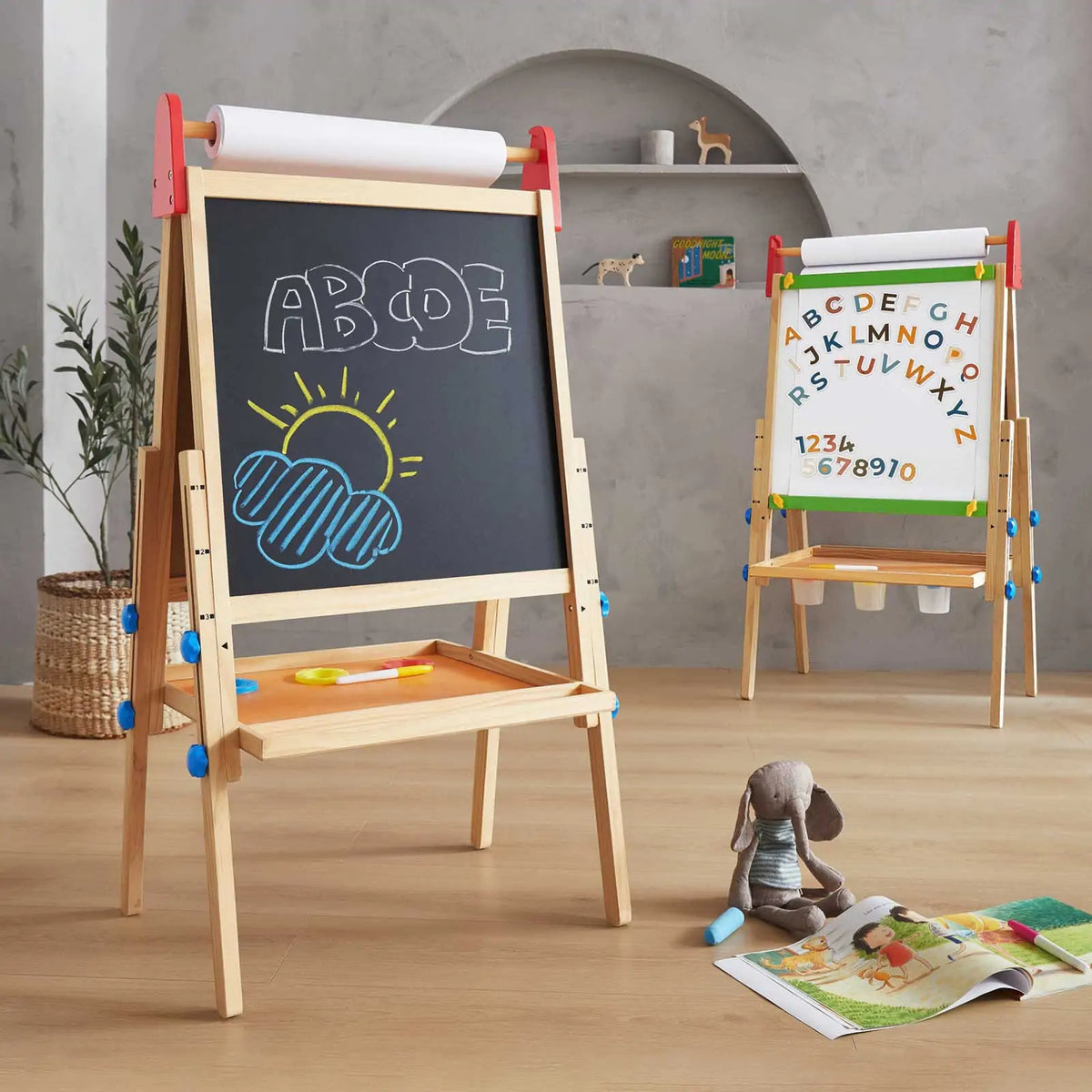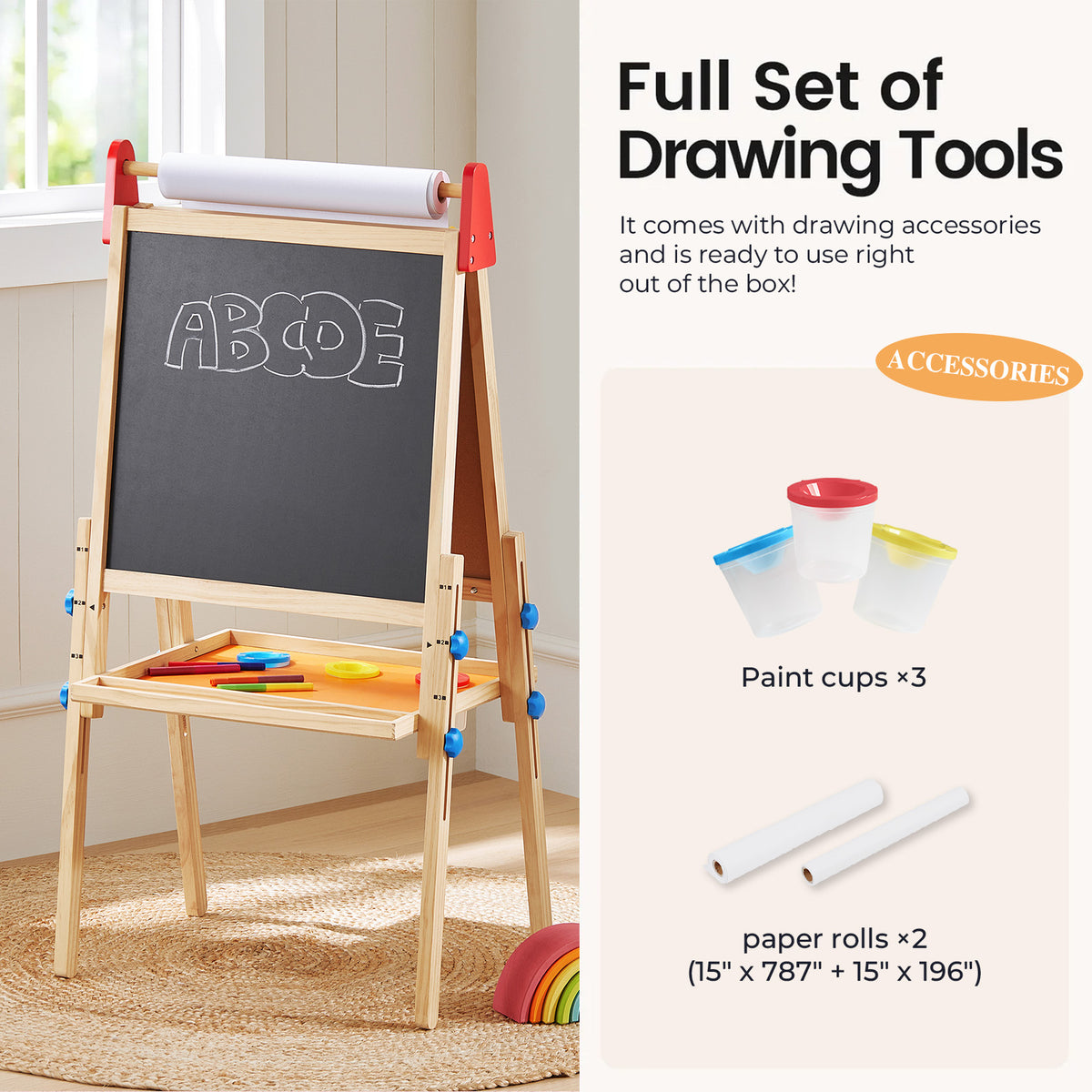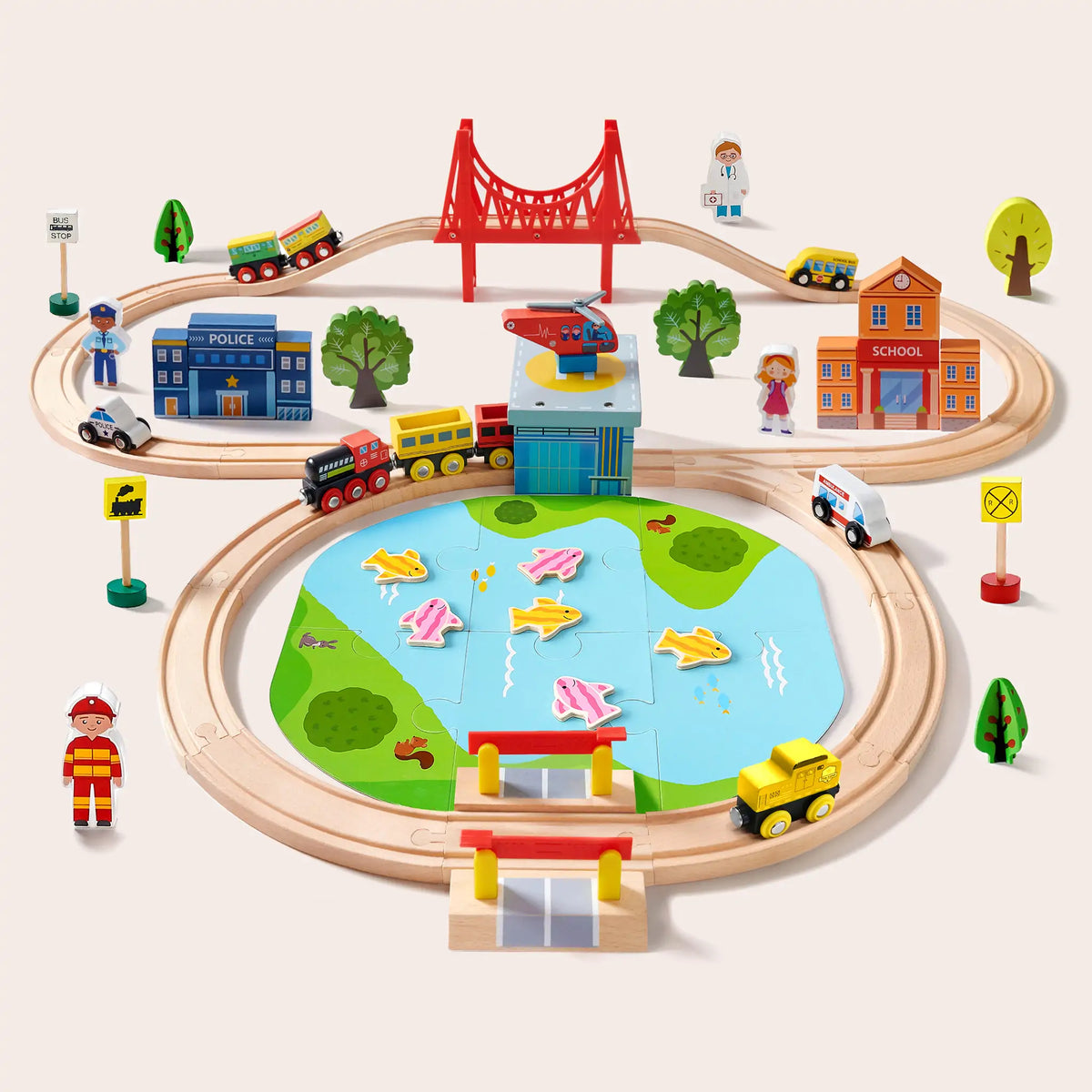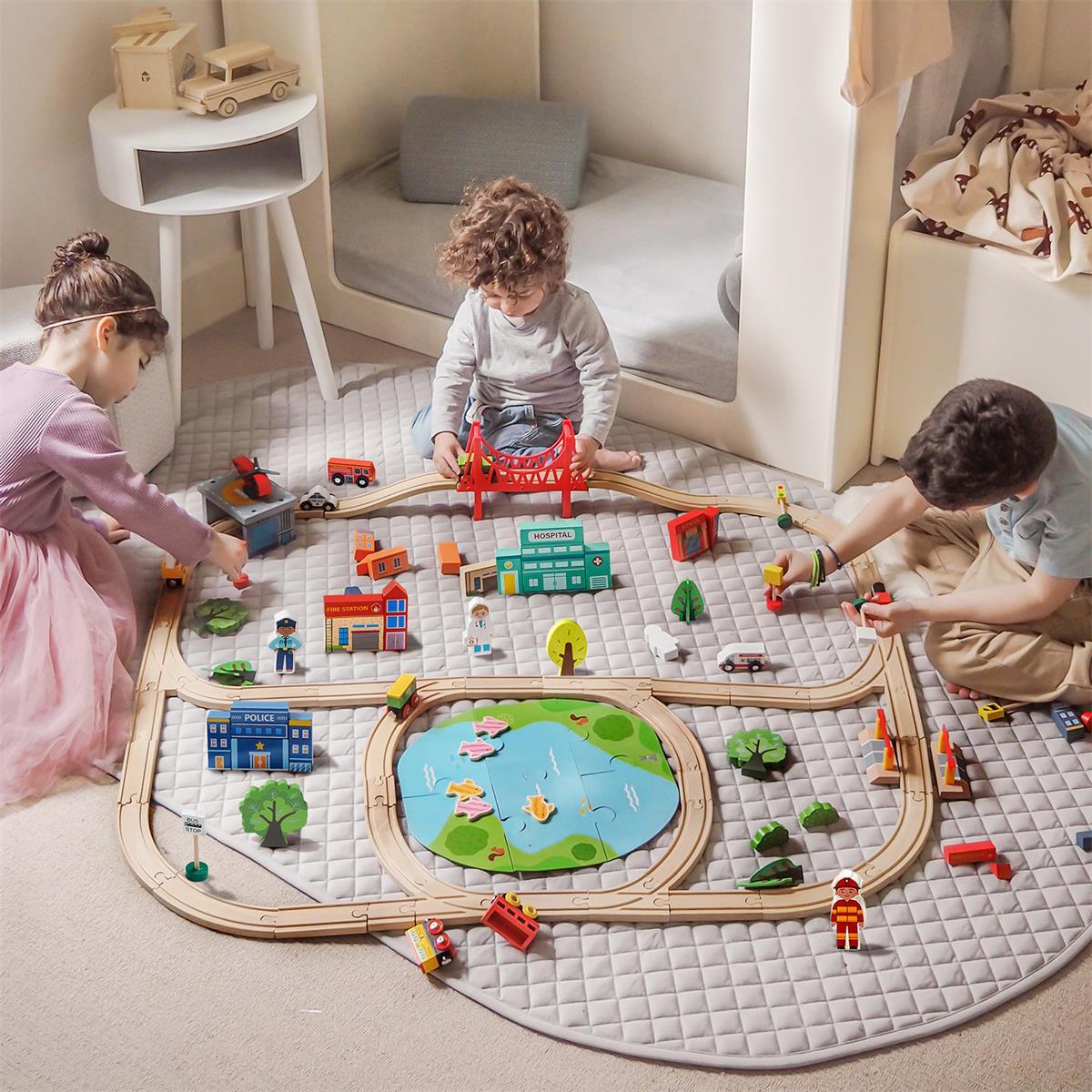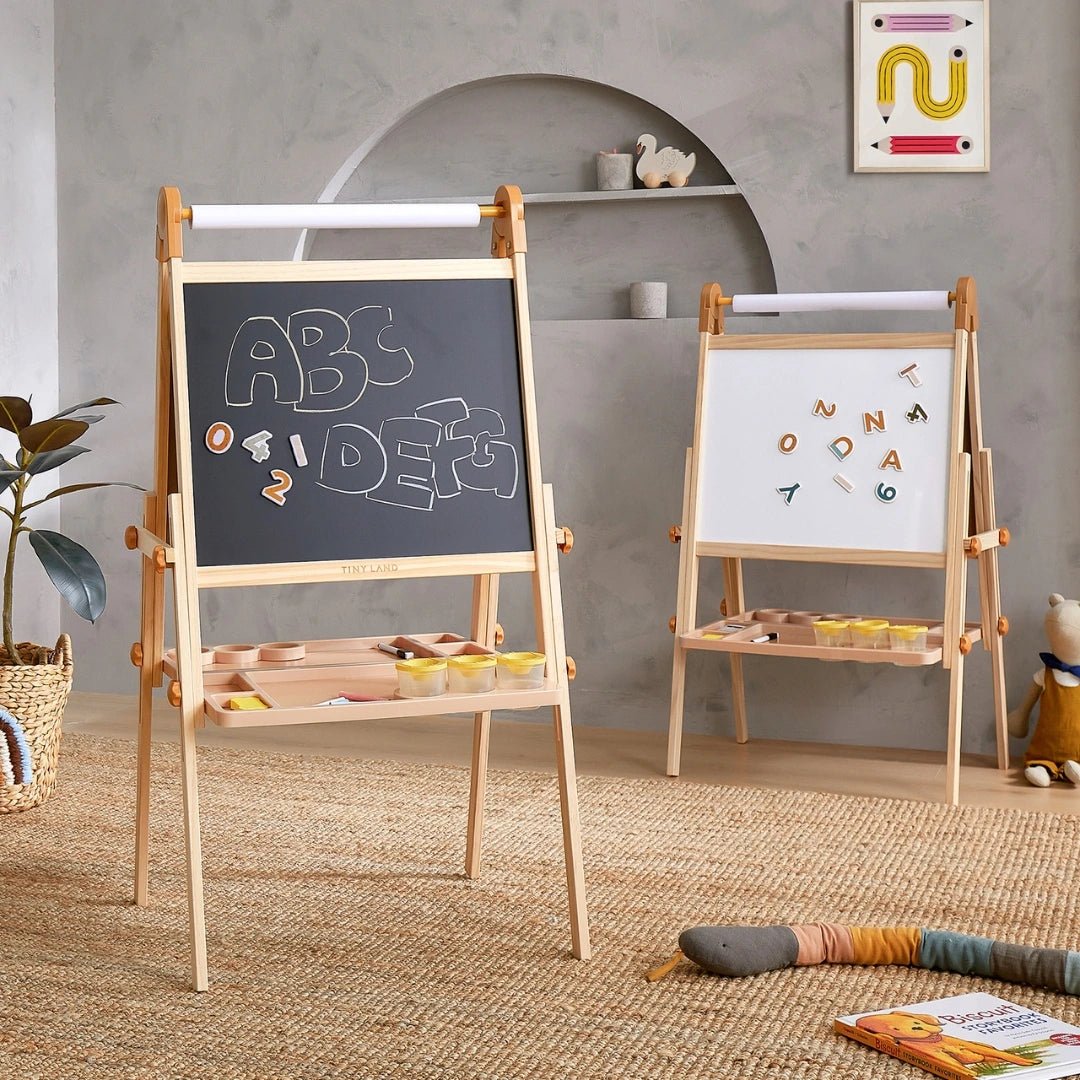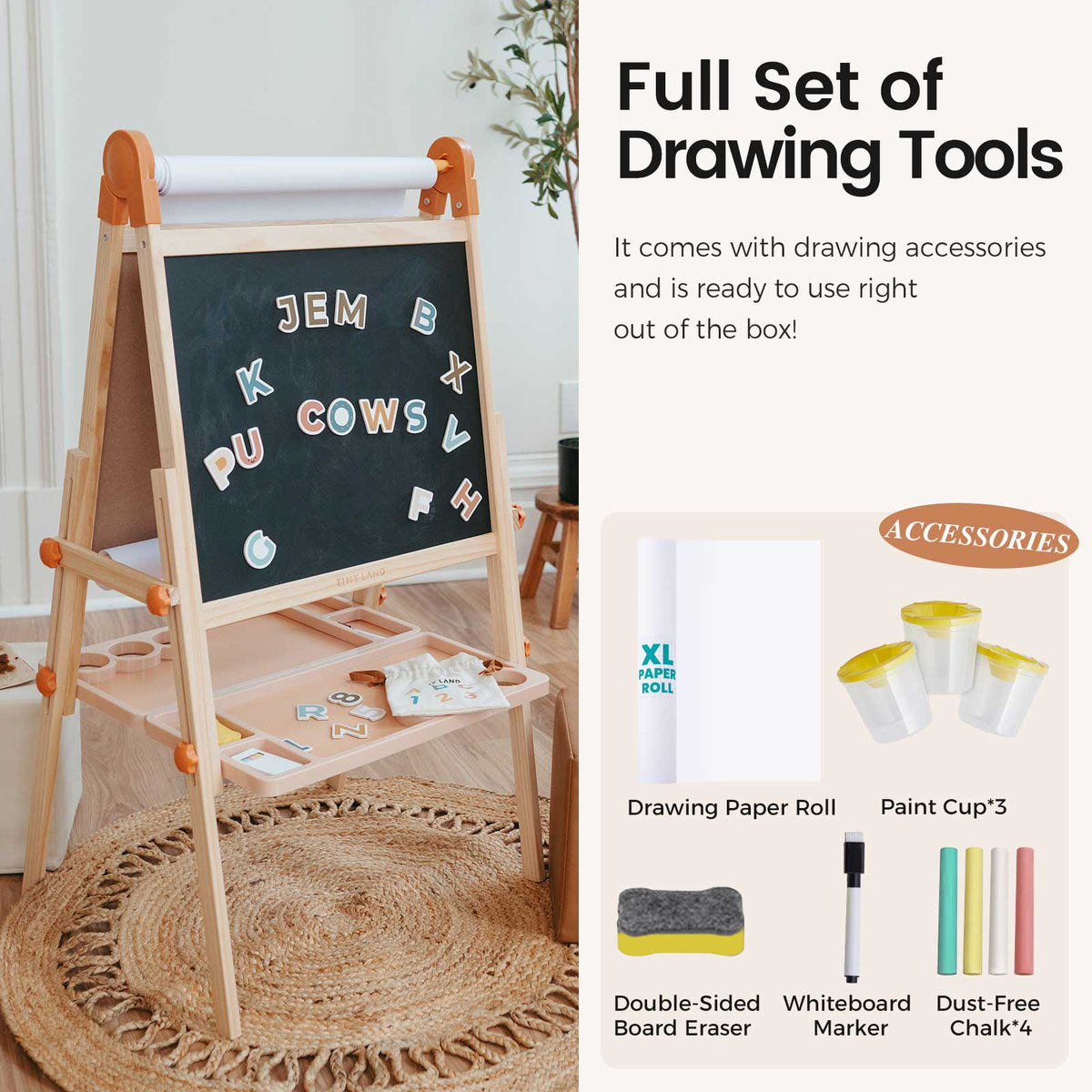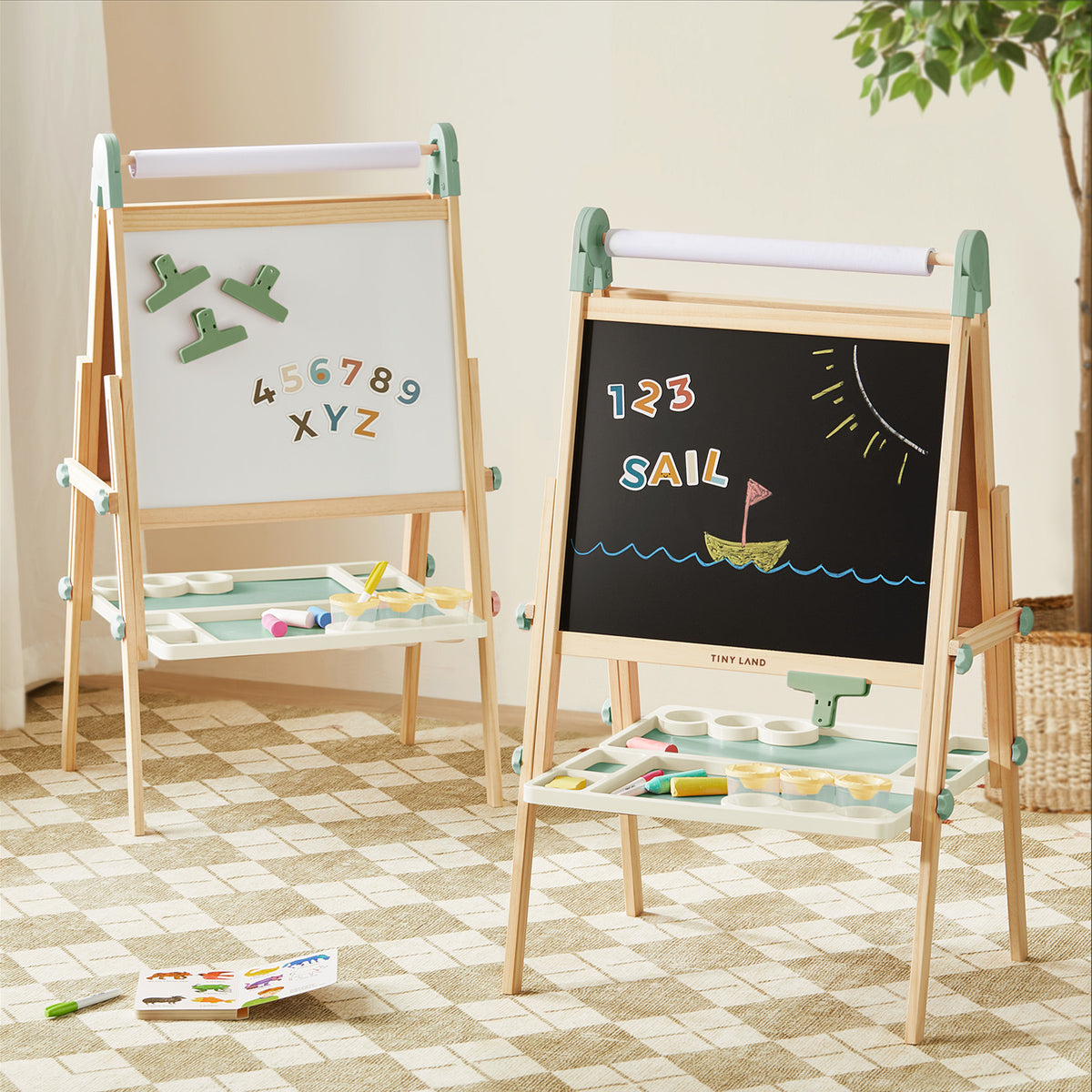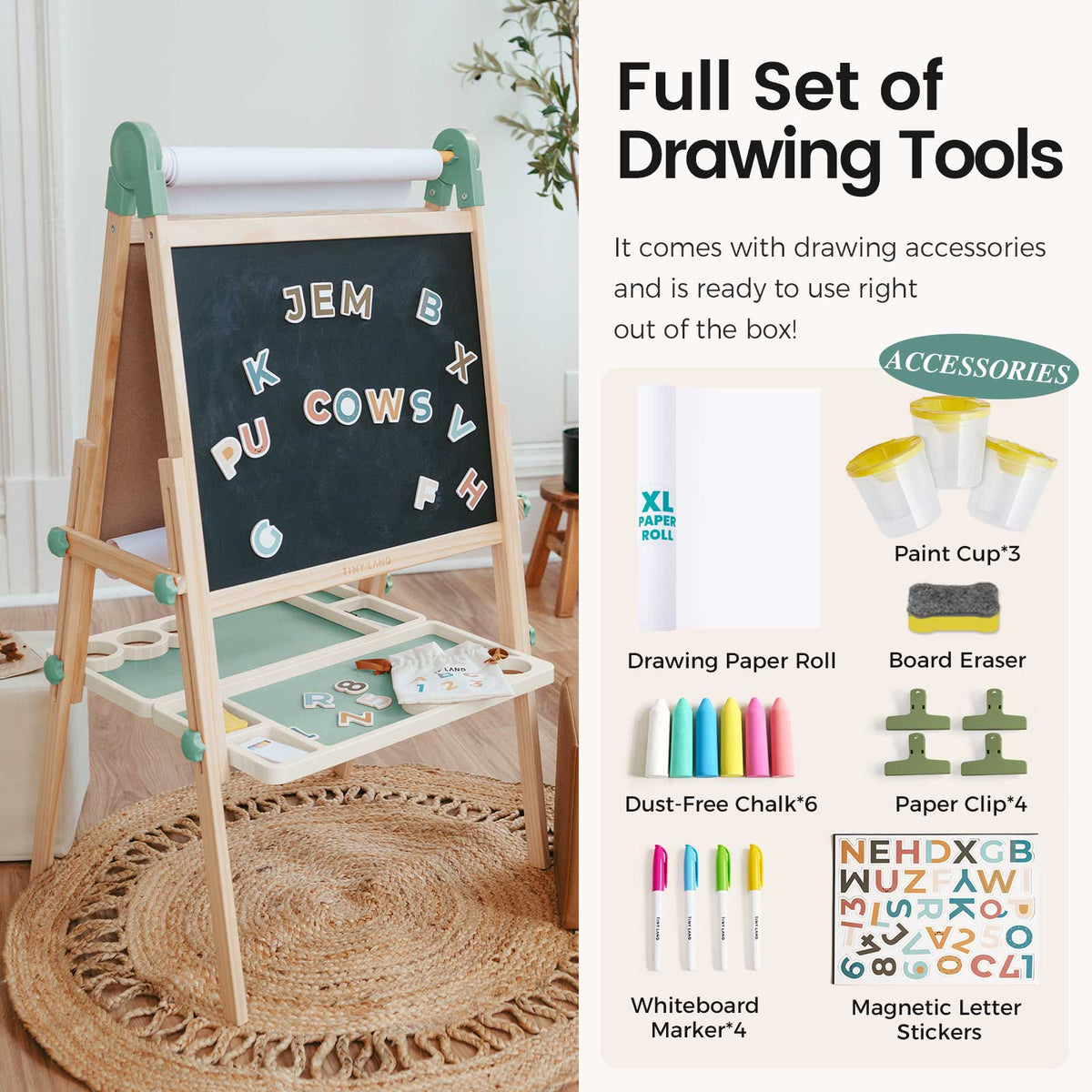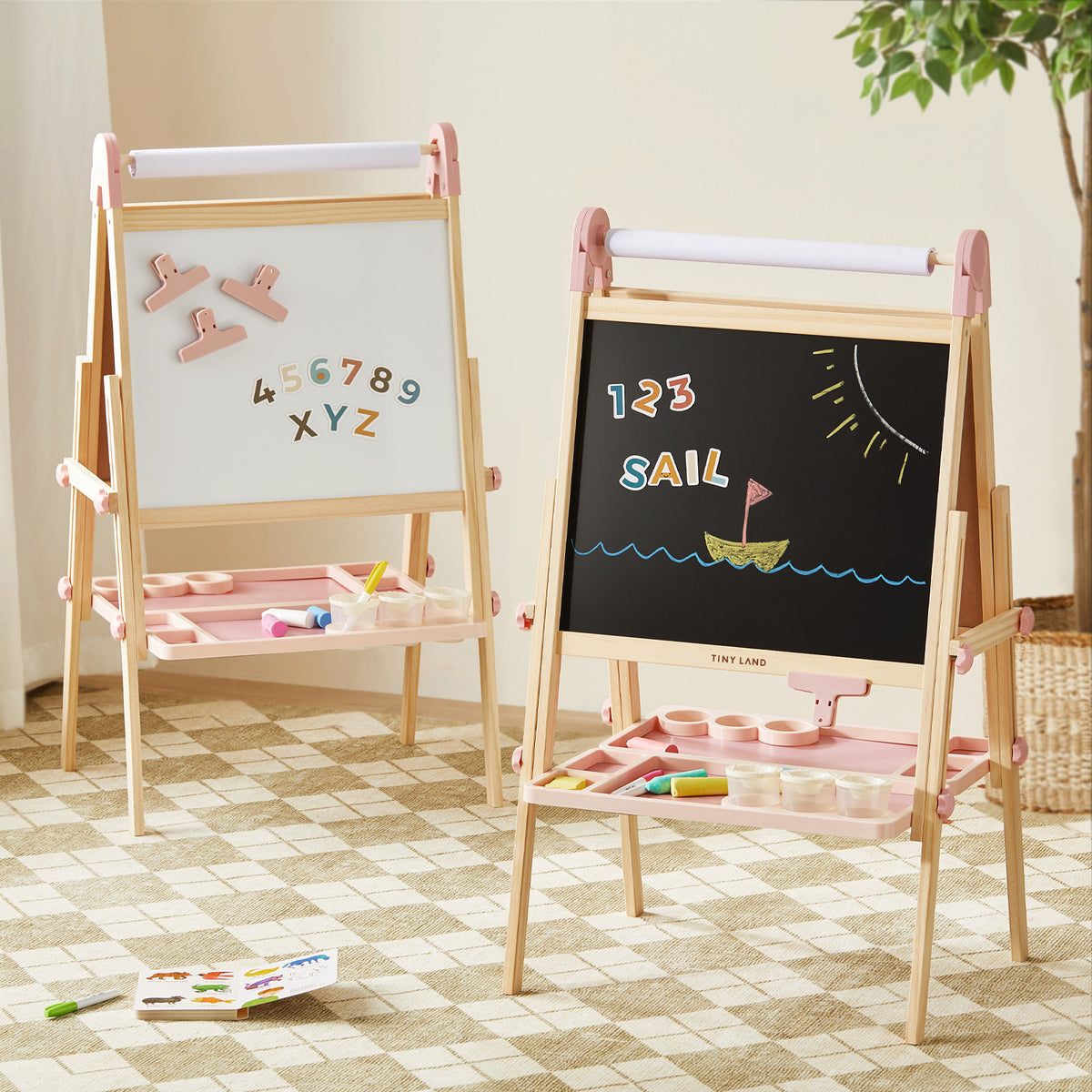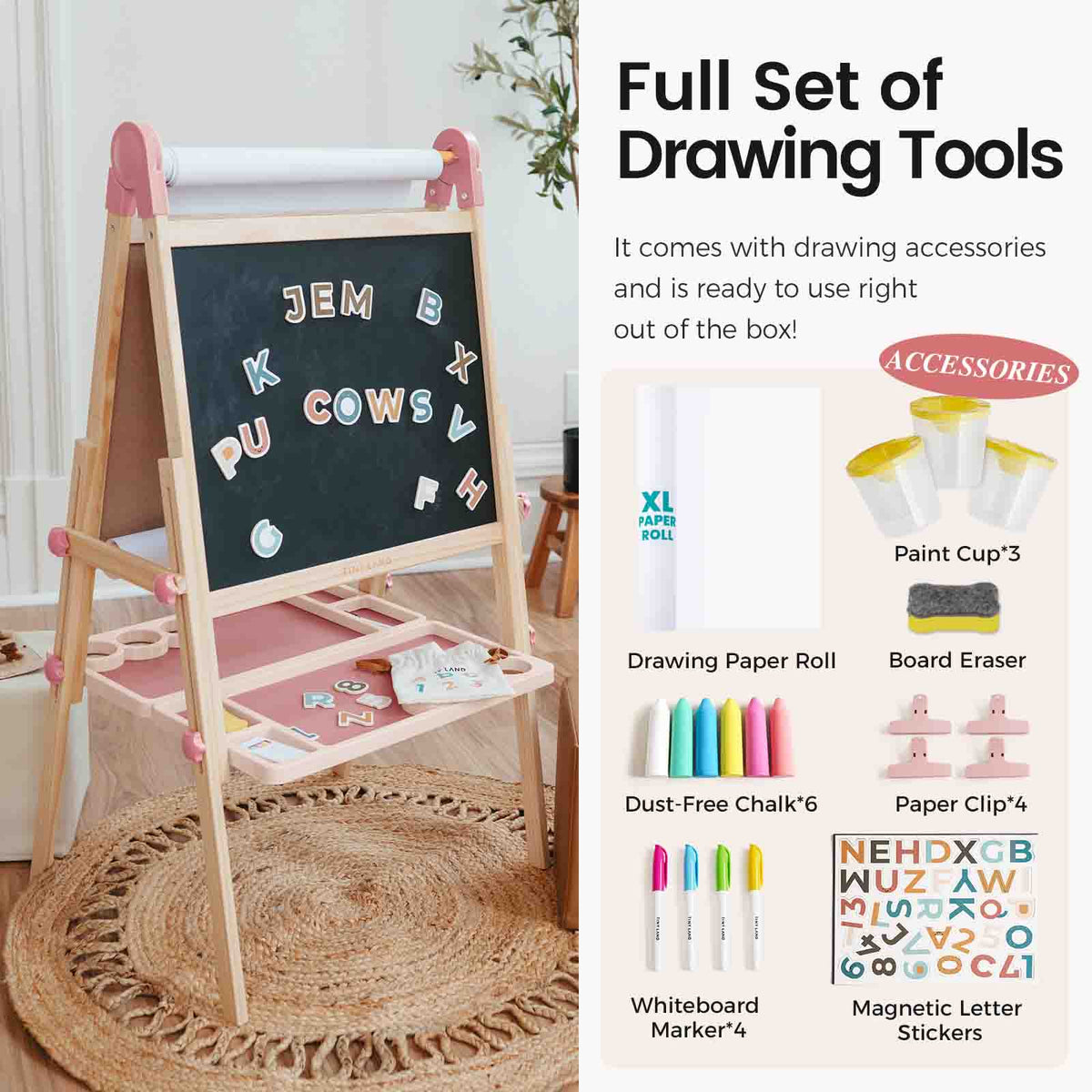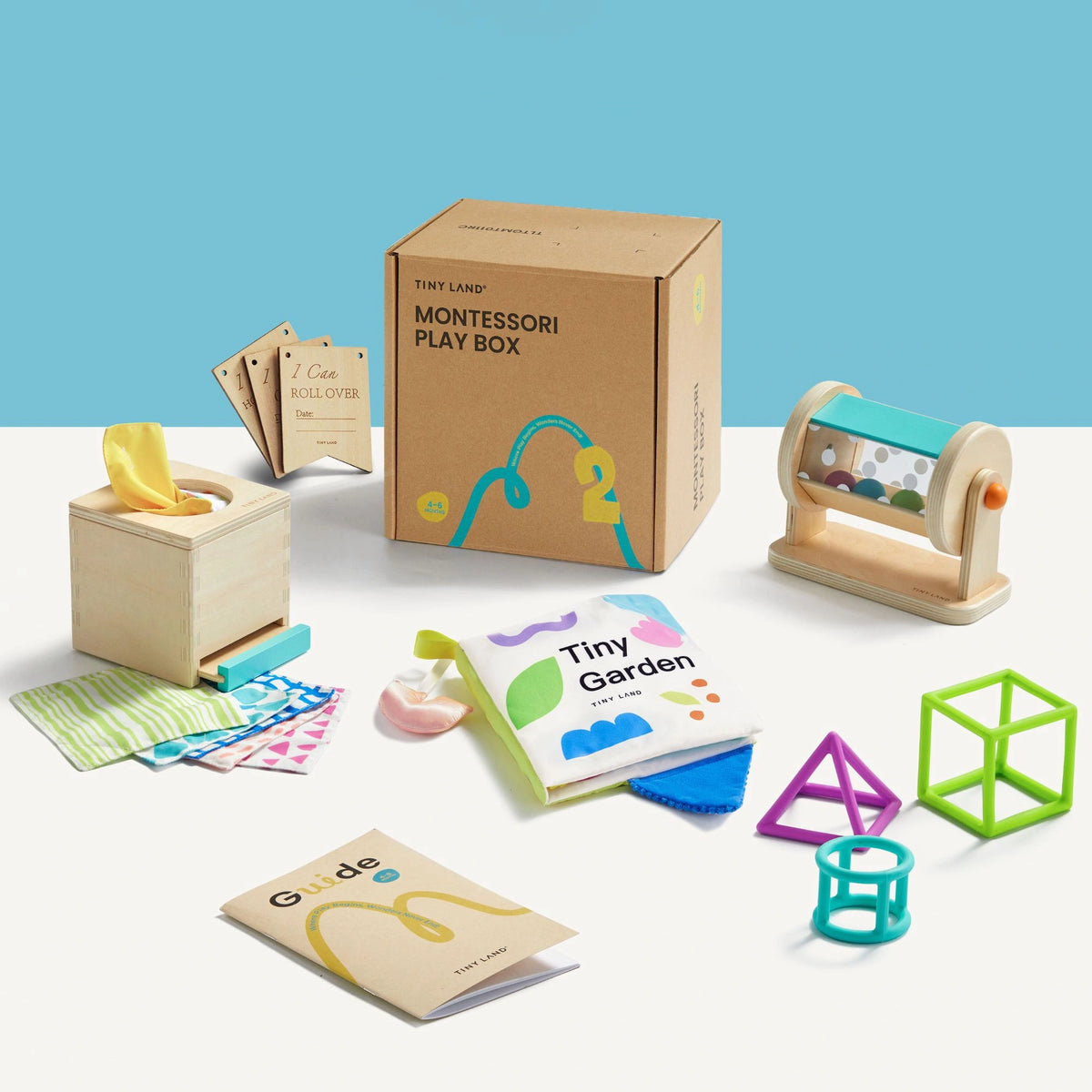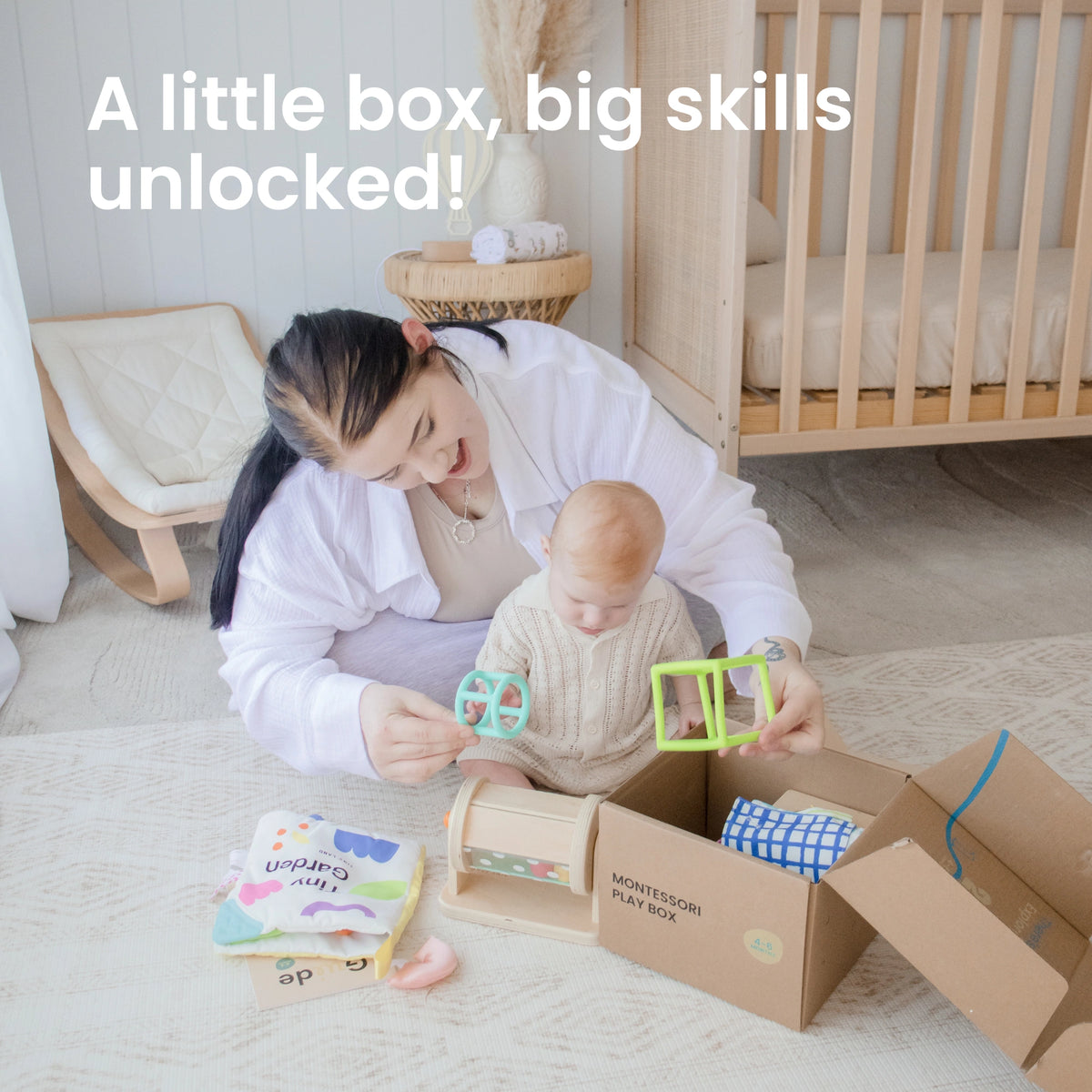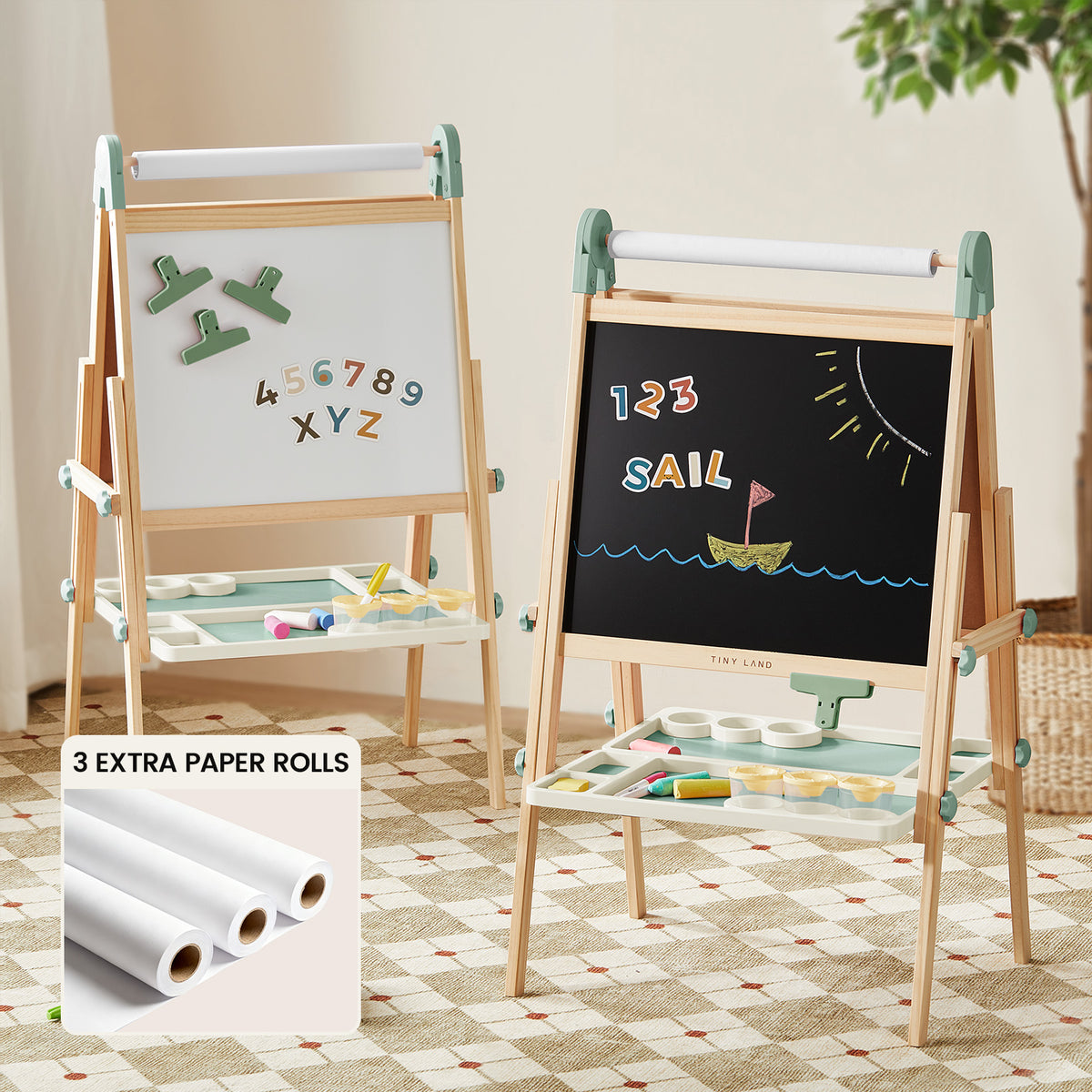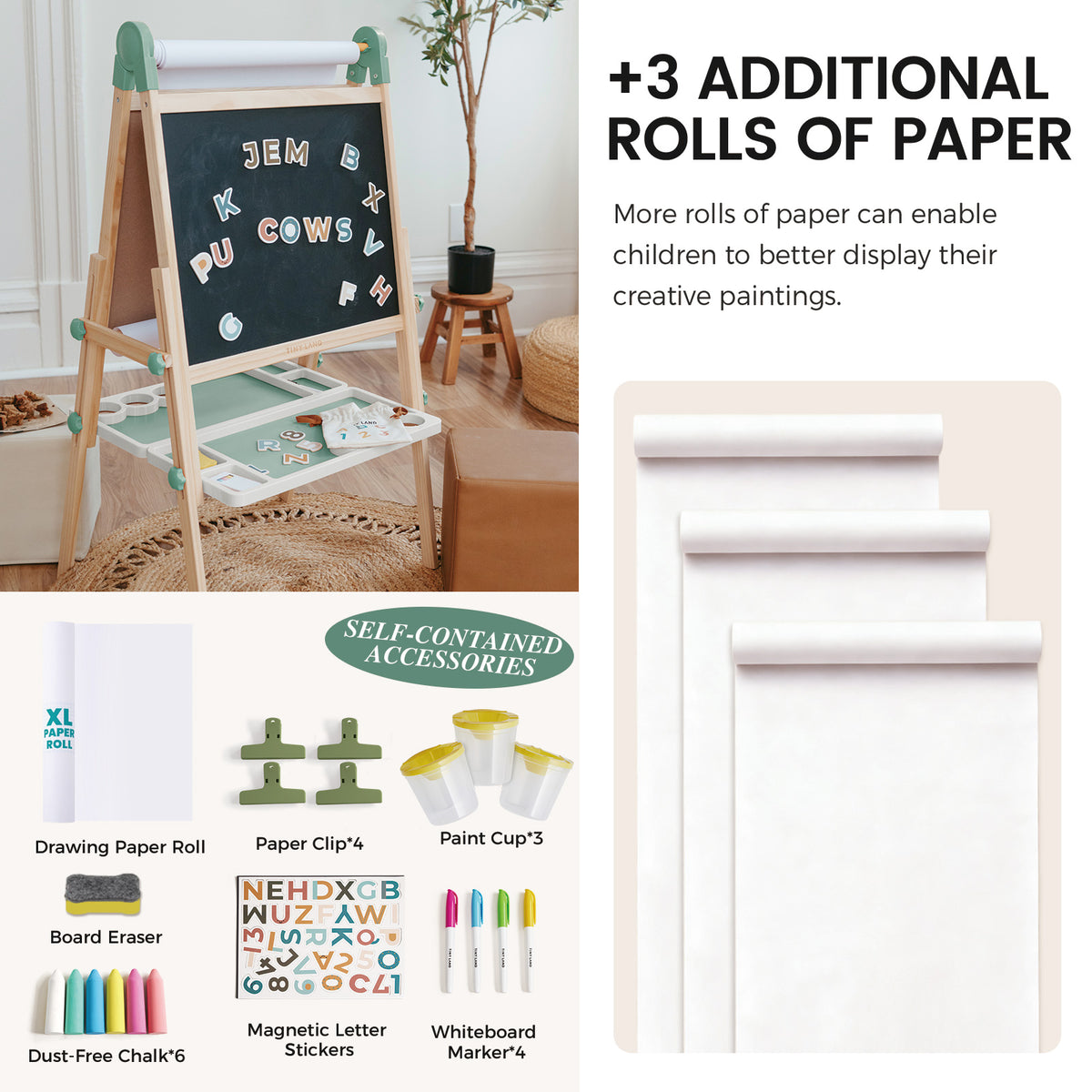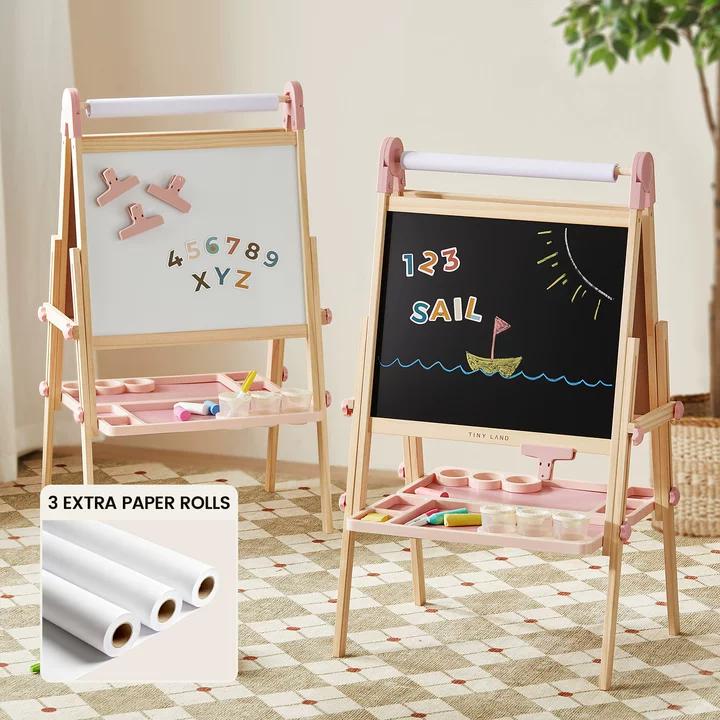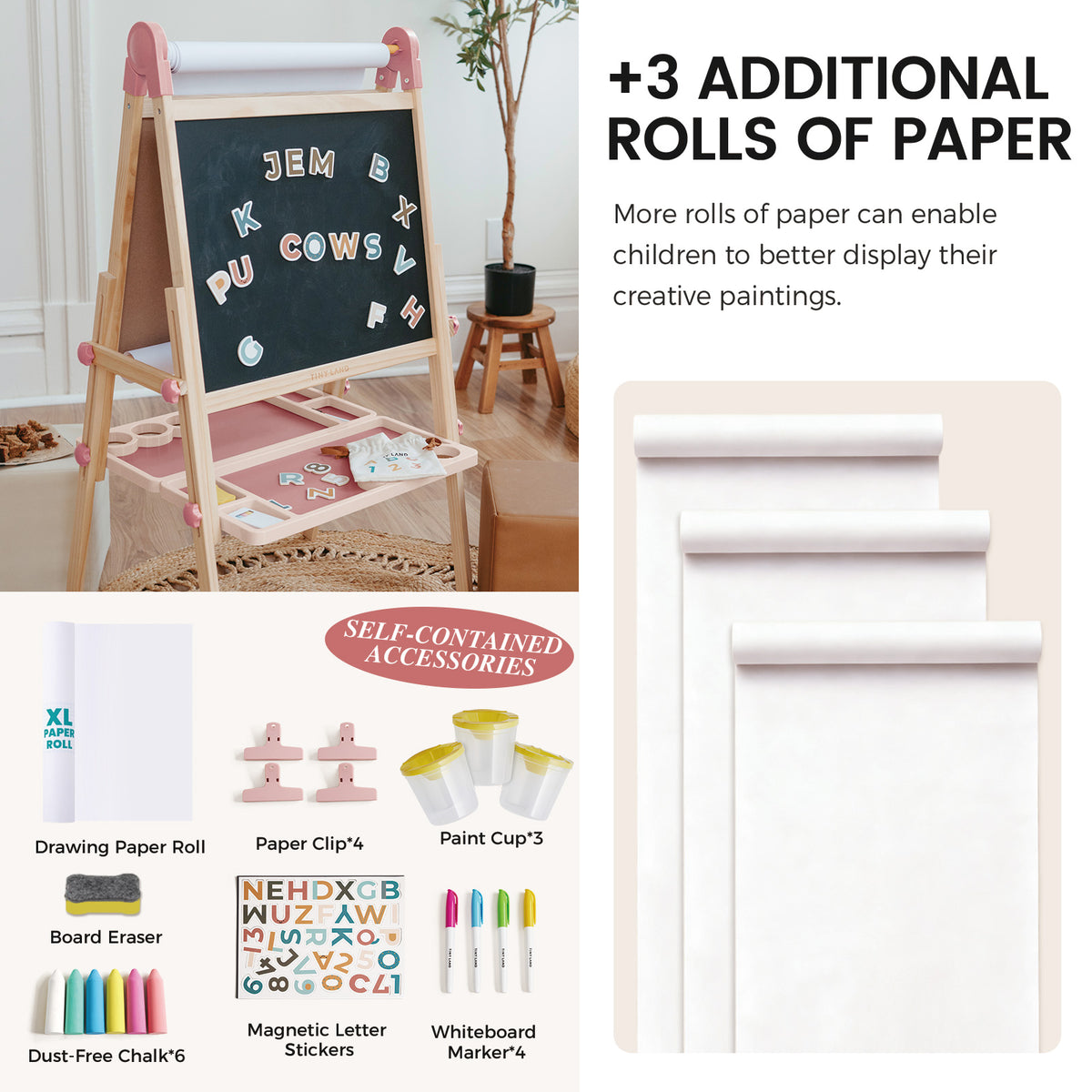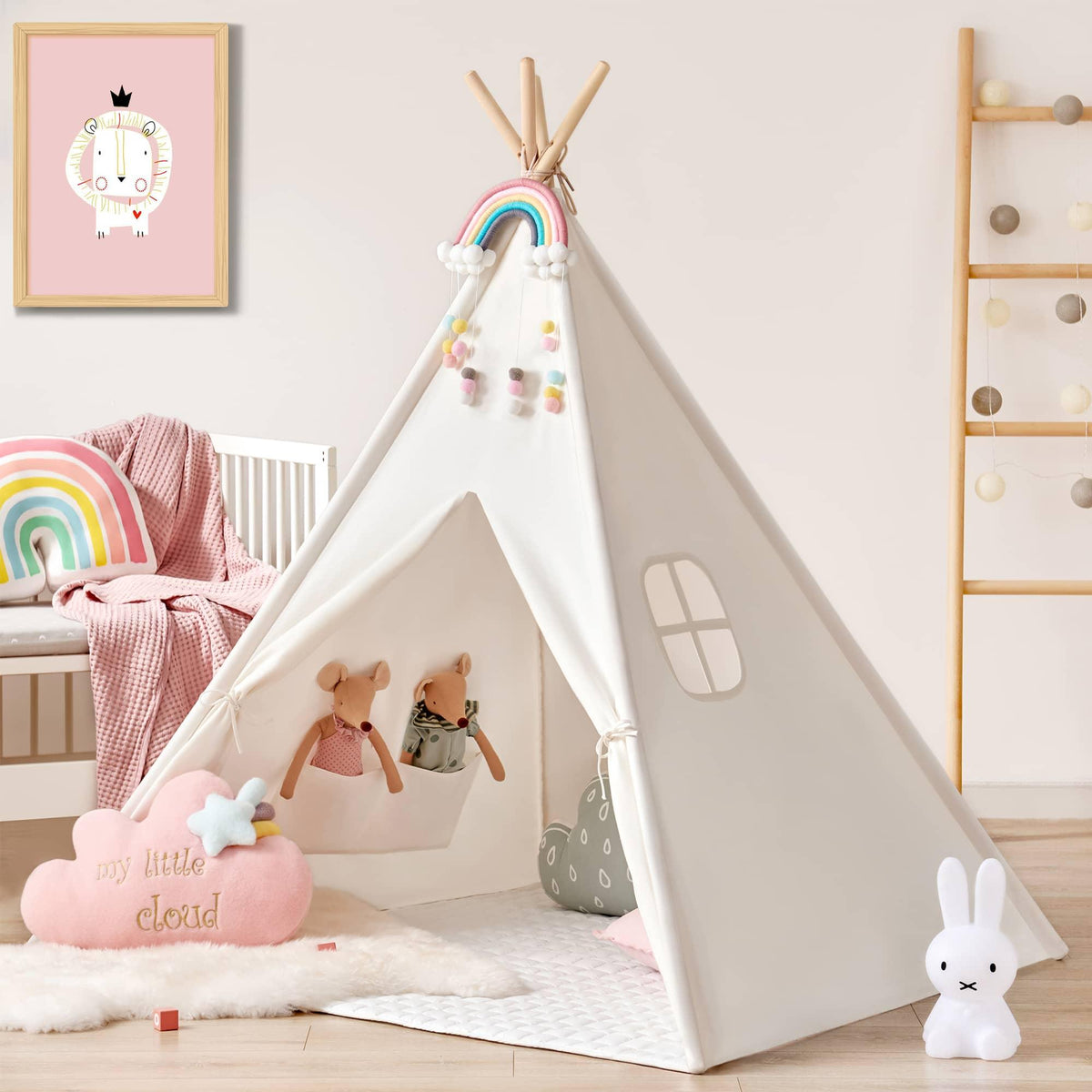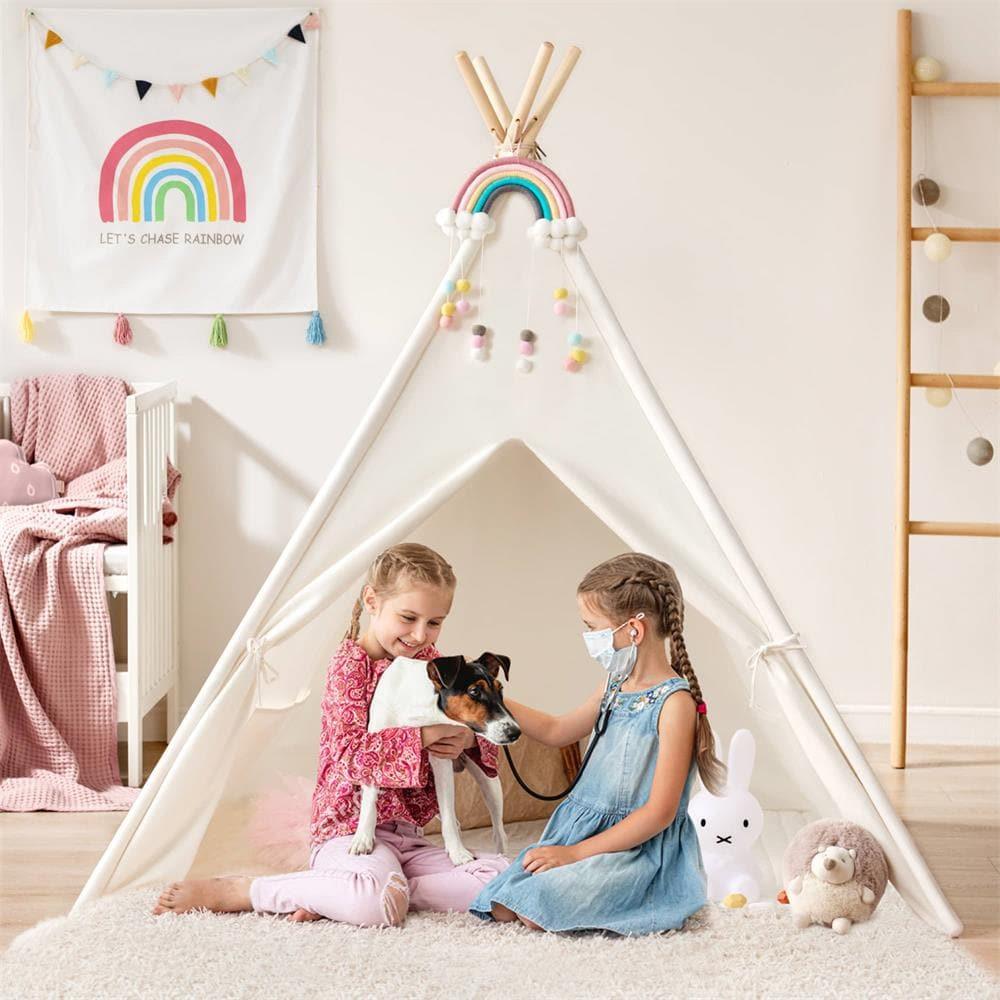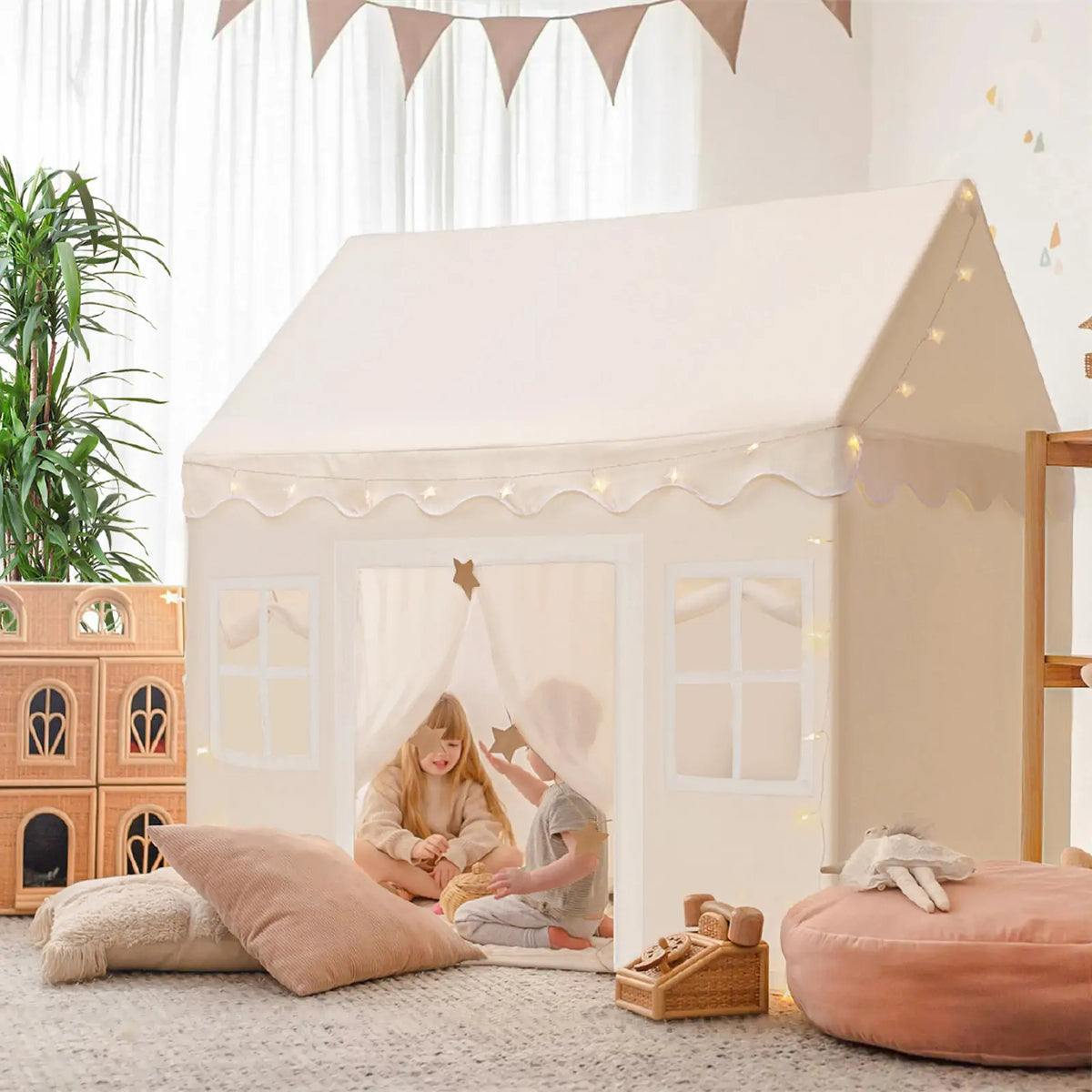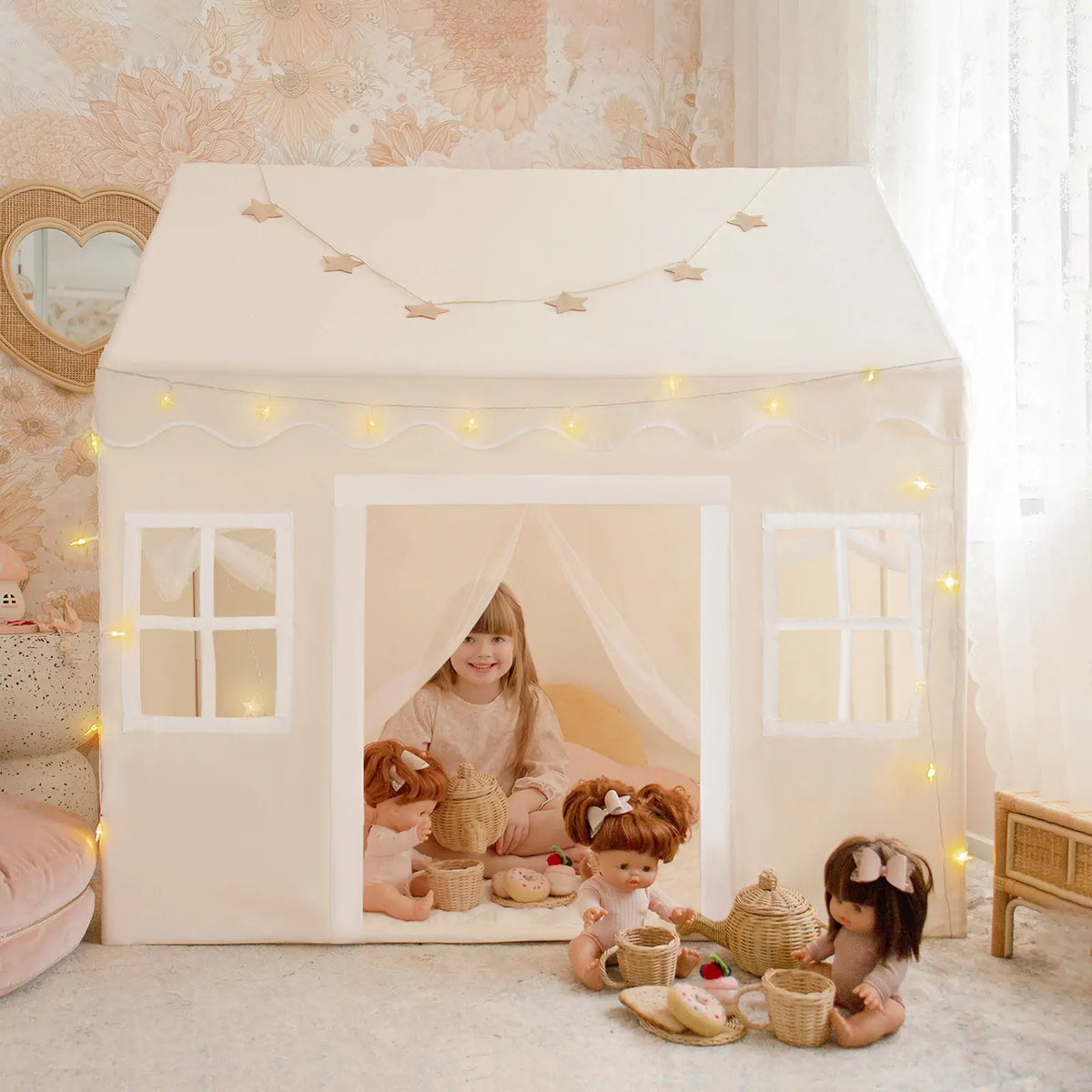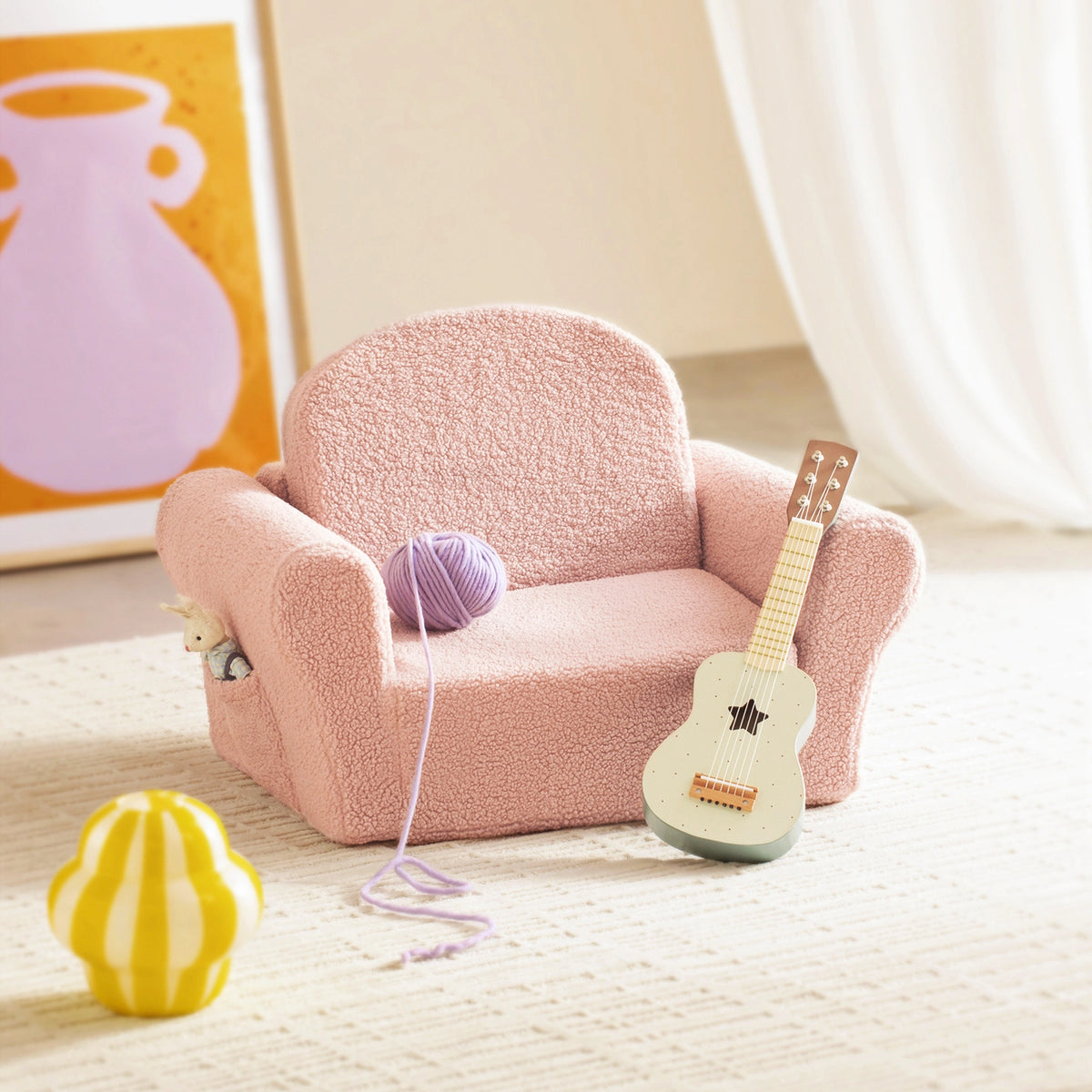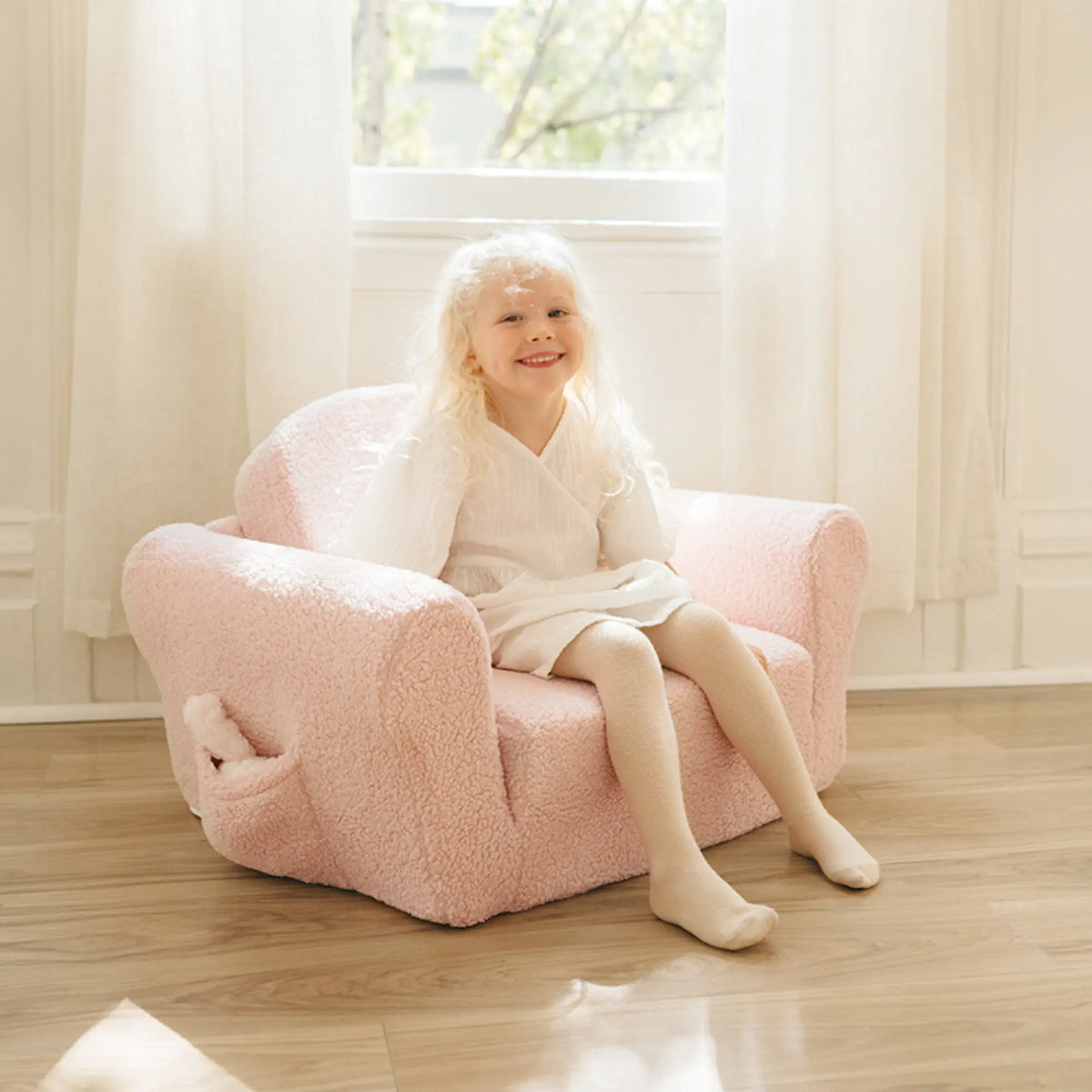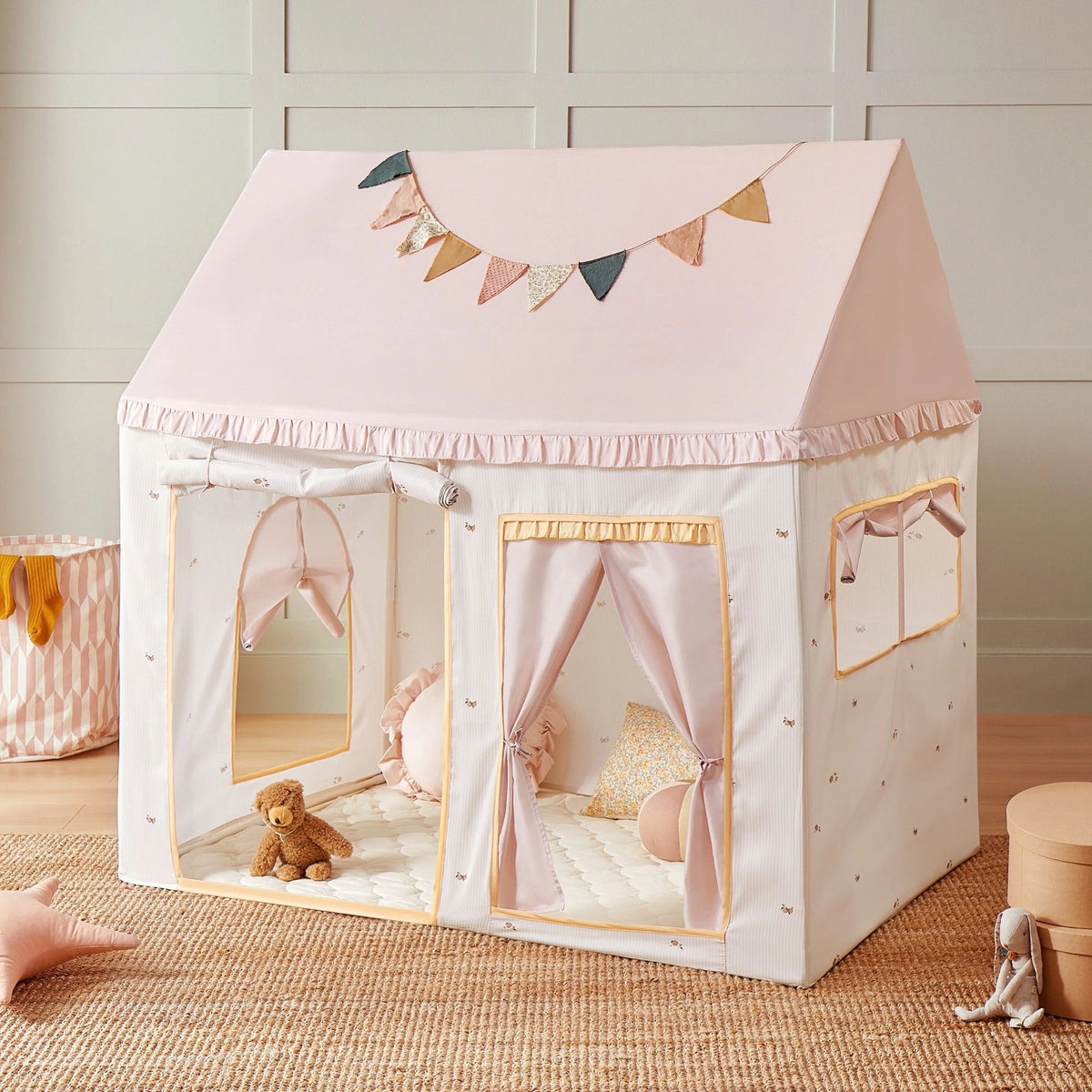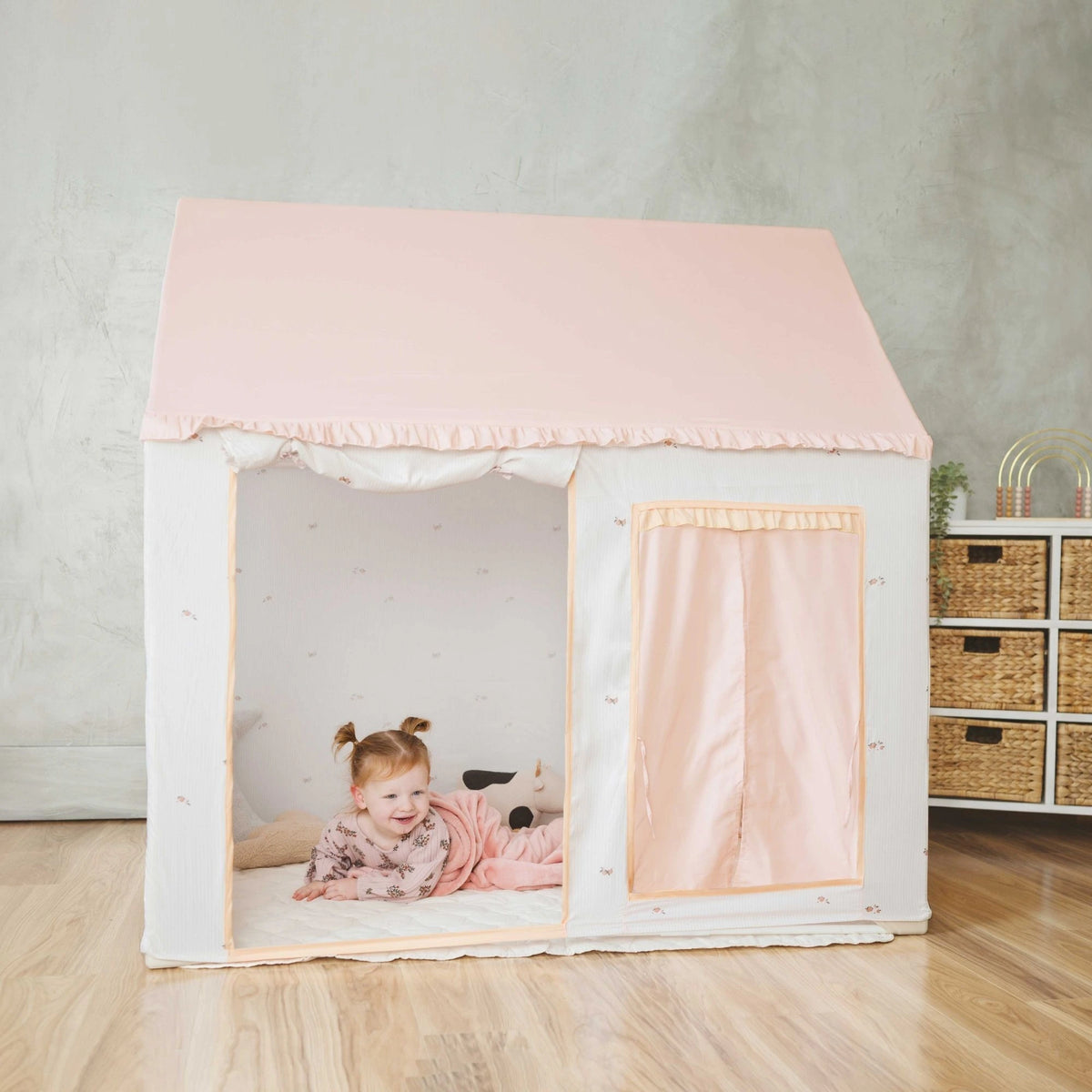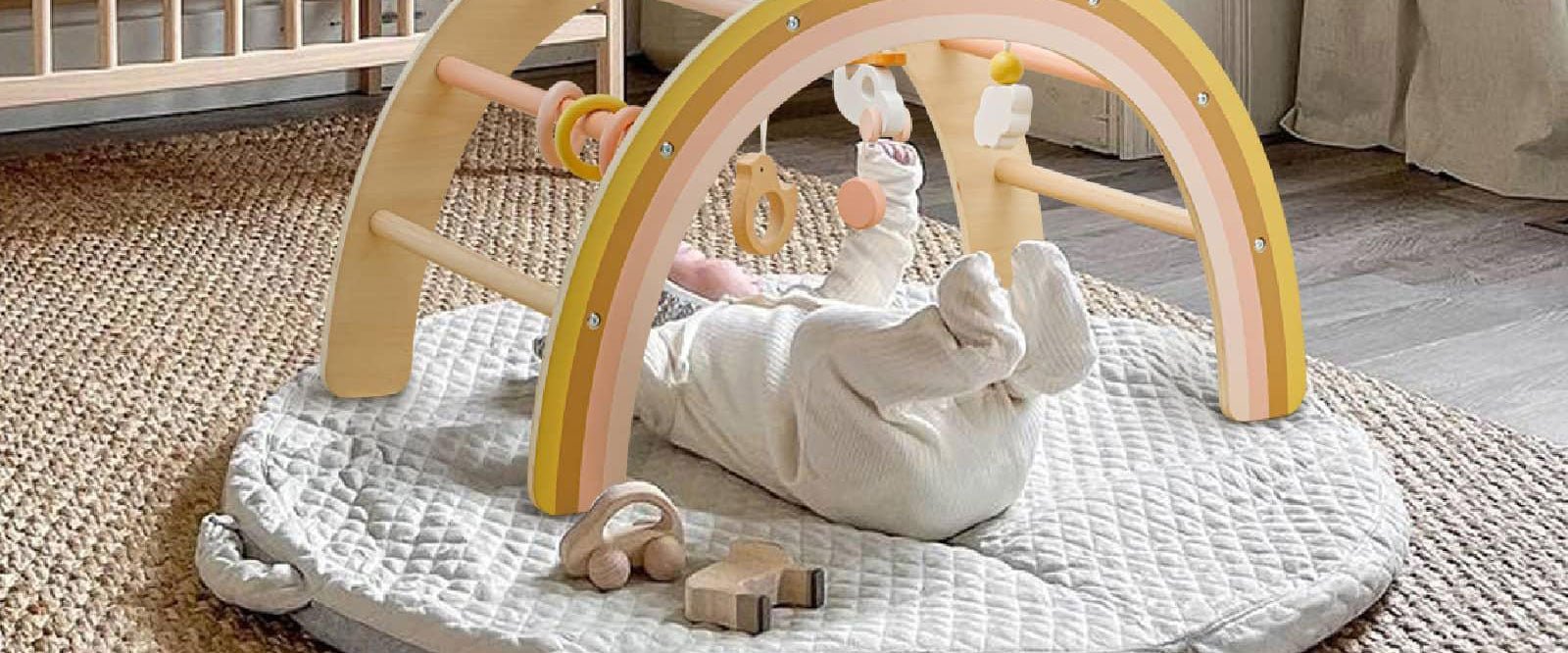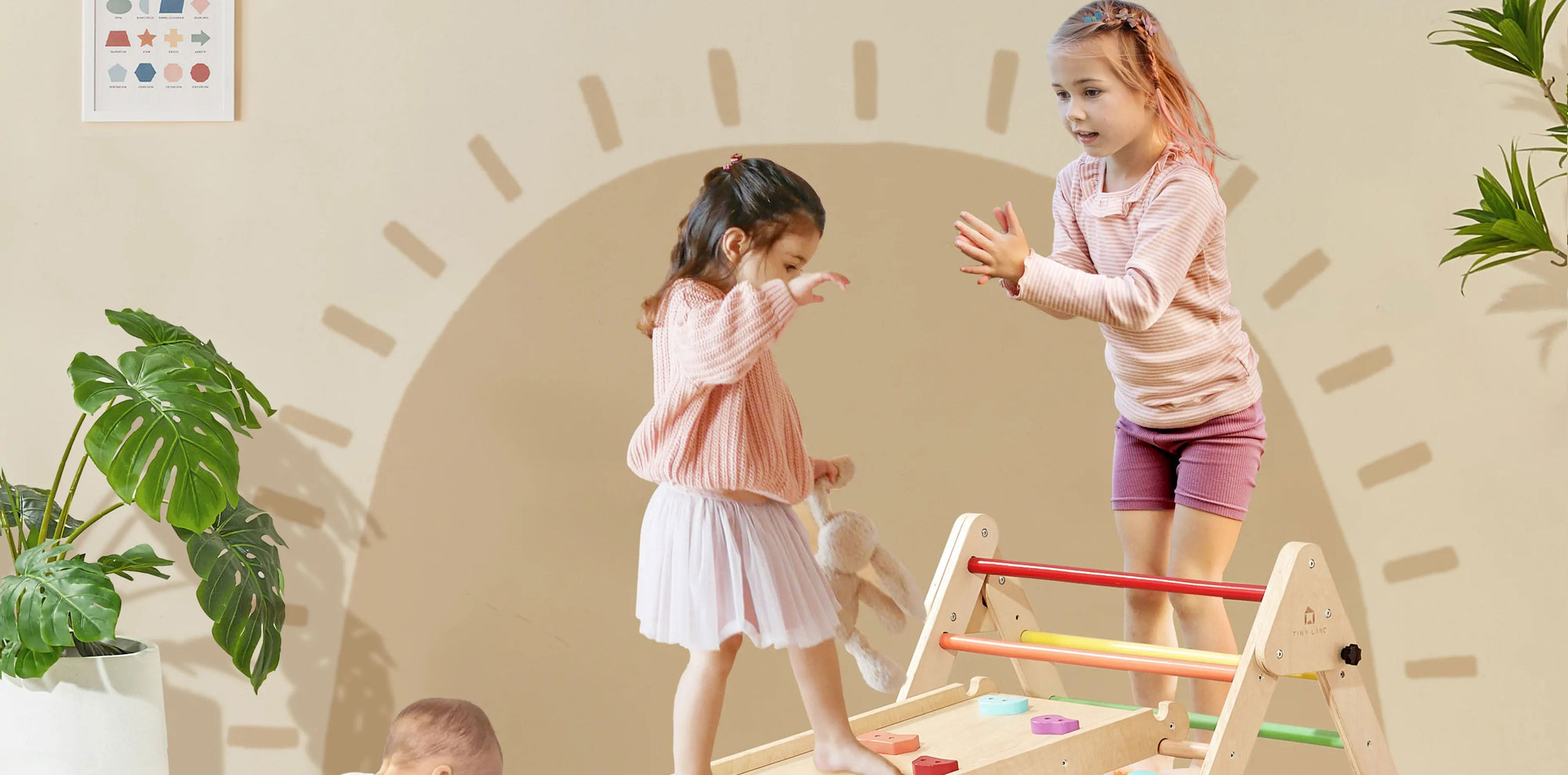Curious about when your baby can enjoy a play gym? The answer is delightfully simple! As soon as your little bundle of joy starts to show interest in the world around them and can hold their head up, it's play gym time. Typically, this happens around 3 to 4 months of age.
Once their neck and upper body are gaining strength, they can have a blast exploring the hanging toys and textures. Always remember, each baby develops at their own pace, so when they're alert and ready, introduce them to this exciting realm of sensory and motor skill development.
Are play gyms good for newborns?
Play gyms can be beneficial for newborns as they provide sensory stimulation. Colorful toys, textures, and hanging items encourage visual and tactile exploration. These gyms aid in developing motor skills as babies reach, grasp, and kick. Gentle tummy time on the mat promotes neck and upper body strength.
Interactive elements like mirrors or crinkly surfaces enhance cognitive growth. Newborns can also enjoy some supervised play, fostering a sense of curiosity. Remember to prioritize safety by selecting gyms with securely attached toys and appropriate materials. Always stay engaged during playtime, ensuring a comforting and supportive experience. In conclusion, play gyms offer a fun and educational way for newborns to grow and learn.
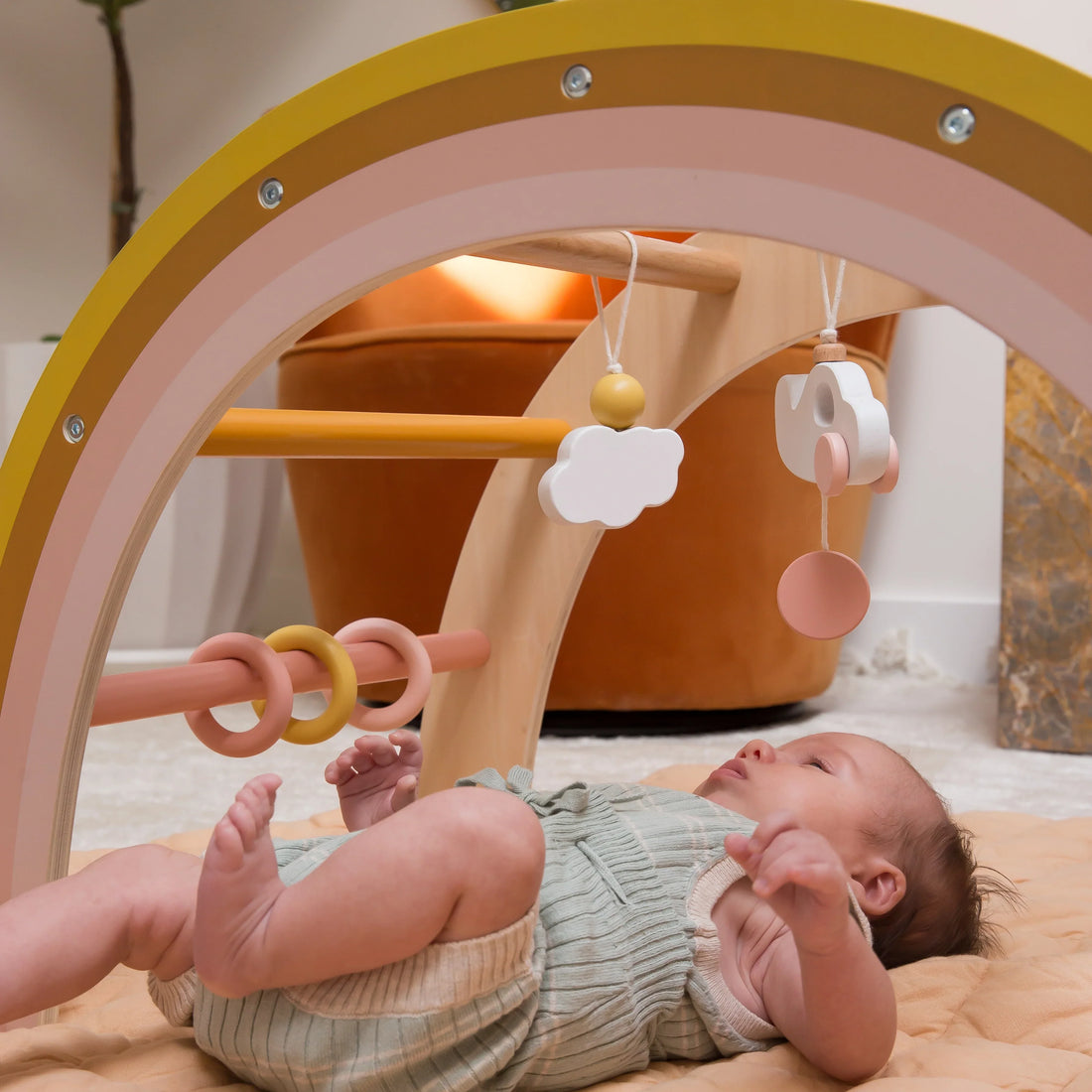
When Can Baby Use Play Gym
Babies can start using play gyms from birth up to around 5-6 months. Initially, they enjoy lying on their backs, exploring the colorful toys and patterns above. Around 2-3 months, they begin reaching and batting, improving hand-eye coordination. Tummy time becomes crucial for neck strength at 3-4 months.
As they reach 4-5 months, babies might roll or sit with support, engaging more actively. Once they begin to roll consistently, around 5-6 months, the play gym usage might decrease. Always observe their comfort and interest; if they seem uninterested or can roll off, it's time to transition. Flexibility is key; some babies might outgrow it earlier or later. Overall, play gyms provide a valuable sensory and developmental experience during a baby's early months.
Baby Play Gyms: You Need to Know More
Baby play gyms are fantastic tools that aid in the early development of your little one. These delightful setups are designed to stimulate and engage babies in a safe and interactive environment. Let's start with everything you need to know about these captivating play spaces.
Benefits of Baby Play Gyms:
Sensory Stimulation: Play gyms are a sensory wonderland for babies. The colorful toys, different textures, and dangling objects catch their attention, providing visual and tactile stimulation.
Motor Skill Development: As babies swat at hanging toys or reach for objects on the mat, their hand-eye coordination and fine motor skills improve.
Tummy Time Support: Tummy time is crucial for strengthening neck and upper body muscles. Many play gyms incorporate tummy time mats, making it more enjoyable for your baby.
Cognitive Growth: Interactive features like mirrors, rattles, and crinkly surfaces engage babies' minds, promoting cognitive development and sensory exploration.
Independent Play: While supervision is essential, play gyms offer a safe space for babies to explore on their own, fostering independence and curiosity.
How to Choose the Right Play Gym?
Safety First: Opt for play gyms with secure toy attachments to prevent choking hazards. Ensure the gym meets safety standards.
Age-Appropriate: Select a gym suitable for your baby's age and developmental stage. Some gyms come with adjustable features to grow with your child.
Stimulating Toys: Look for a variety of toys that encourage different types of interaction, such as reaching, grasping, and kicking.
Easy to Clean: Babies can be messy, so choose a play gym with removable, machine-washable mats and toys.
Portability: If you want to use the gym in different rooms or while traveling, consider a lightweight and foldable option.
How to Make the Most of Your Baby's Play Gym?
Rotate Toys: To keep your baby engaged, rotate the hanging toys or introduce new ones over time.
Bonding Time: Join your baby on the mat during playtime. This is an excellent opportunity for bonding and interaction.
Follow Their Lead: Observe your baby's preferences. Some babies might enjoy looking at themselves in the mirror, while others might be more interested in reaching for toys.
Limit Usage: While play gyms are beneficial, avoid overusing them. Your baby also needs time for other forms of play and interaction.
Signs Your Baby Is Ready to Move On
As your baby grows, their needs and interests change. Keep an eye out for these signs that they might be ready to transition from the play gym:
Rolling Over: If your baby can roll over consistently, they might become frustrated with the confinement of the play gym.
Sitting Up: When your baby starts to sit up with support, they might prefer toys they can interact with while sitting.
Loss of Interest: If your baby shows less interest in the gym and more in exploring their surroundings, it might be time for a change.
Alternatives to Play Gyms
As your baby outgrows the play gym, there are other options to support their development:
Activity Centers: These provide a more interactive experience for babies who are eager to stand and explore.
Floor Mirrors: Babies love looking at themselves. A baby-safe mirror on the floor can provide entertainment during tummy time.
Sensory Bins: As your baby gets older, sensory bins filled with safe materials like rice or fabric scraps can be intriguing.
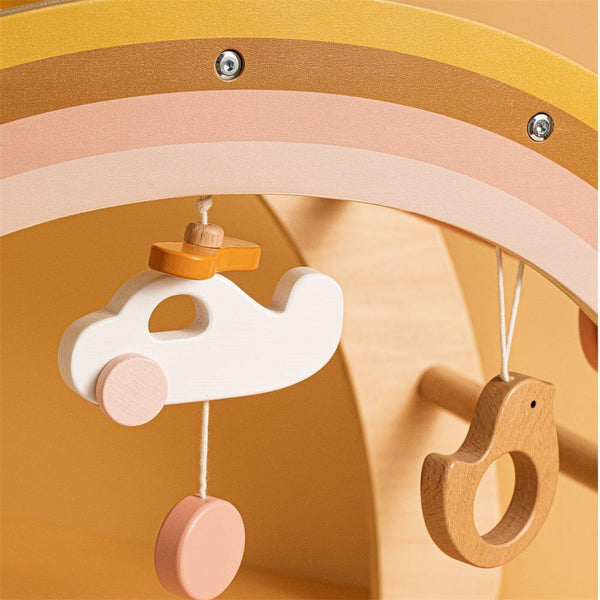
Conclusion
Baby play gyms help your little one grow. They stimulate the senses, build skills, and encourage exploration. As your baby develops, adapt to playtime. Choose alternatives and create a joyful learning experience. With a suitable play gym, you pave the way for a delightful play journey.


